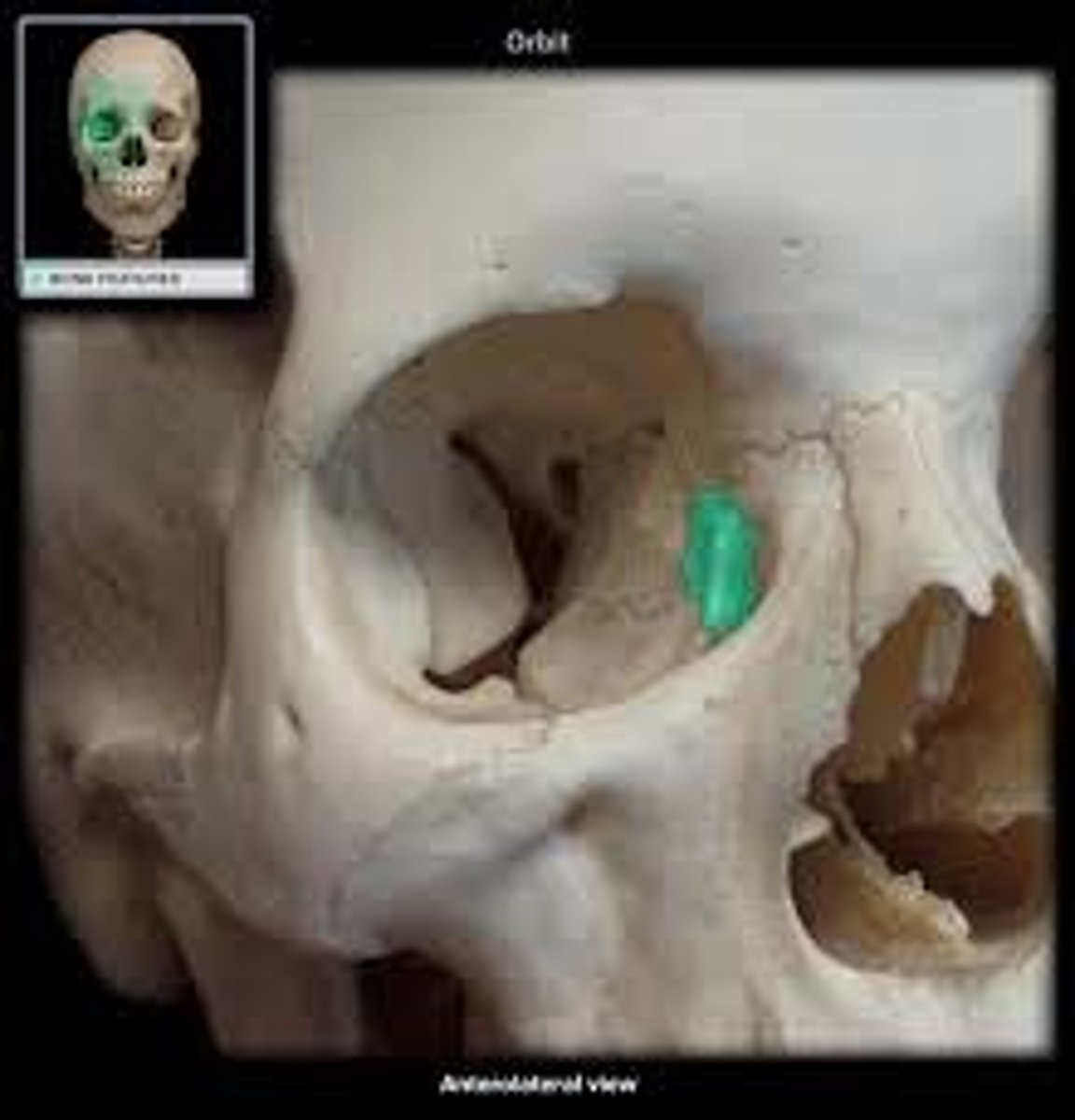bones of axial skeleton
1/156
There's no tags or description
Looks like no tags are added yet.
Name | Mastery | Learn | Test | Matching | Spaced |
|---|
No study sessions yet.
157 Terms
Long Bones
Ex. Femur, tibia, fibia
Short Bones
Ex. Tarsals, Carpals
Flat Bones
Ex. Skull bones, Ribs, scapula
Irregular Bones
Vertebrae, Facial Bones
Sesamoid Bone
Develop in the tendons
Compact Bone
Dense with not a lot of space in them, Normally found in the middle section of a long bone
Cancellous Bone
Also spongey, Have trabeculae and align themselves across lines of stress. Have lots of little holes and look almost like scaffolding
Projections
Areas that stick out/bumps due to muscle or joint attachment
Process
A projection
Tuberosity
A large roughened process on a one that is an attachment site for a muscle
Tubercle
Small, Rounded projection
Trochanter
Very large boney process
Cornu
Horn shaped projection
Epicondyle
near or above a condyle
Crest/Crista
Prominent Ridge
Line
low ridge
Spine
very high, sharp, pointer ridge
Head
Bony expansion
Condyle
Round, knuckle like bump due to articulation with another bone
Ramus
Branch off the main body of a bone
Articular Surface
area where 2 bones come together
Facet
Small, Flat, articular surface
Foramen
hole or small opening in bone
Meatus
canal or tube like opening
Sinus
open cavity in the bone
Fissure
Crack or slit in the bone
Depressions
indented areas due to something sitting against the bone
Fossa
pit in bone where another bone typically fits into
Sulcus
groove
Notch
indentation at the edge of a bone
sutures
joints of the skull that hold everything together
coronal suture
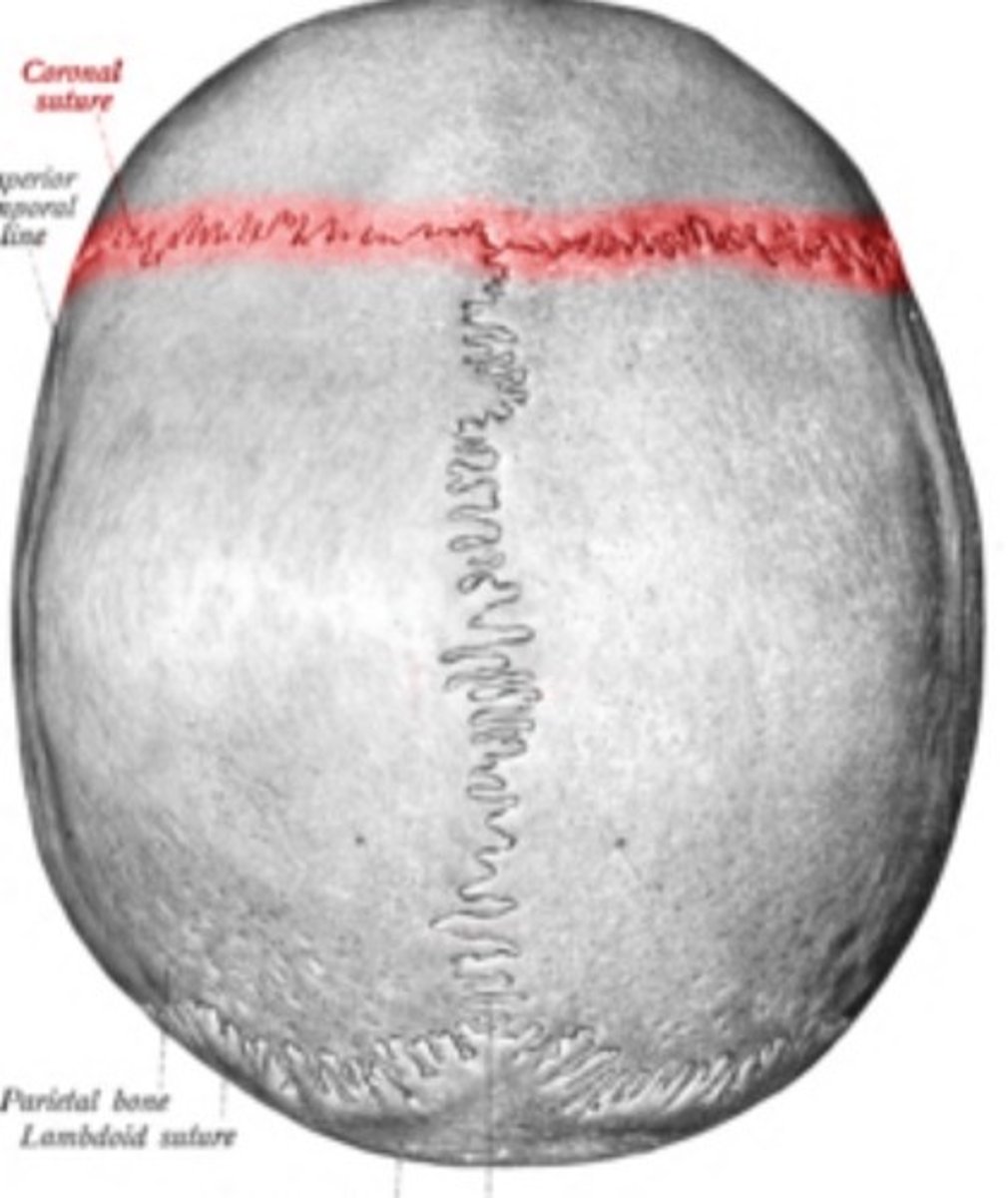
Sagittal suture
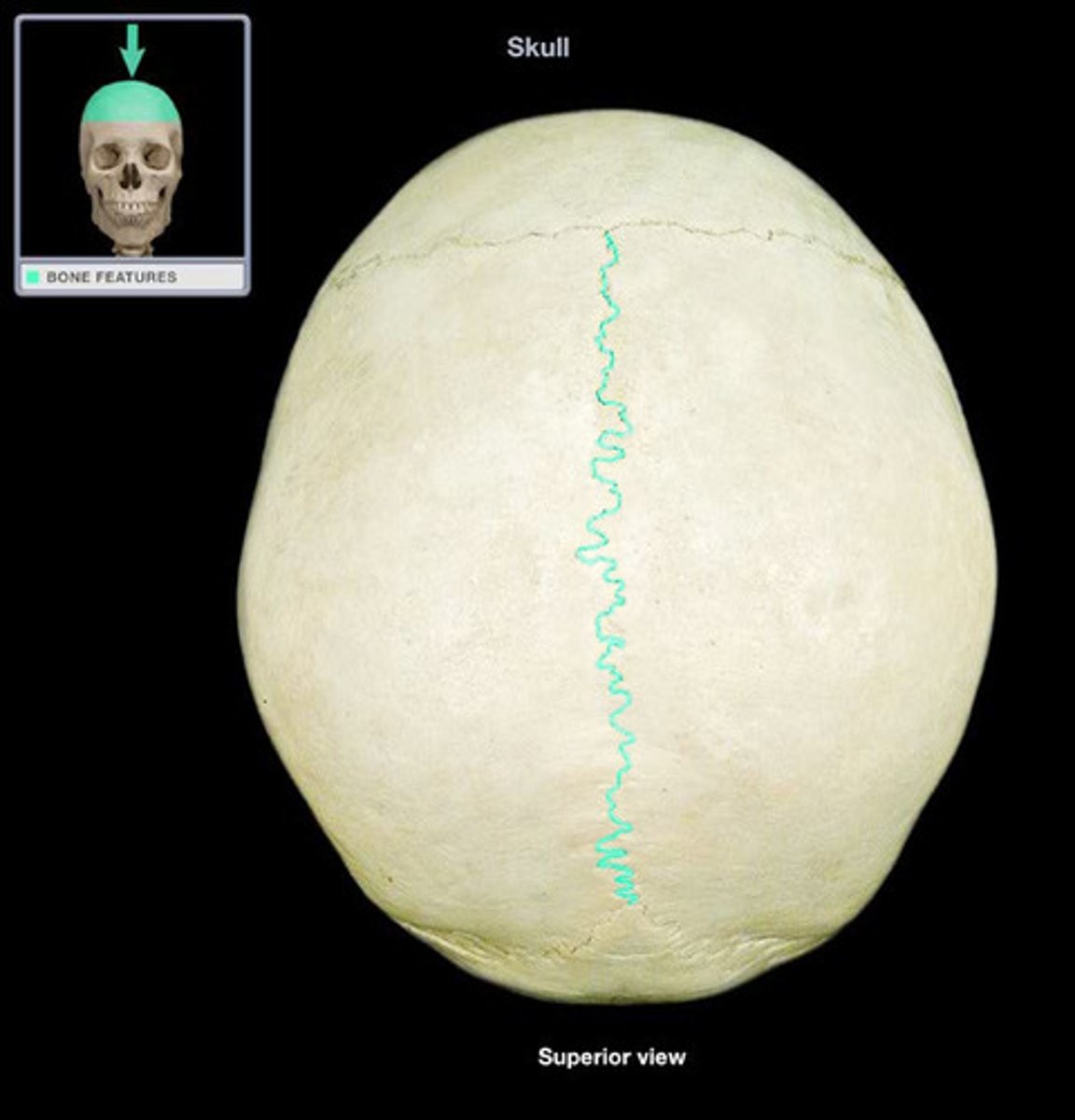
lambdoid suture
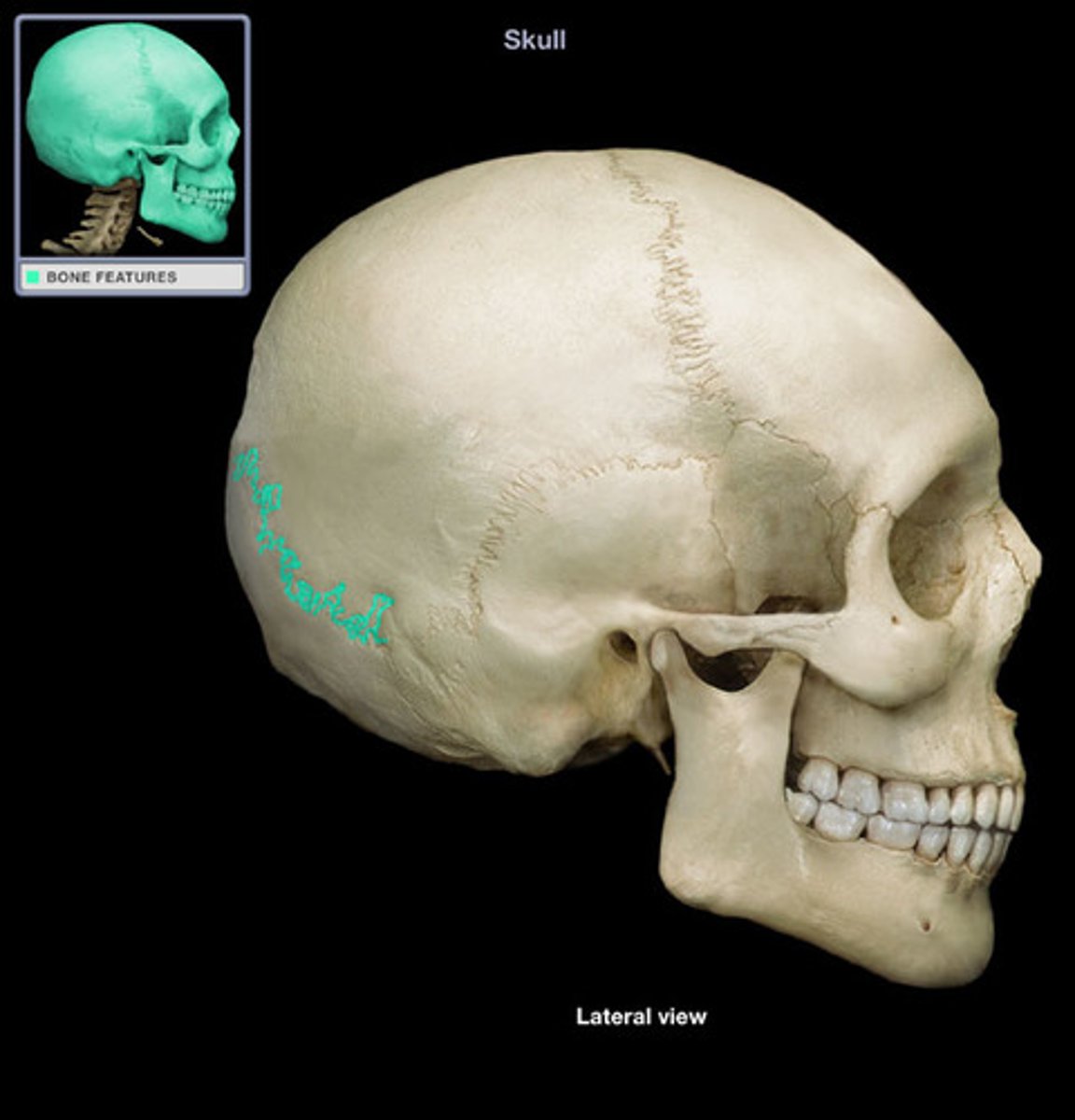
squamous suture
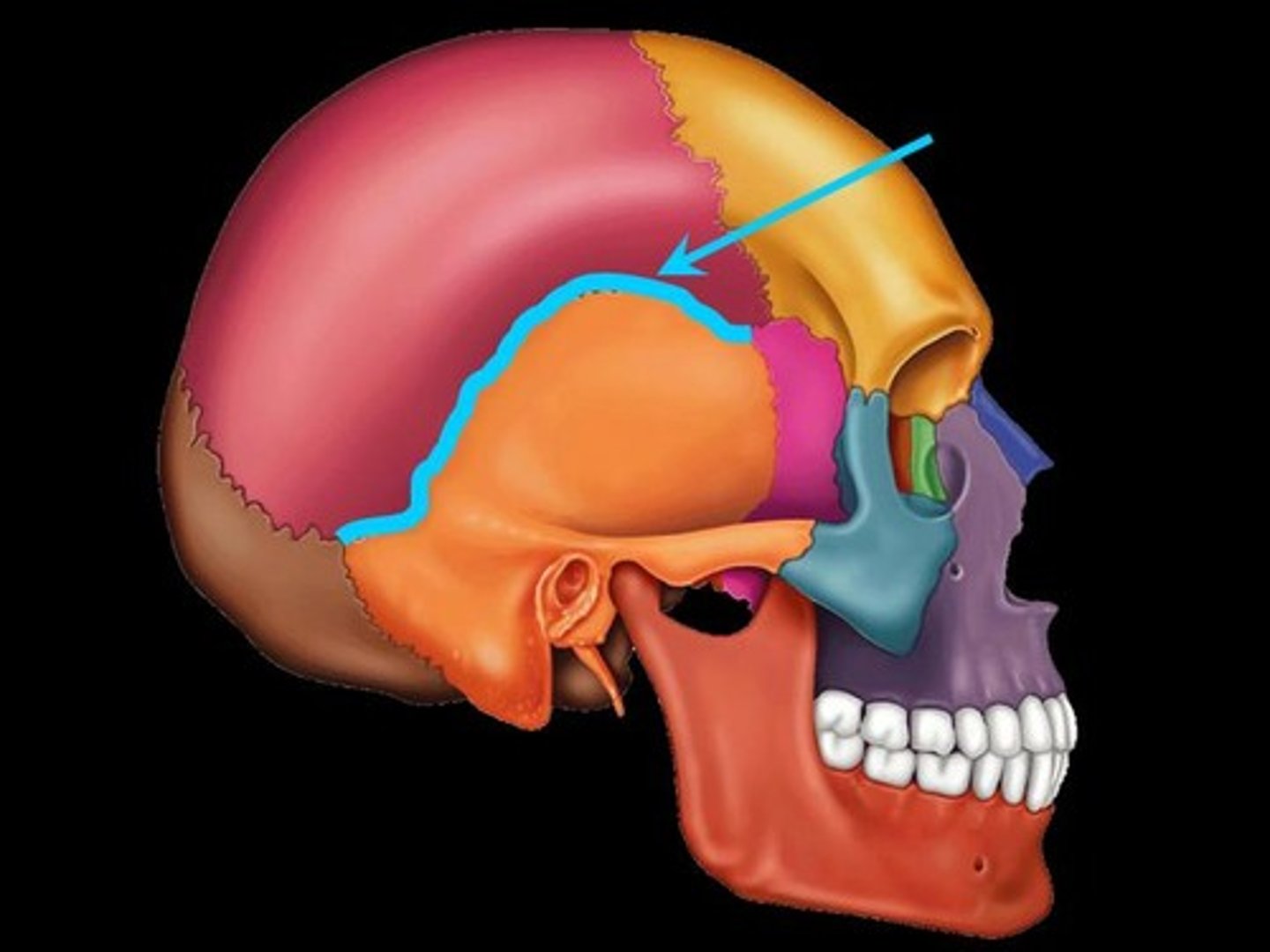
frontal bone
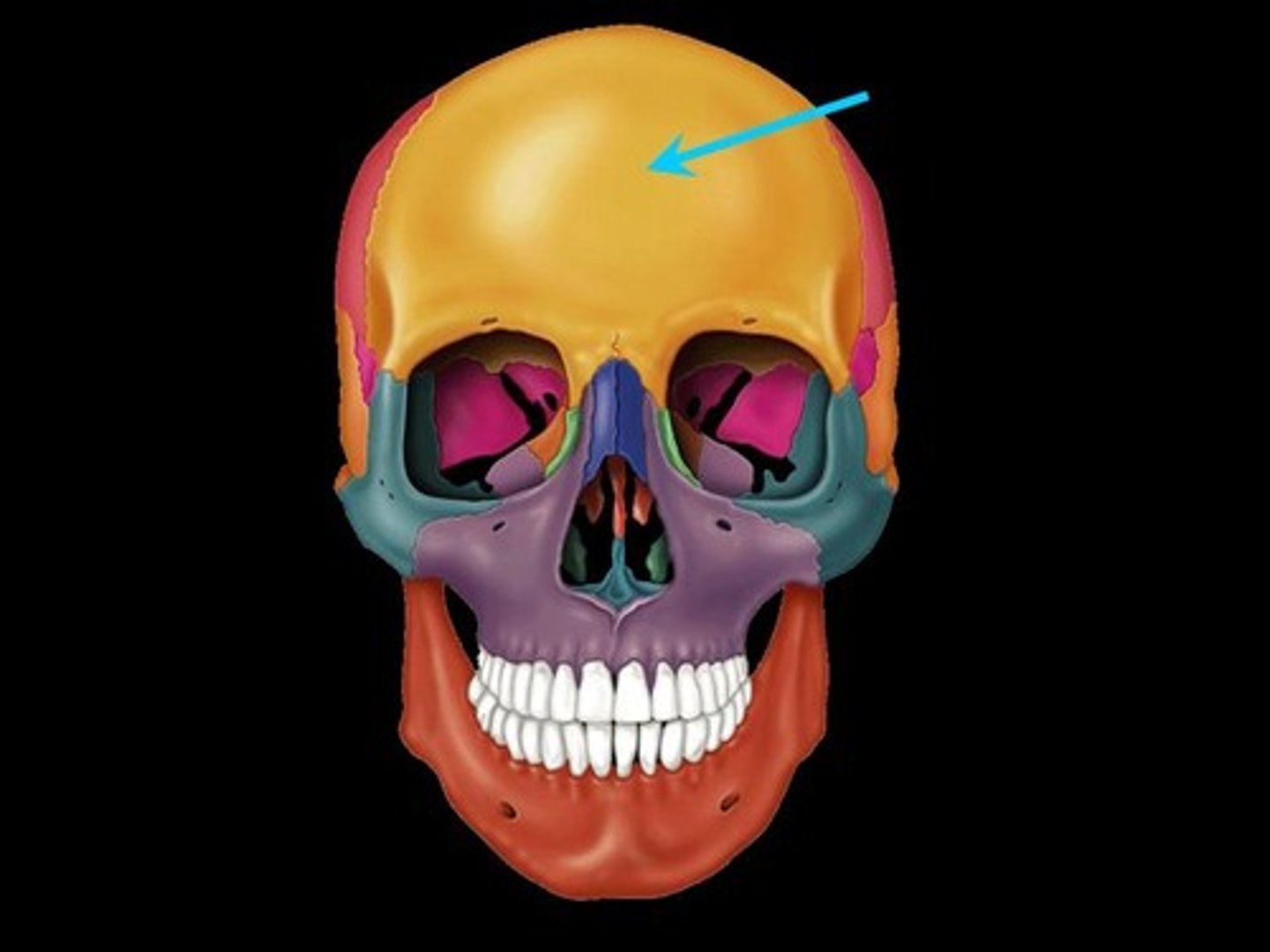
parietal bones
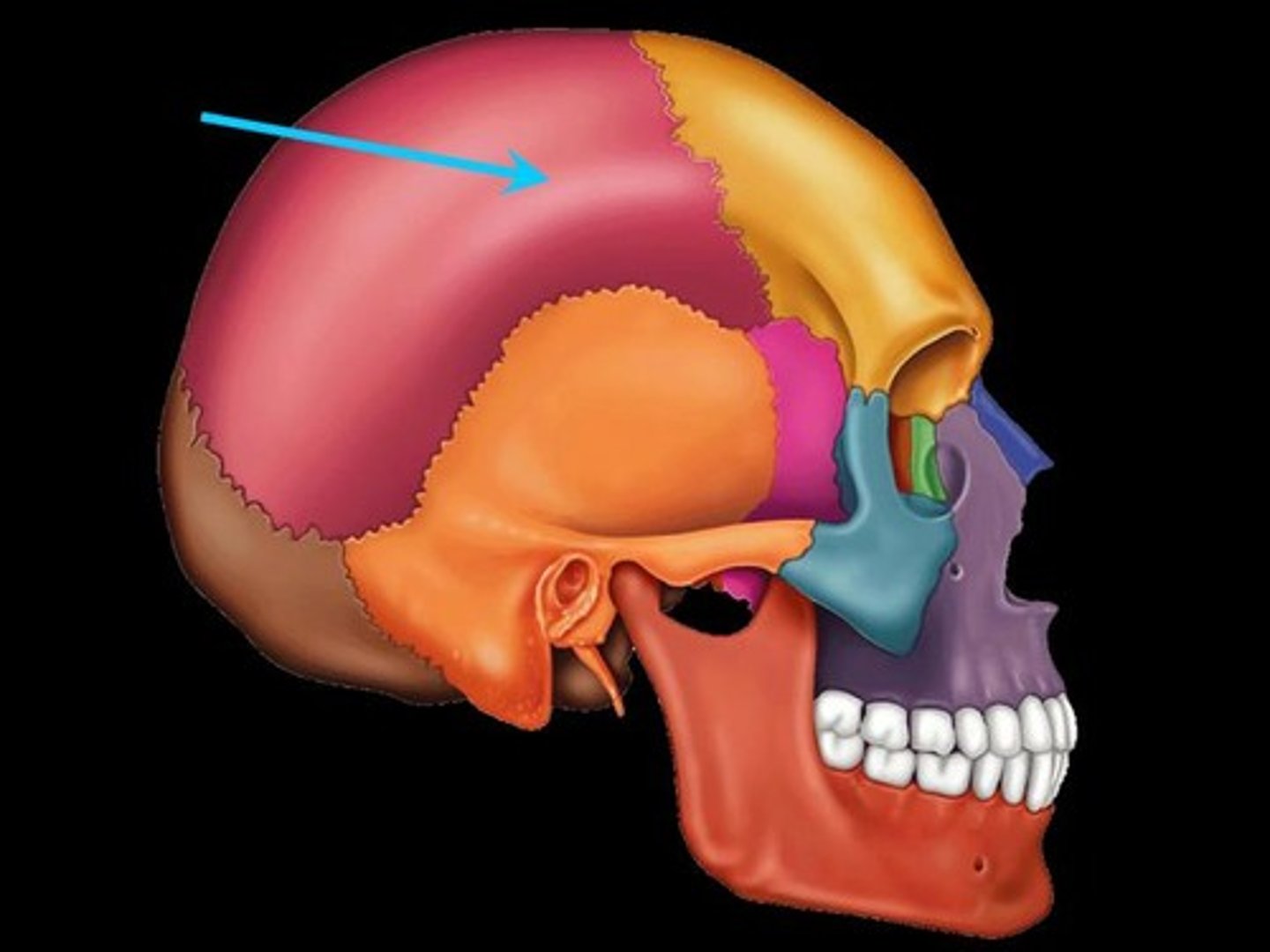
occipital bones
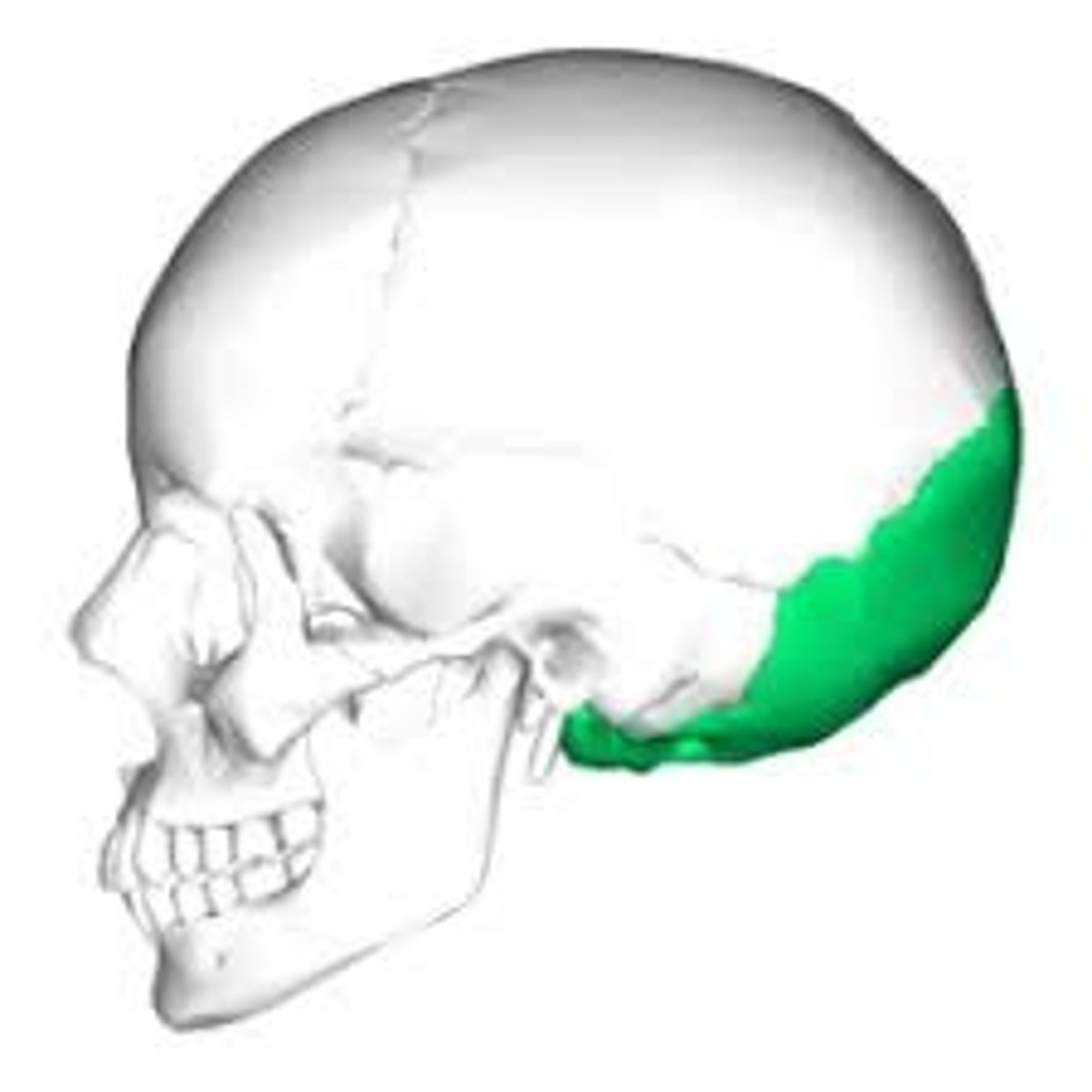
temporal bones
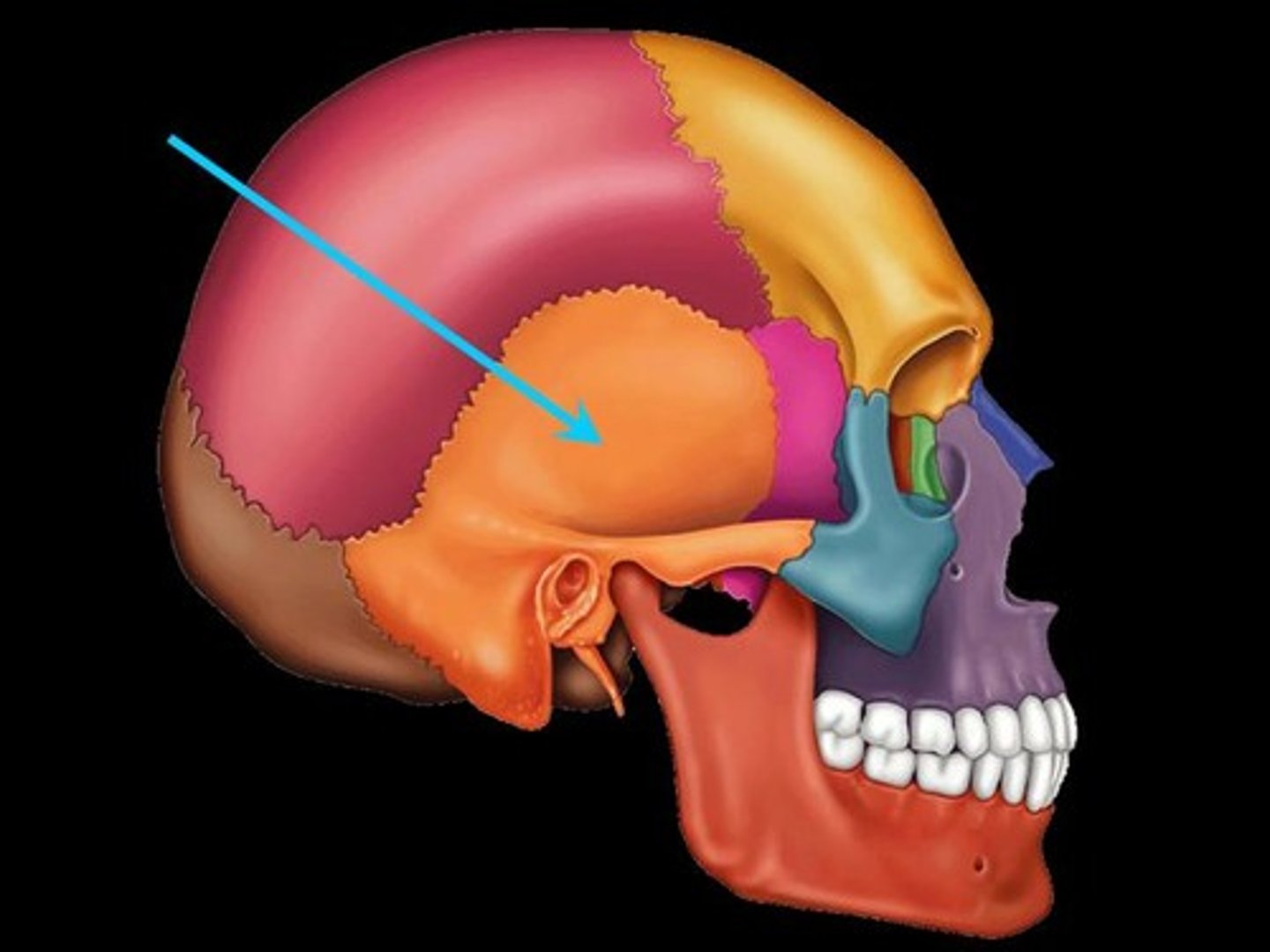
sphenoid bone
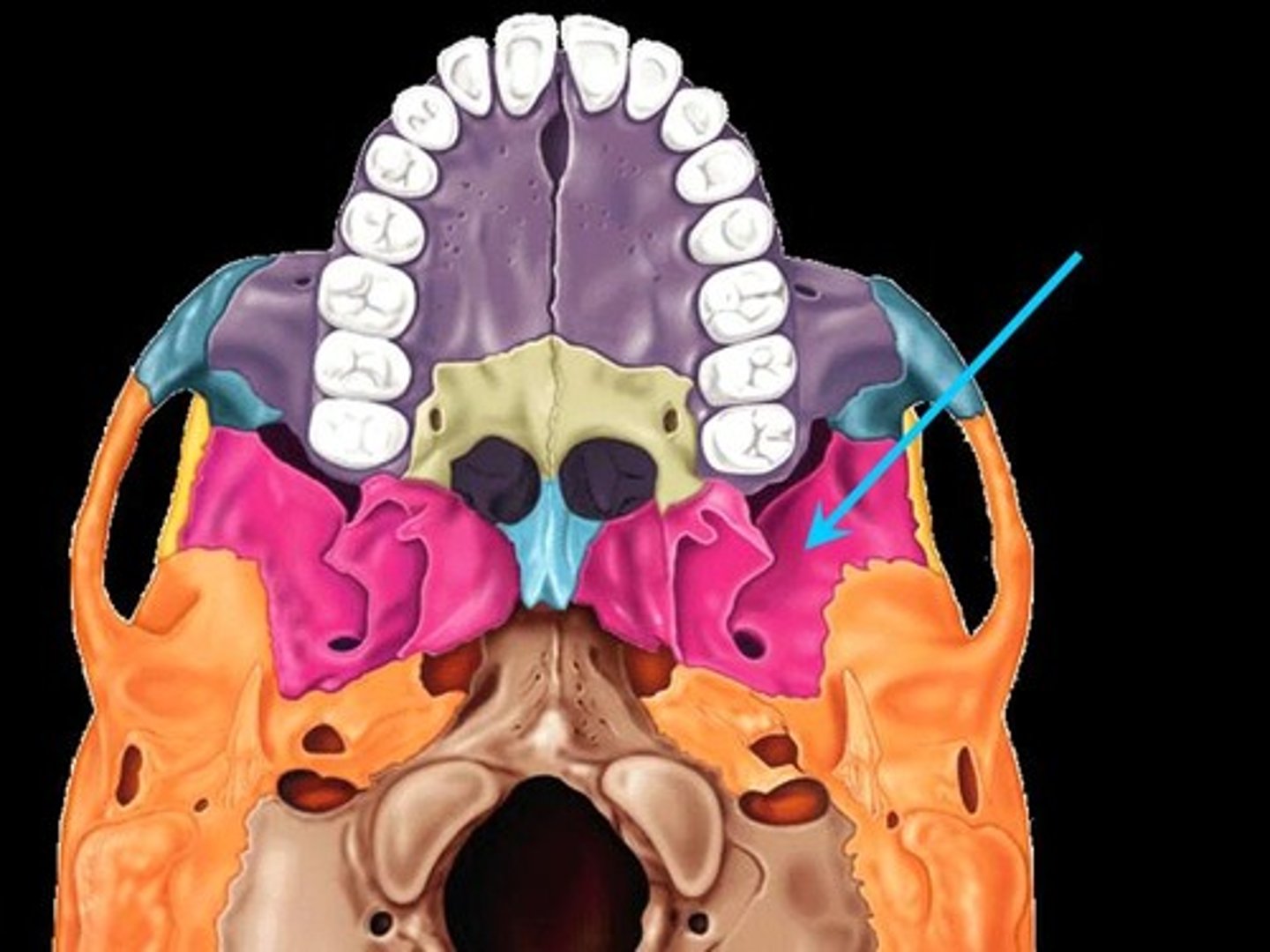
ethmoid bone
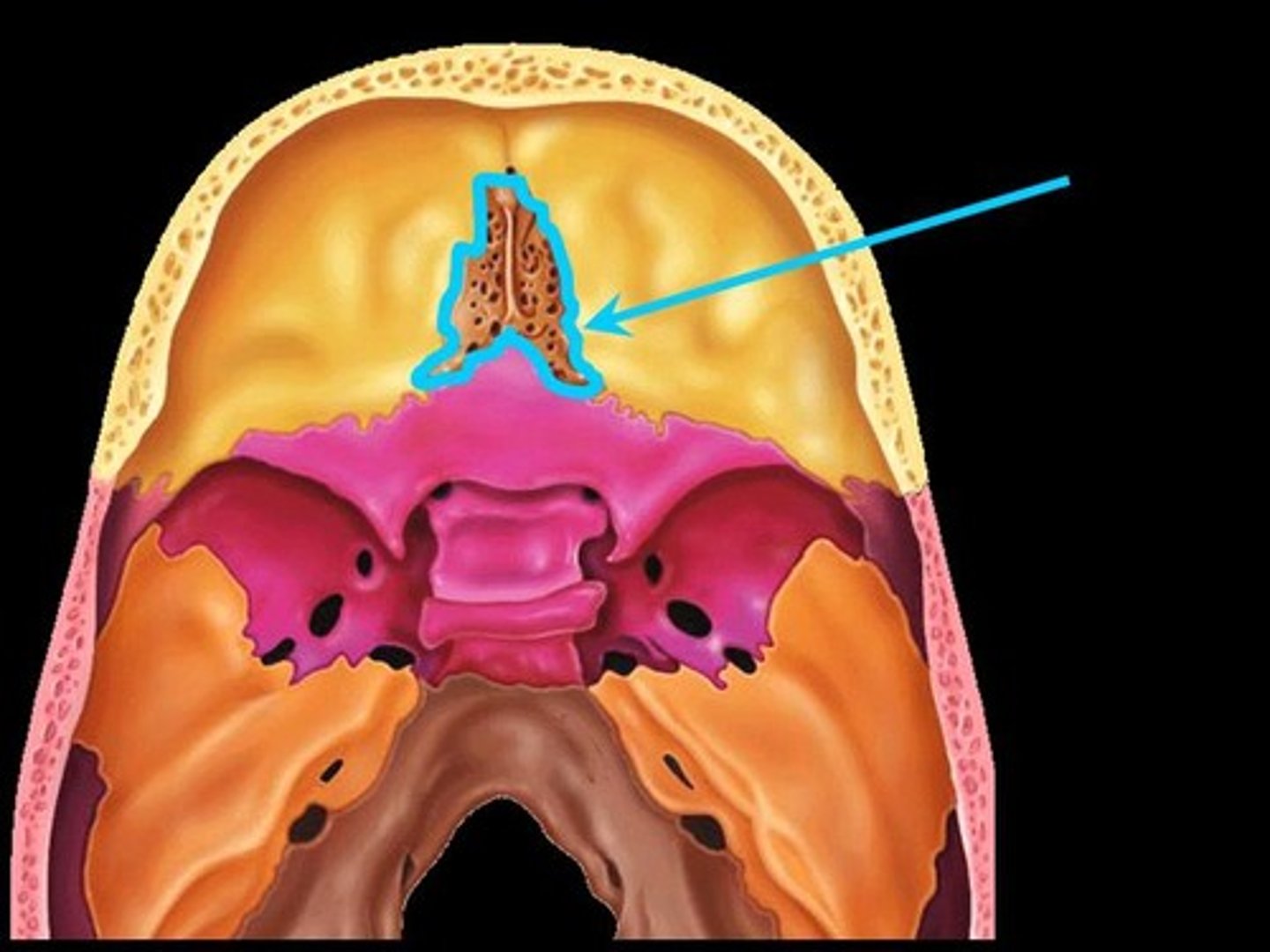
Supra orbital foramina
the hole
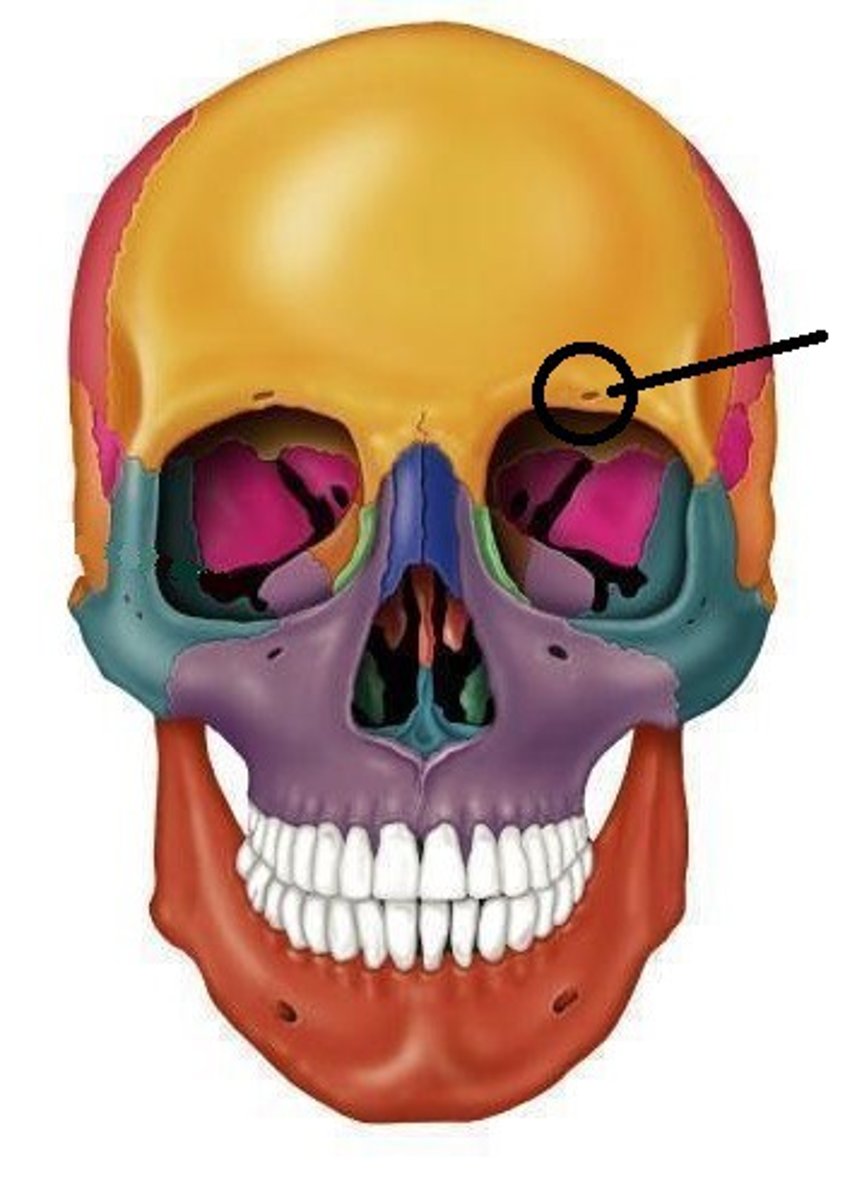
glabella
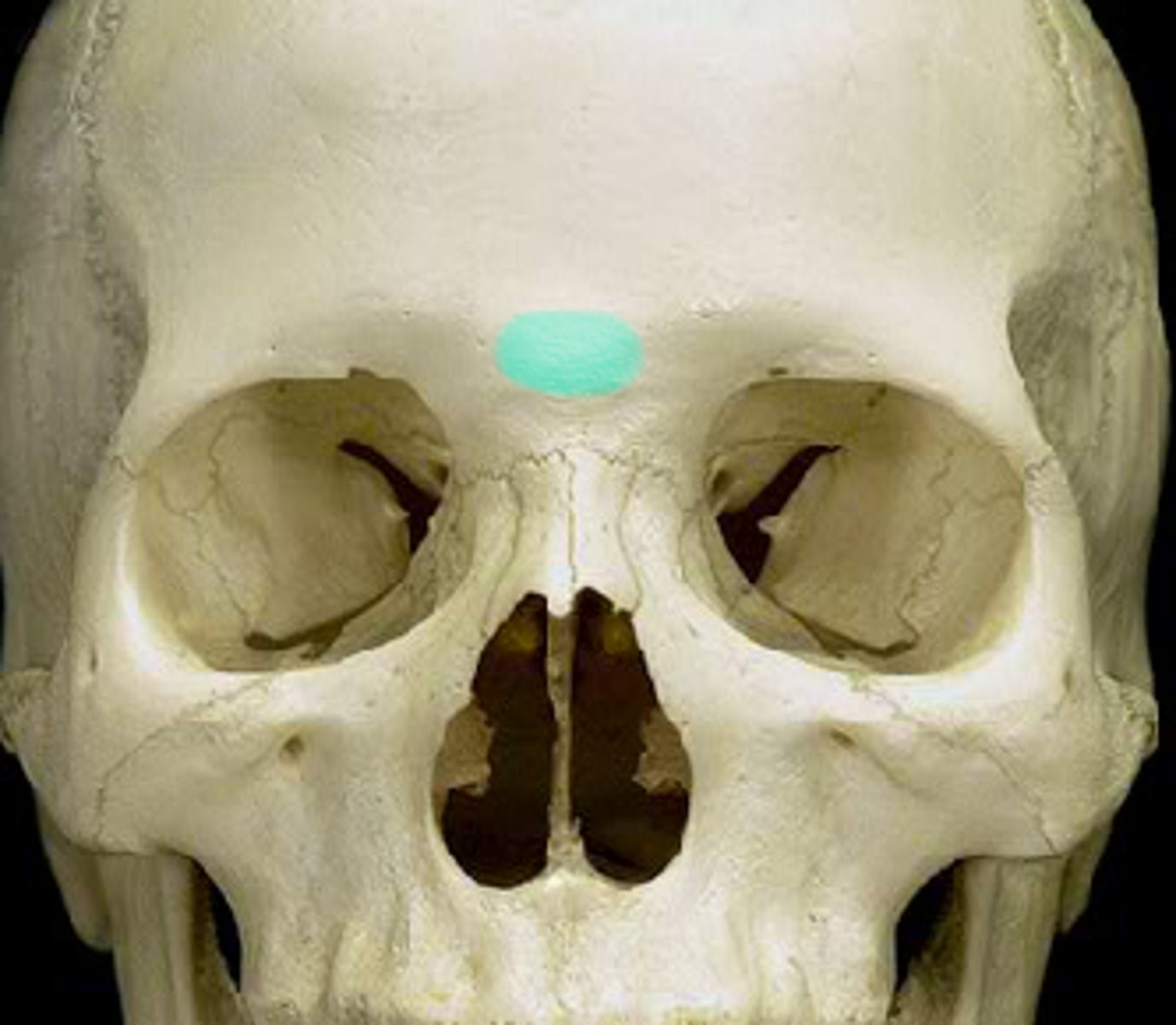
brow ridges
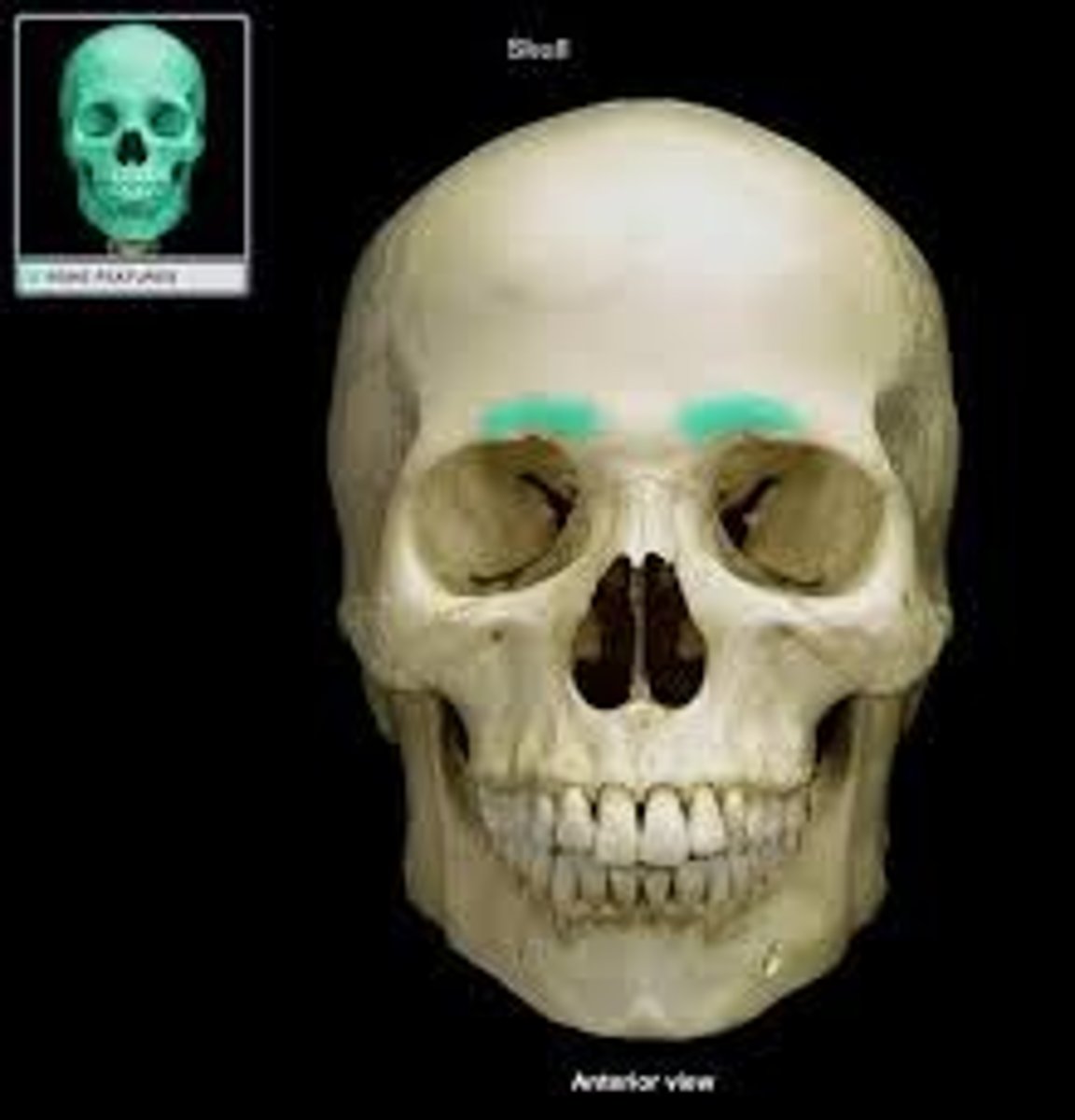
sutural margines of frontal bone
Coronal, Frontonasal, Frontozygomatic
Temporal Lines
holds temporalis muscle
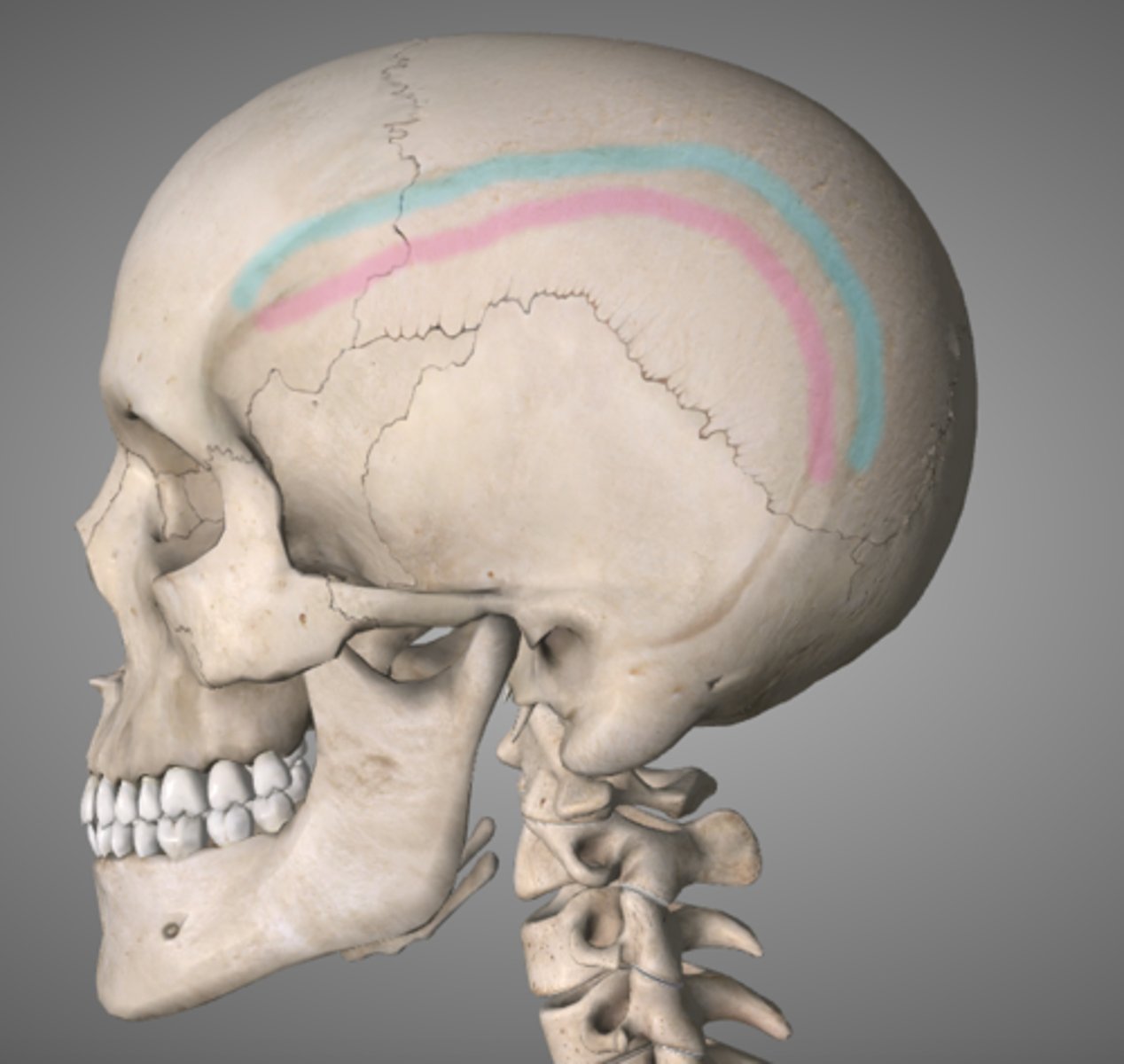
sutural margins of parietal
Coronal, Sagittal, squamosal and lambdoidal
basal portion of occipital bone
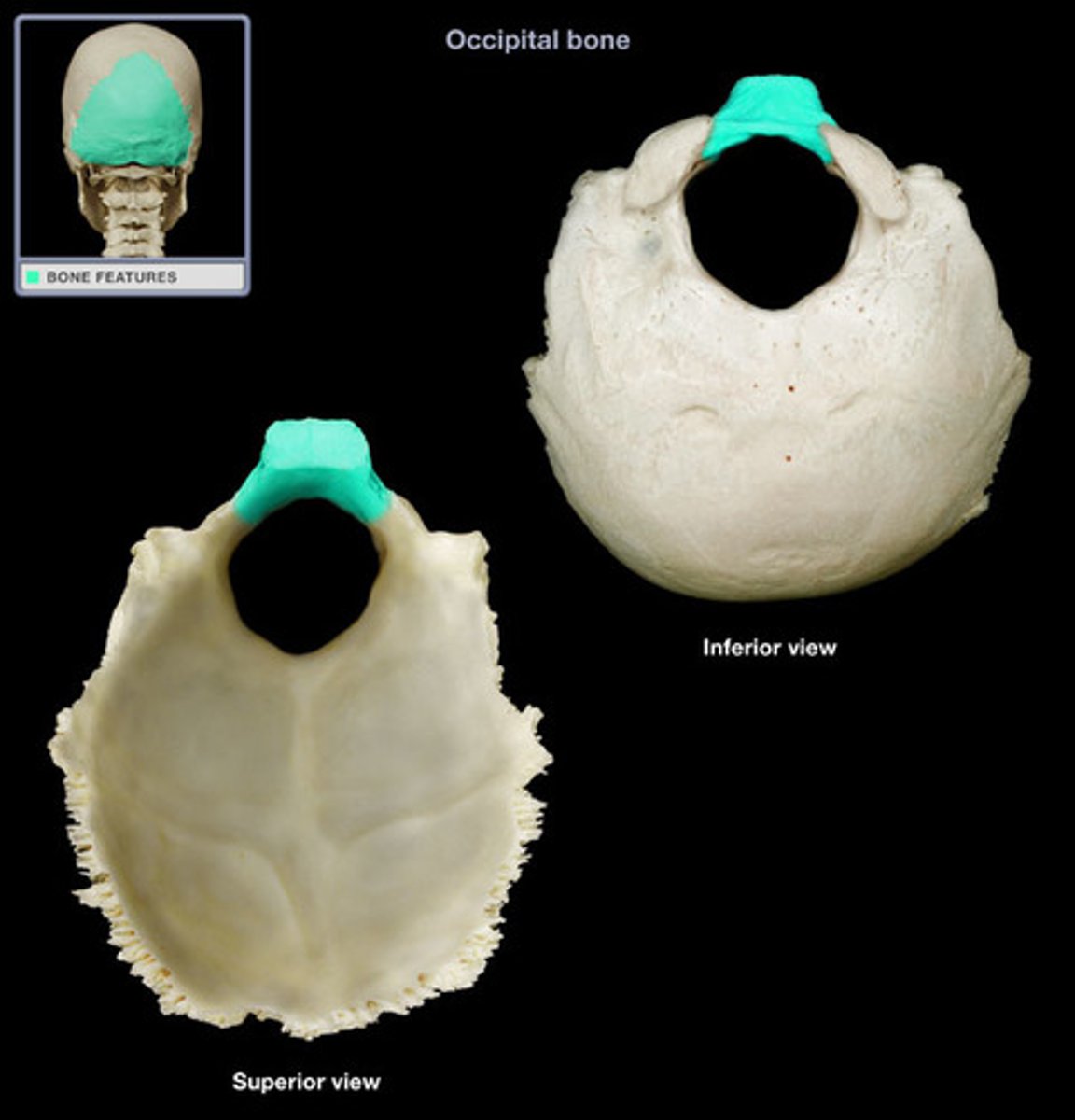
squamous portion of occipital bone
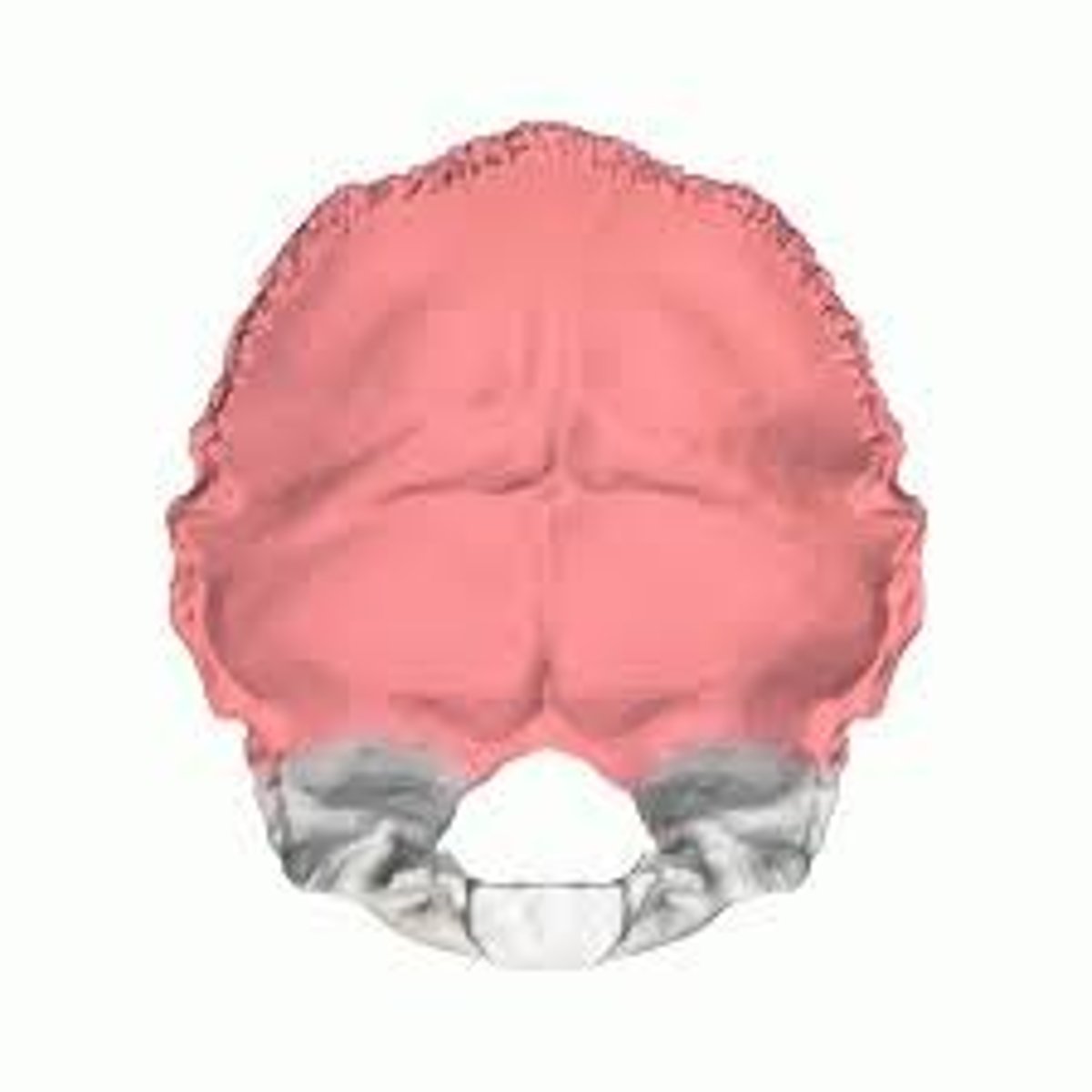
external occipital protuberance
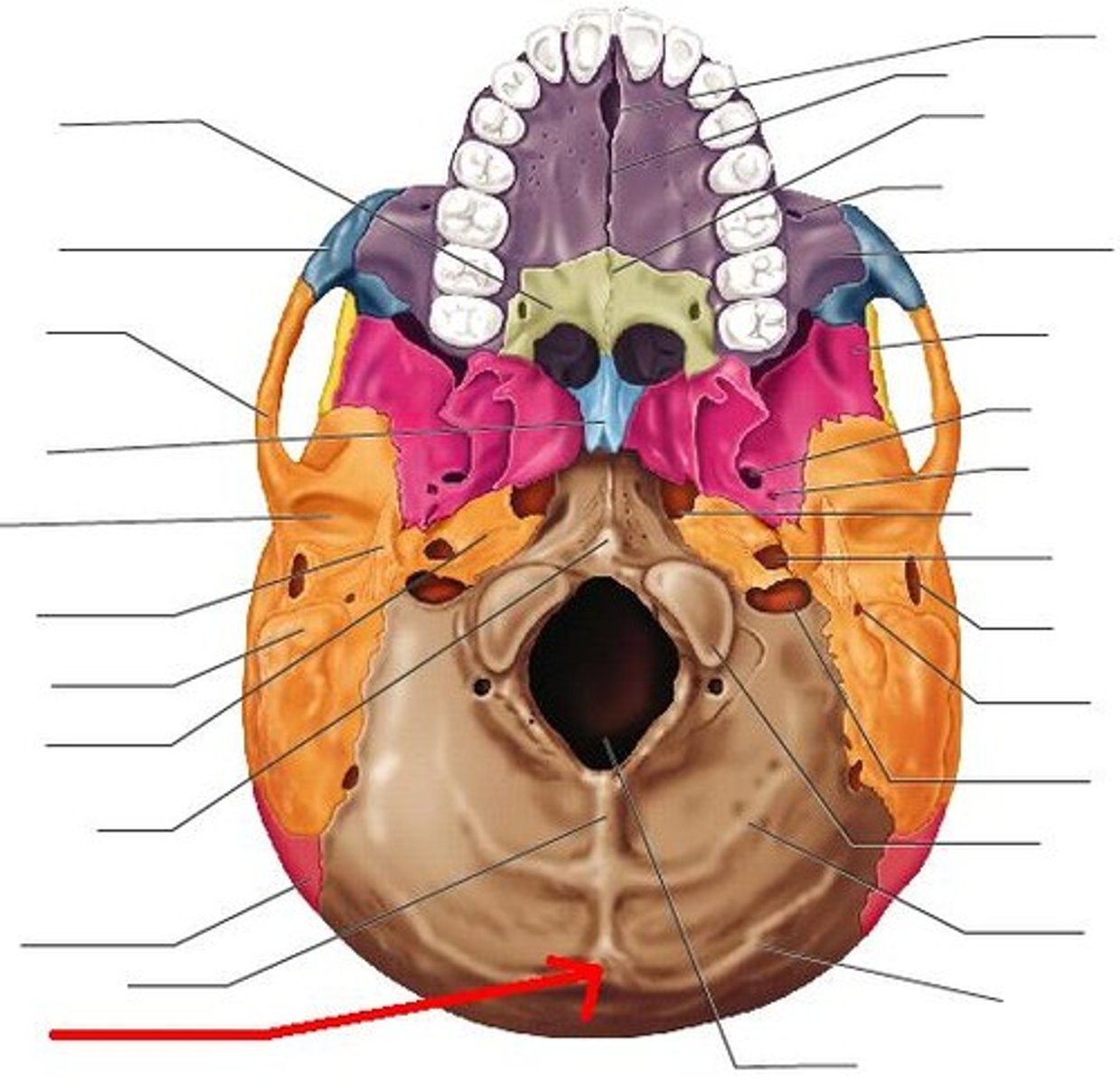
superior nuchal lines
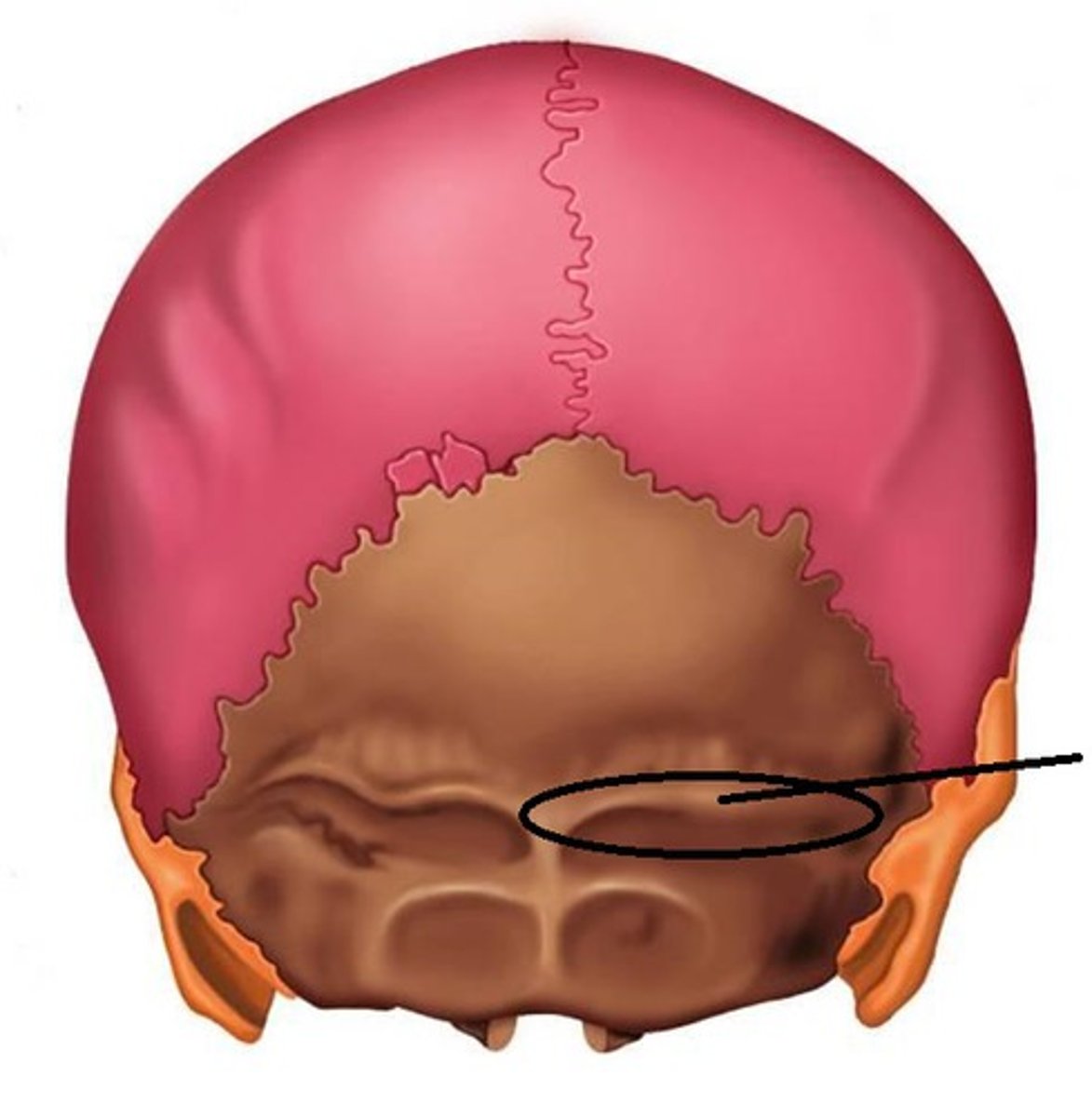
inferior nuchal lines
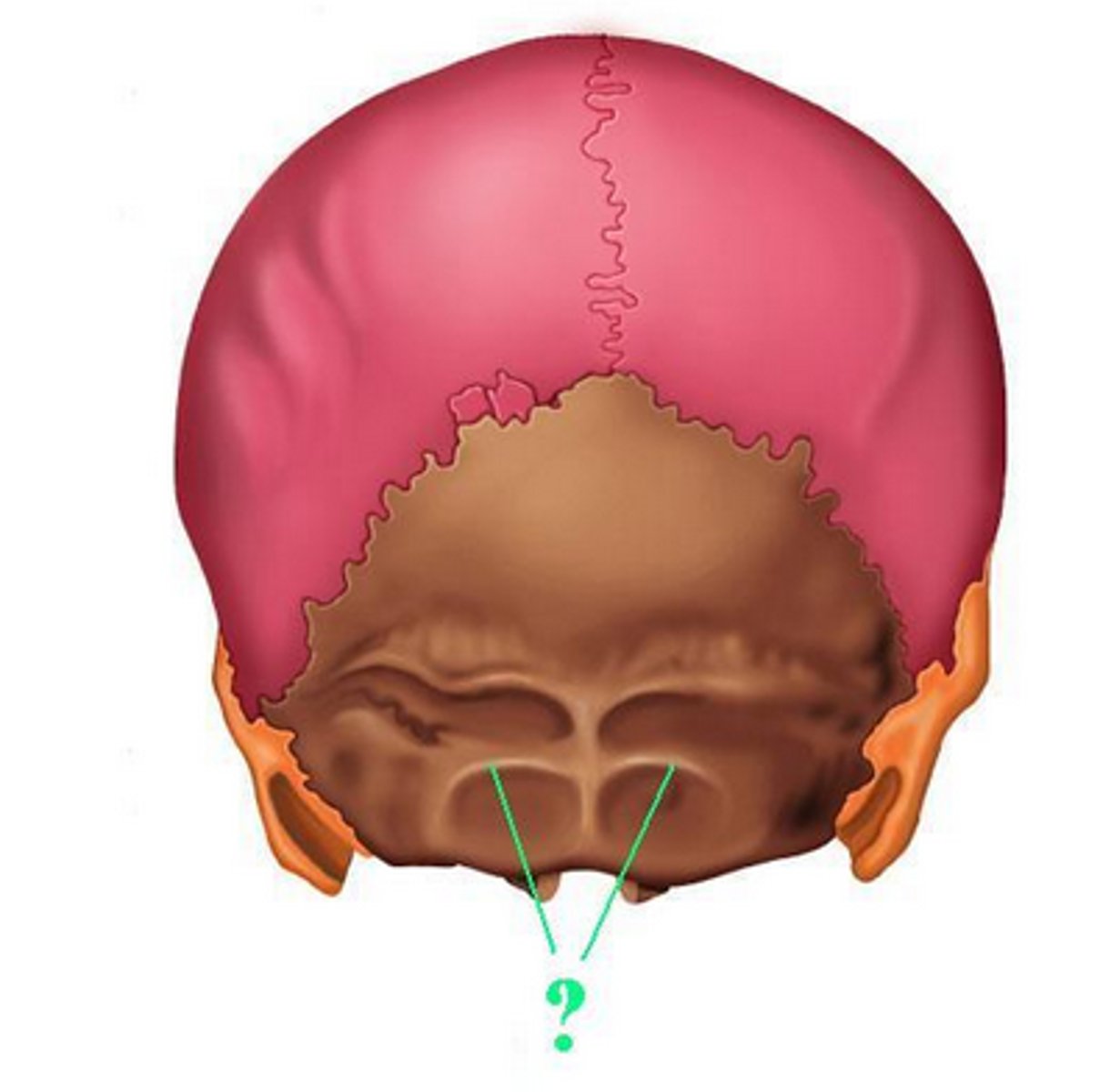
occipital condyles
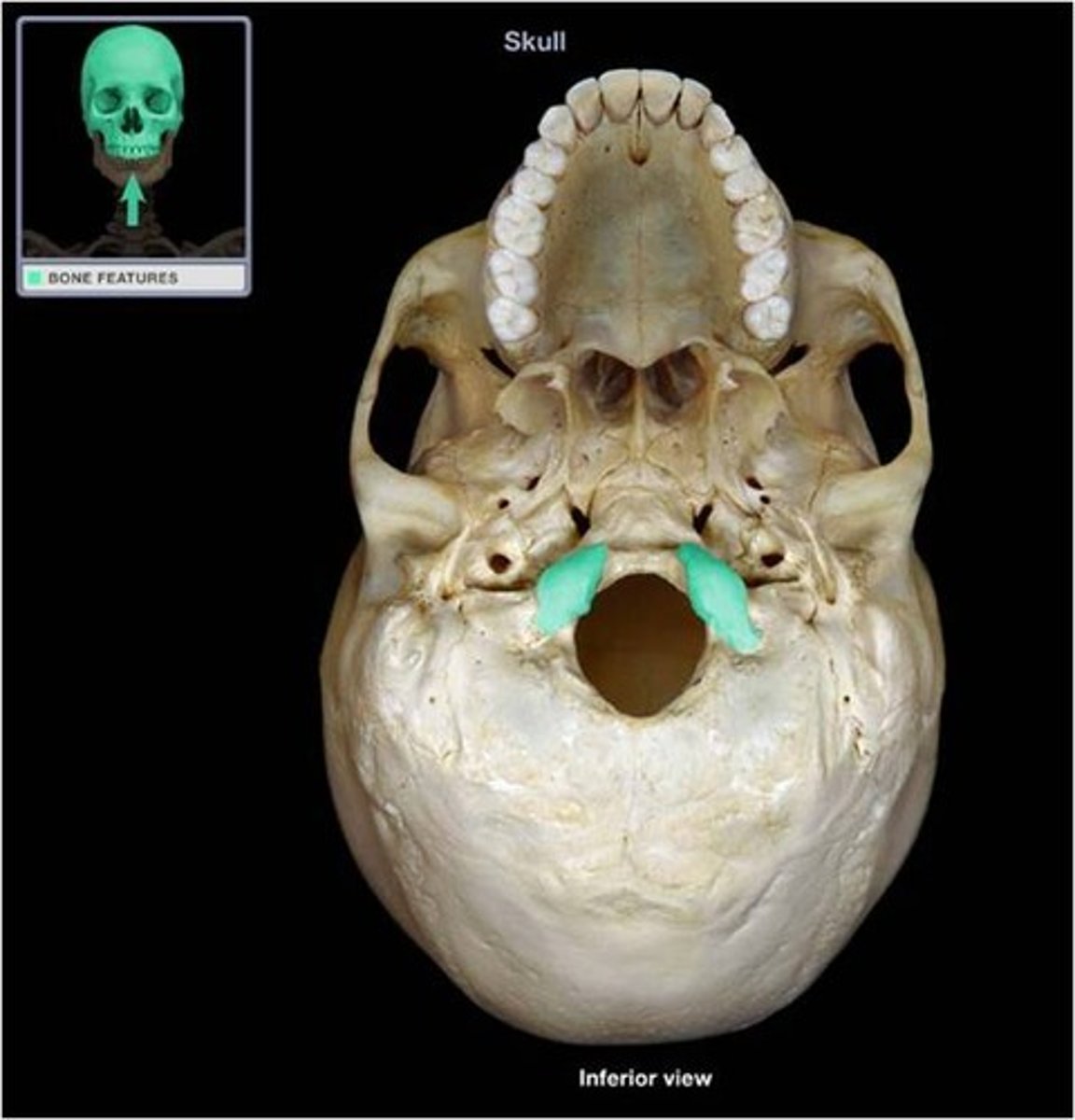
what do occipital condyles articulate with
C1 or Atlas
foramen magnum
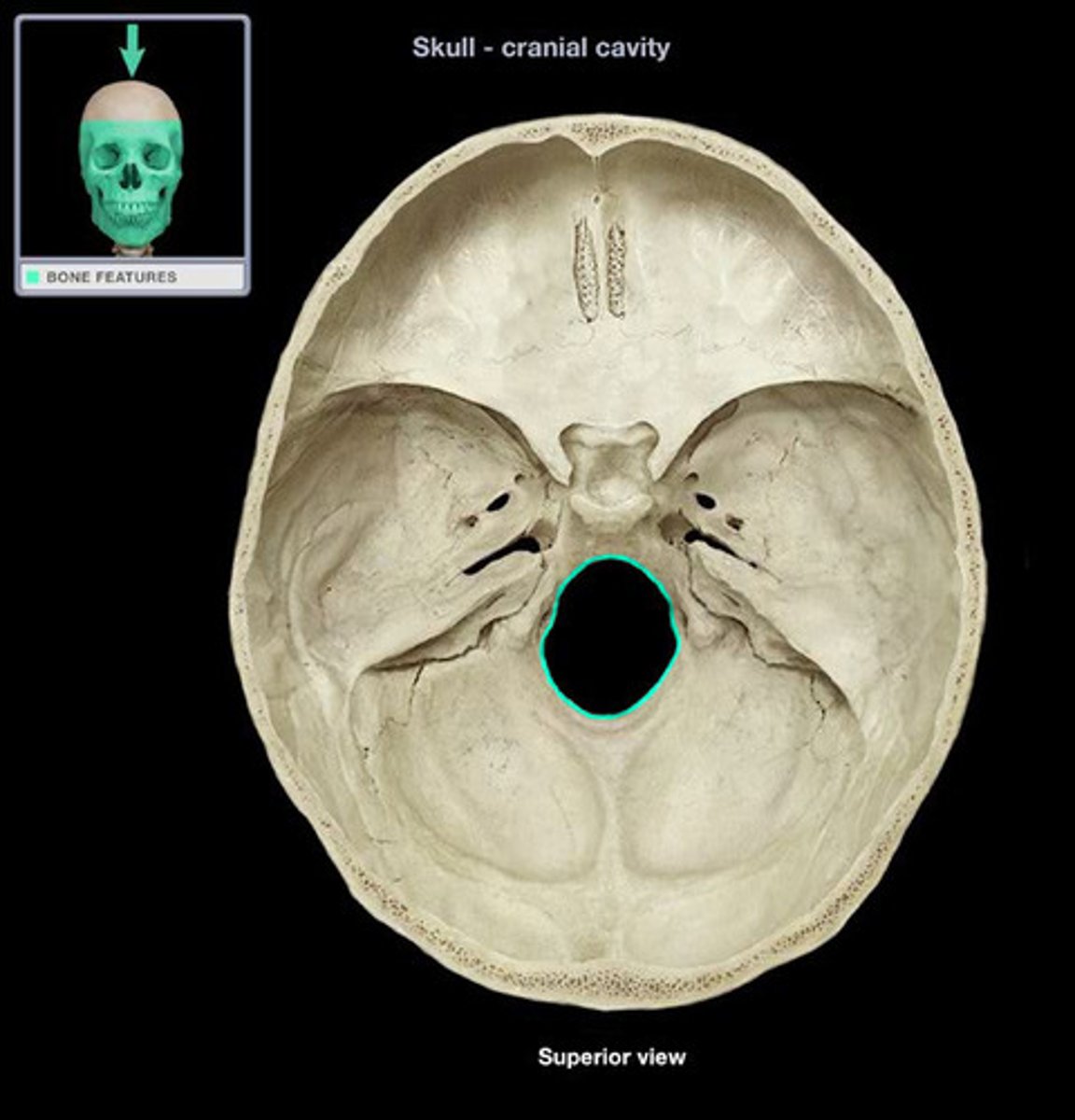
hypoglossal canal
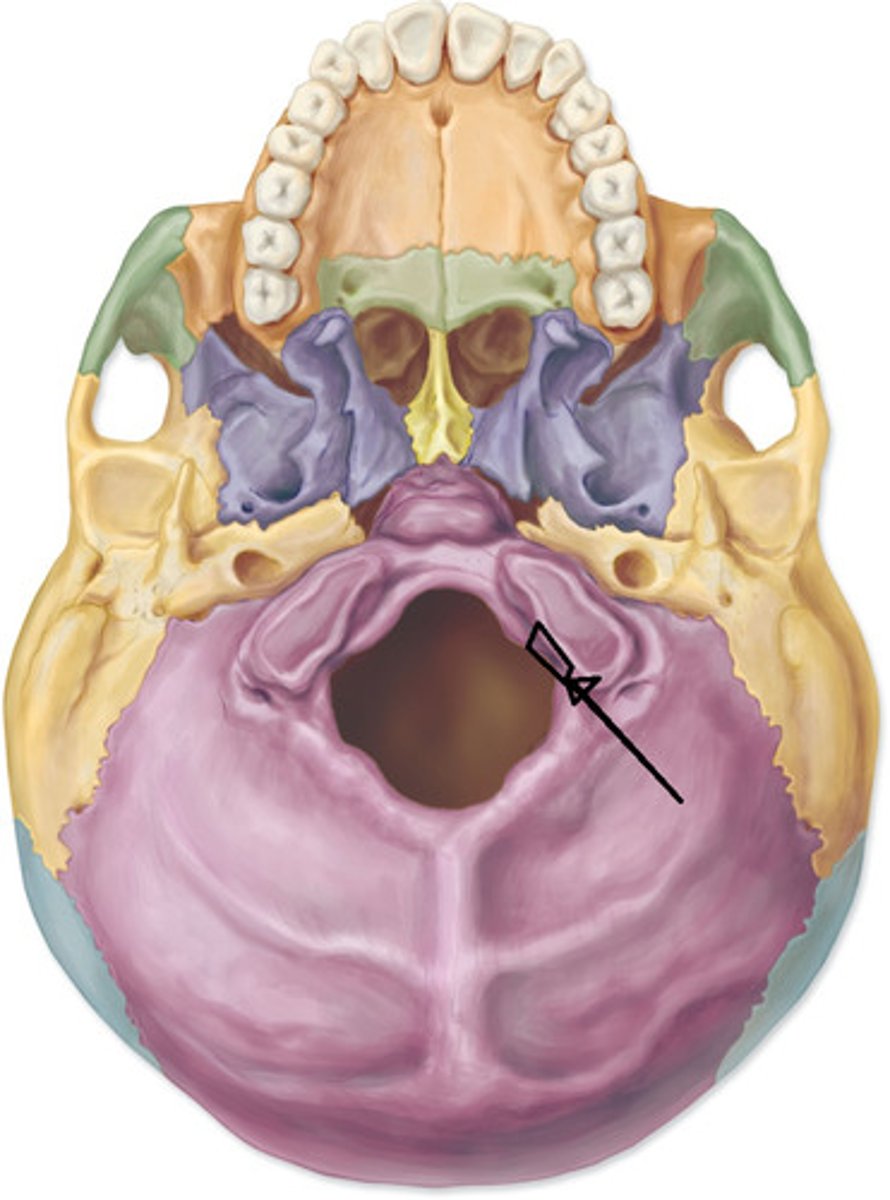
sutural margins of occipital
lambdoidal, squamosal
squamous portion of temporal bone
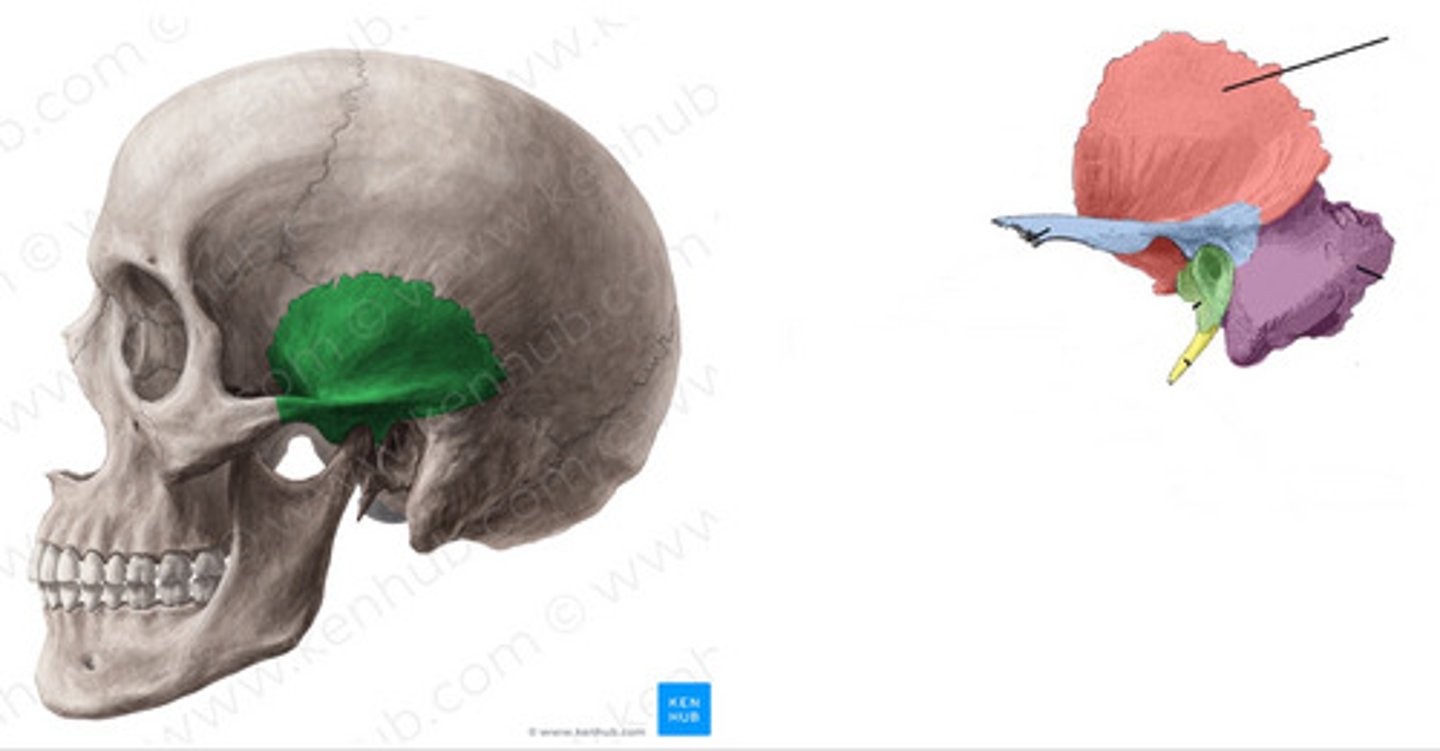
tympanic portion of temporal bone
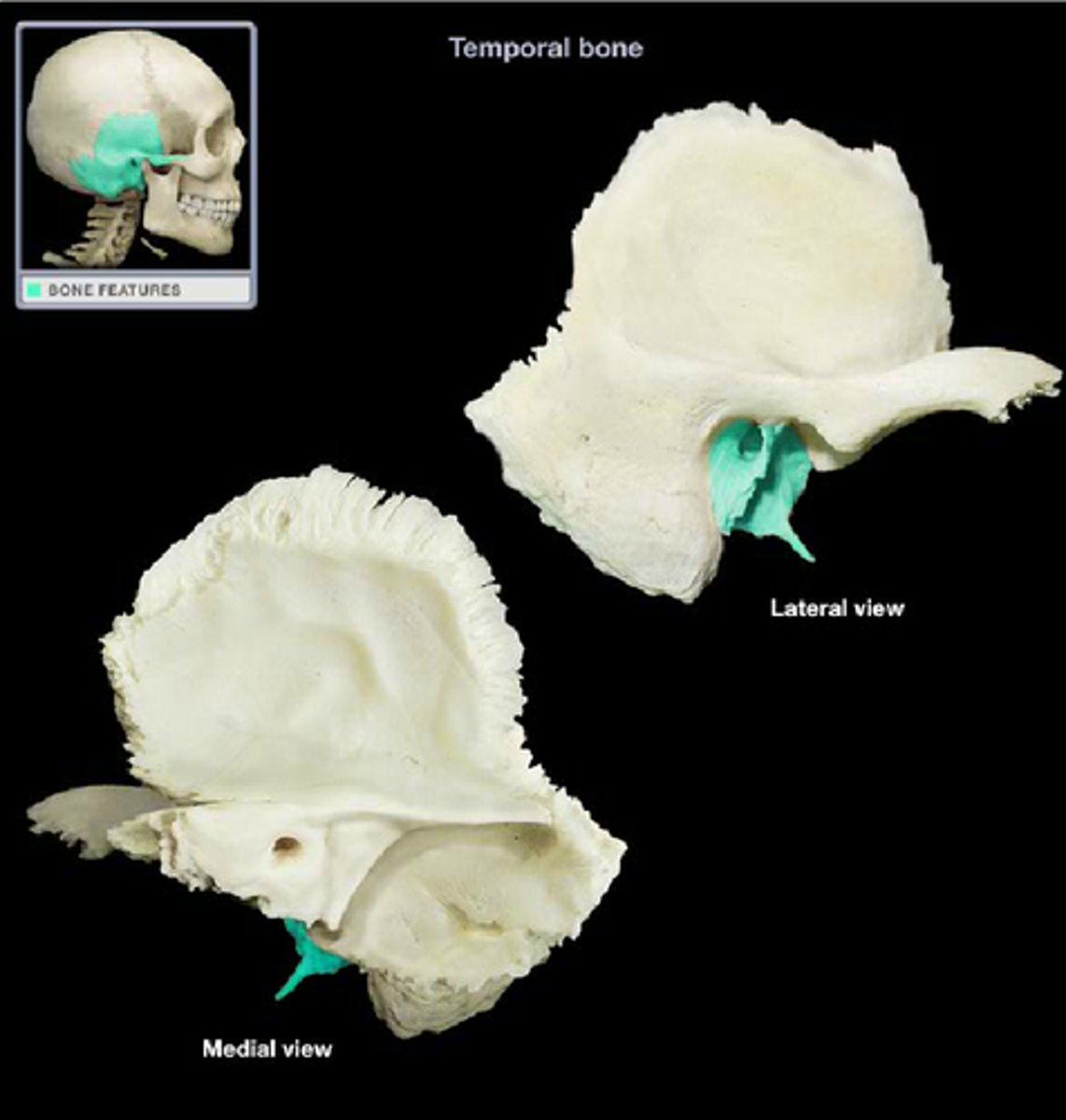
mastoid portion of temporal bone
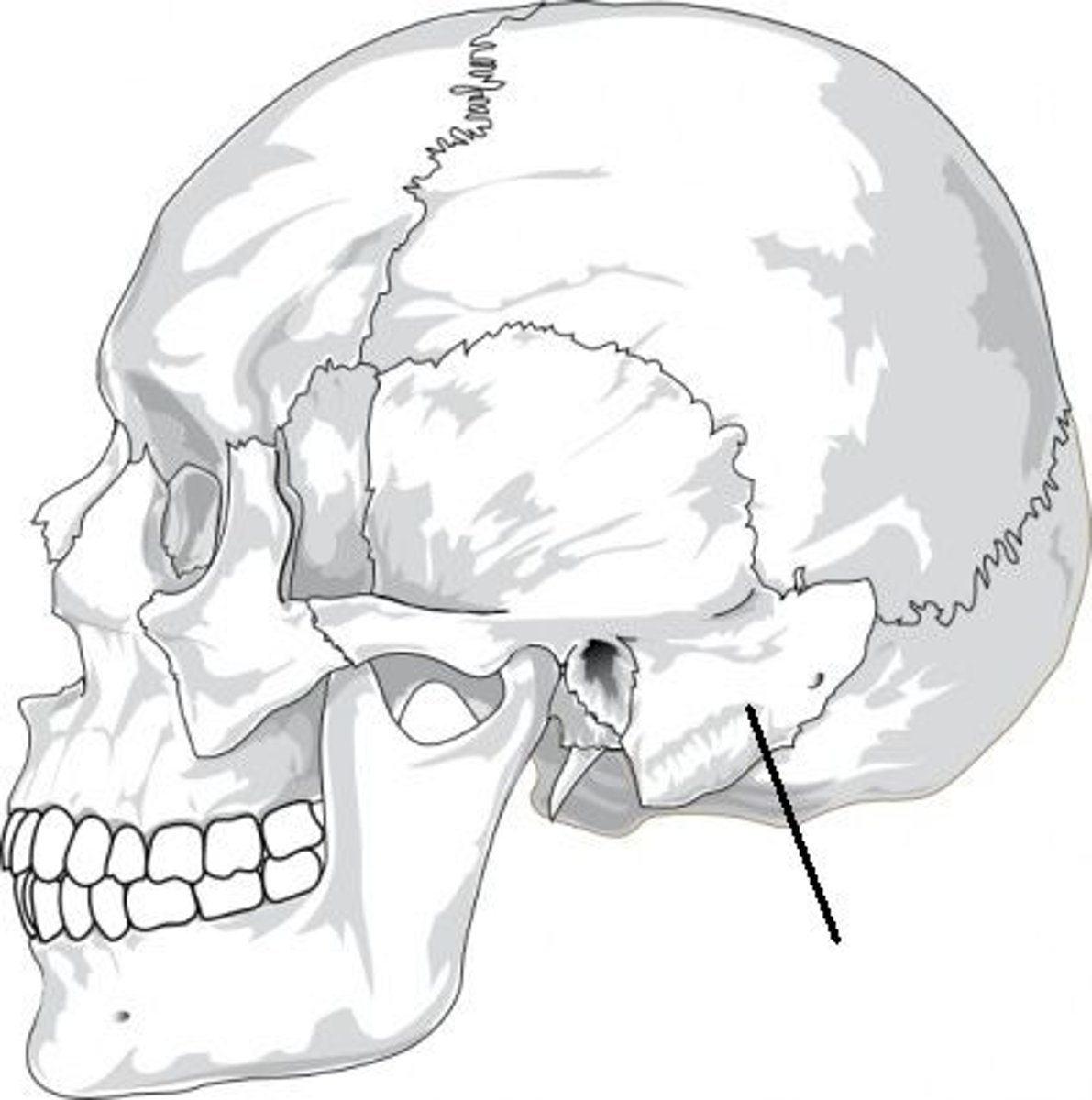
external auditory meatus
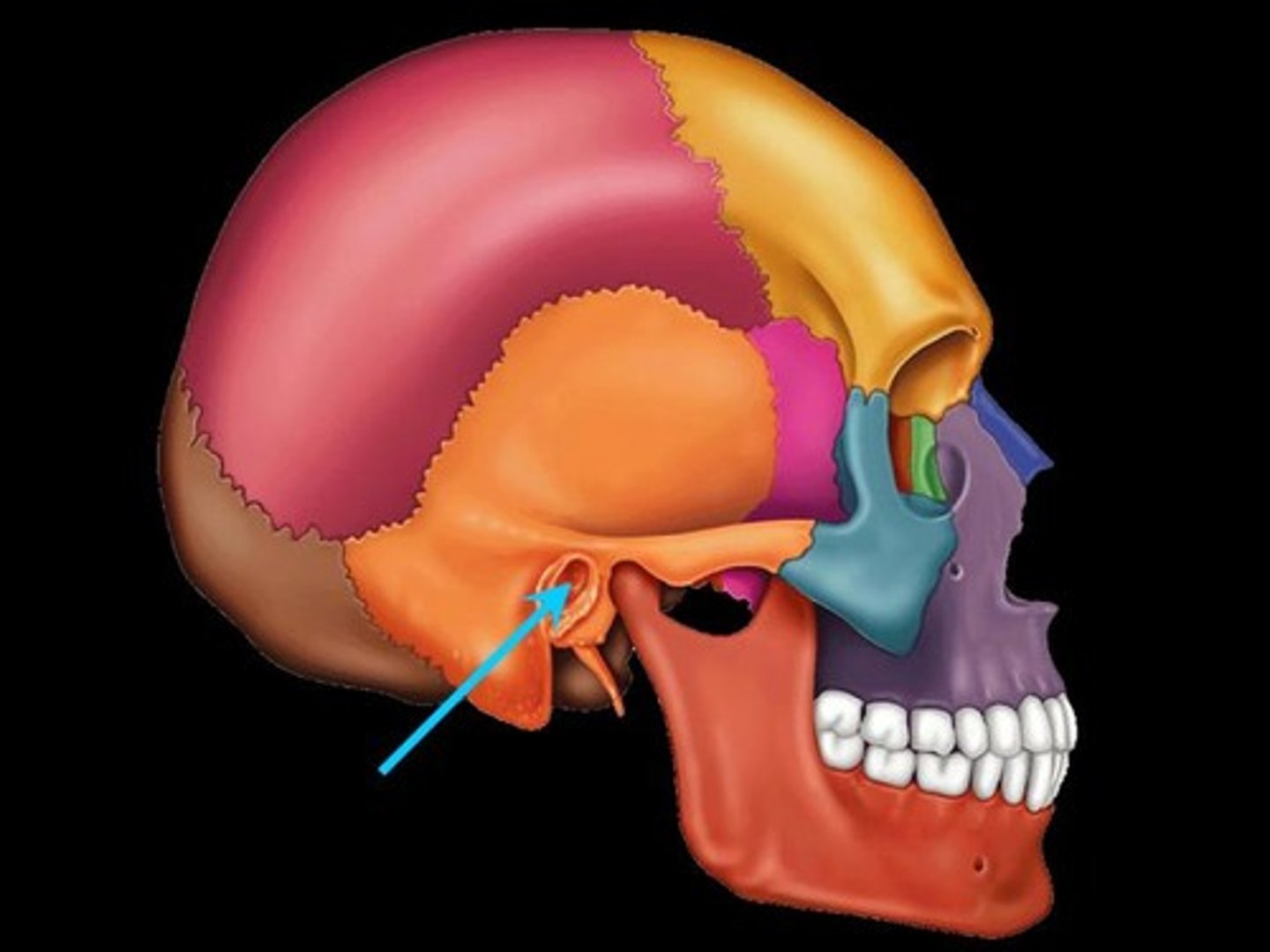
internal acoustic meatus
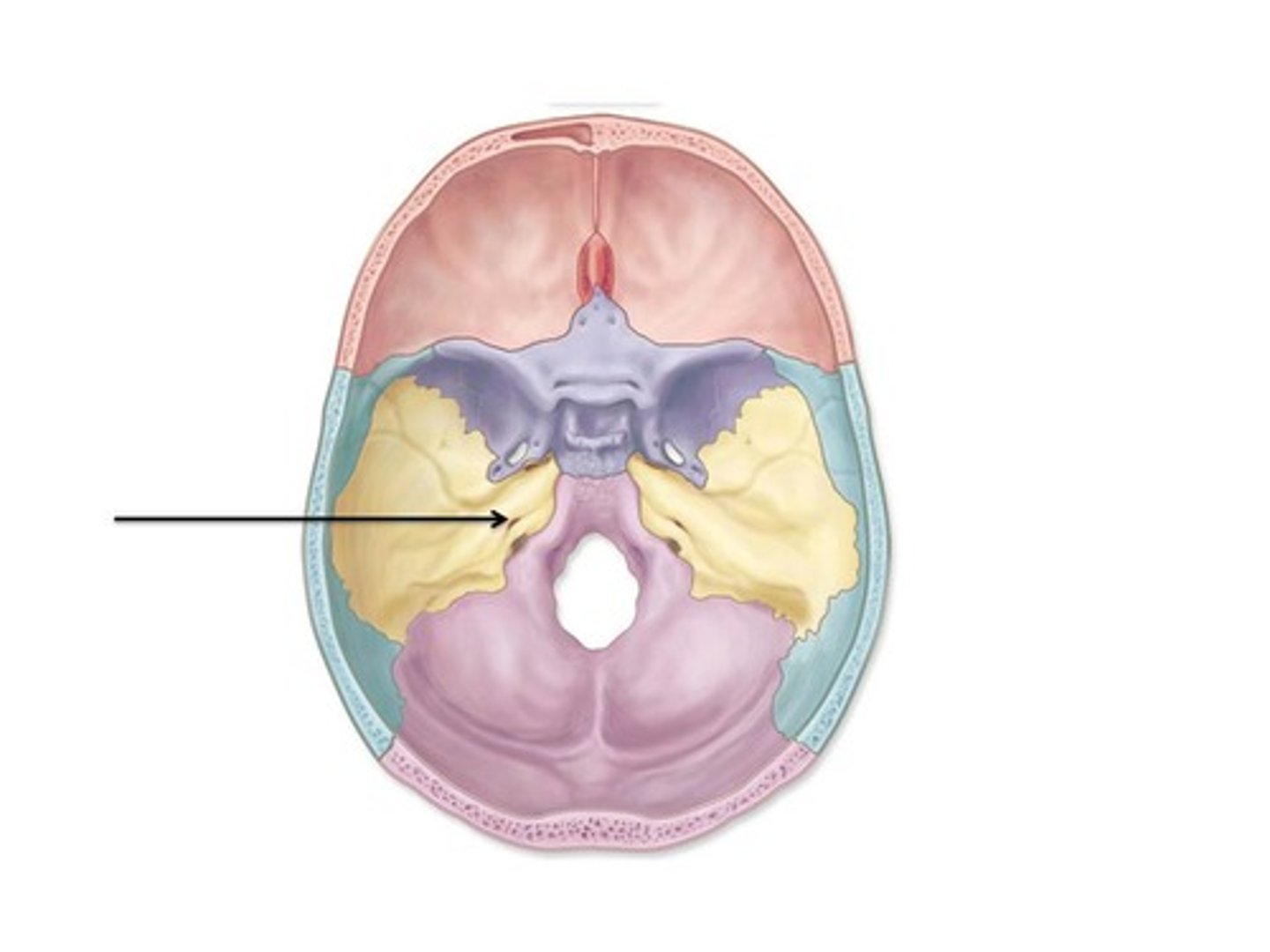
mastoid process
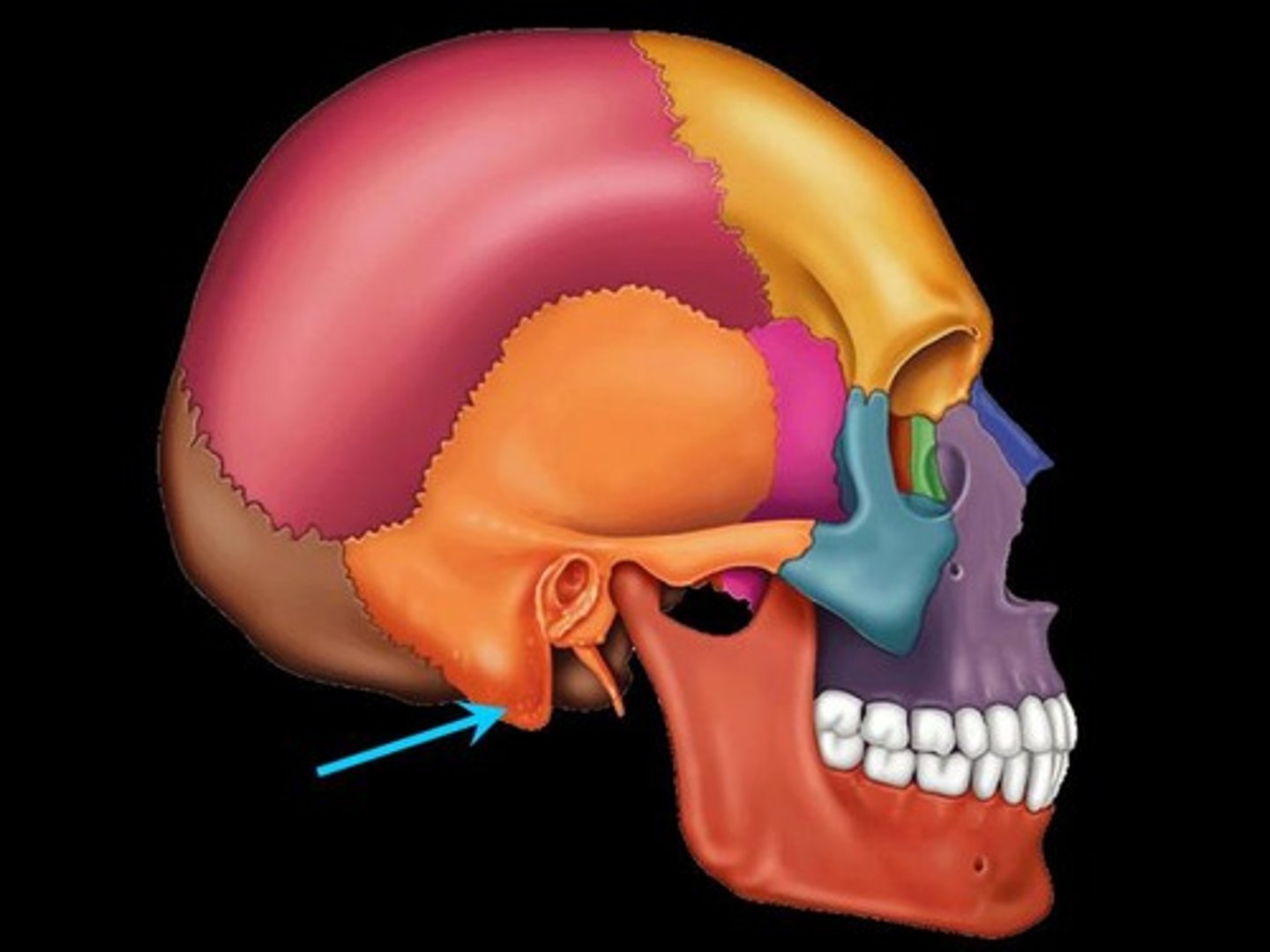
zygomatic process
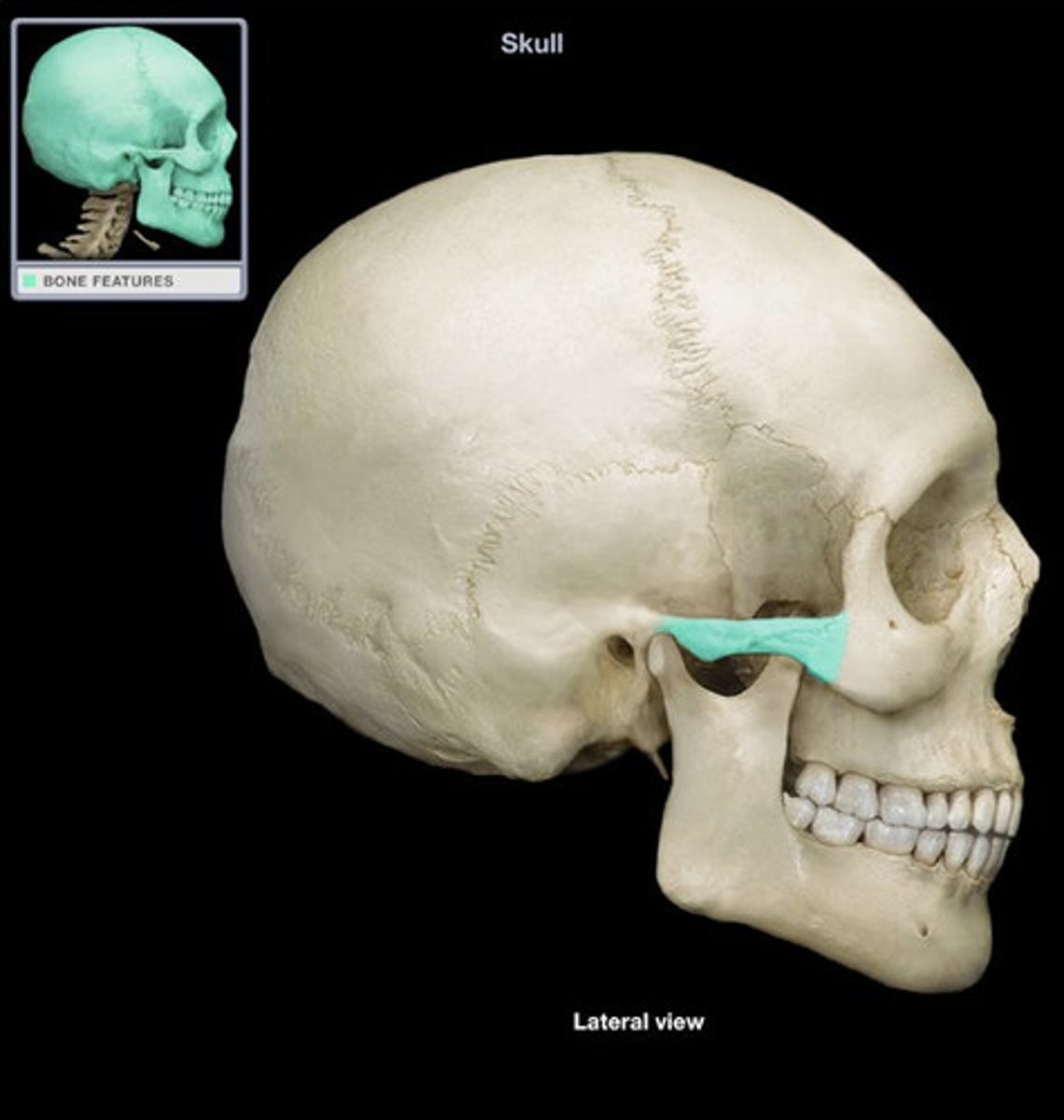
styloid process
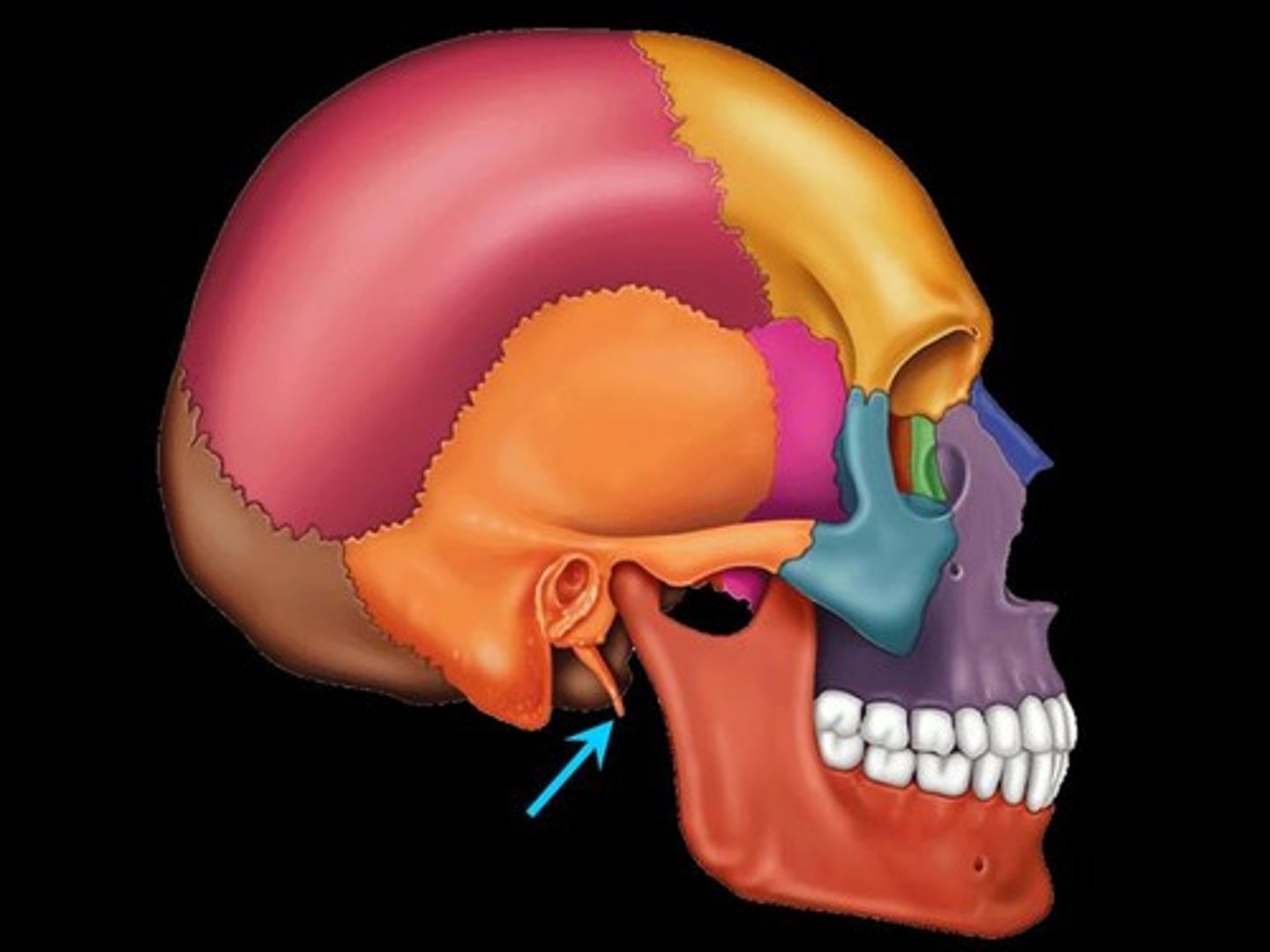
stylomastoid foramen
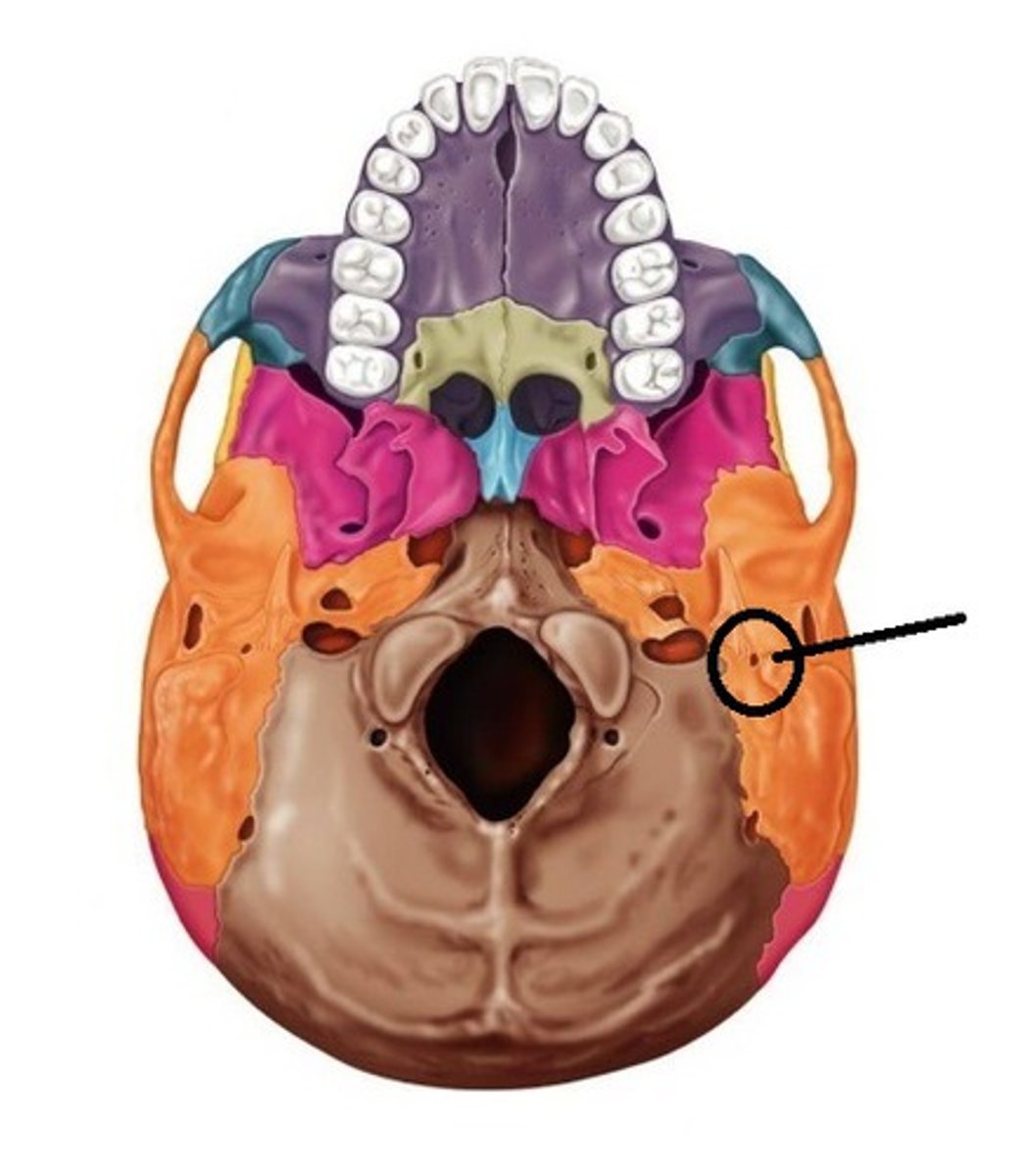
mandibular fossa
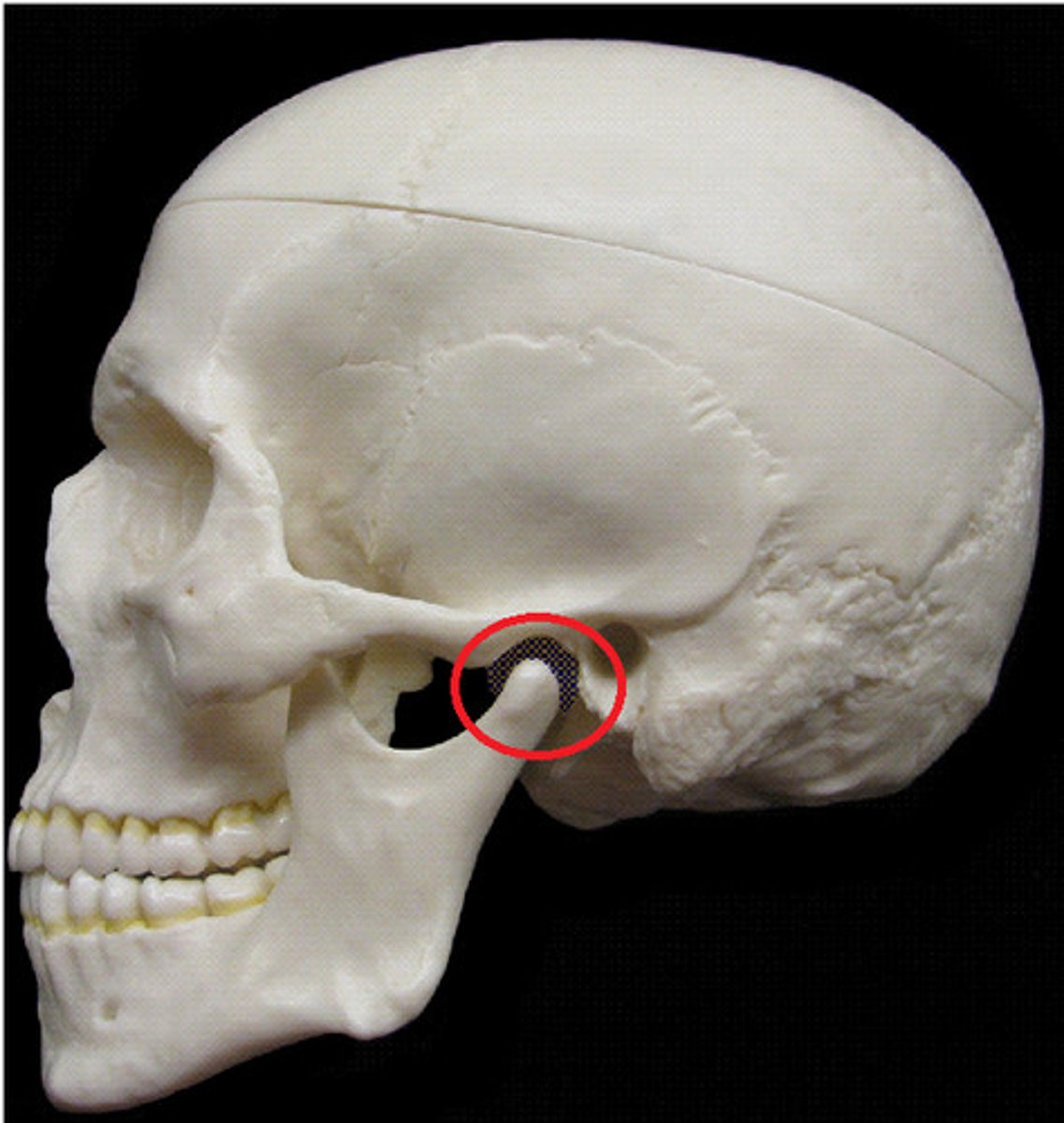
sutural margines of temporal
squamosal and lambdoidal
body of sphenoid
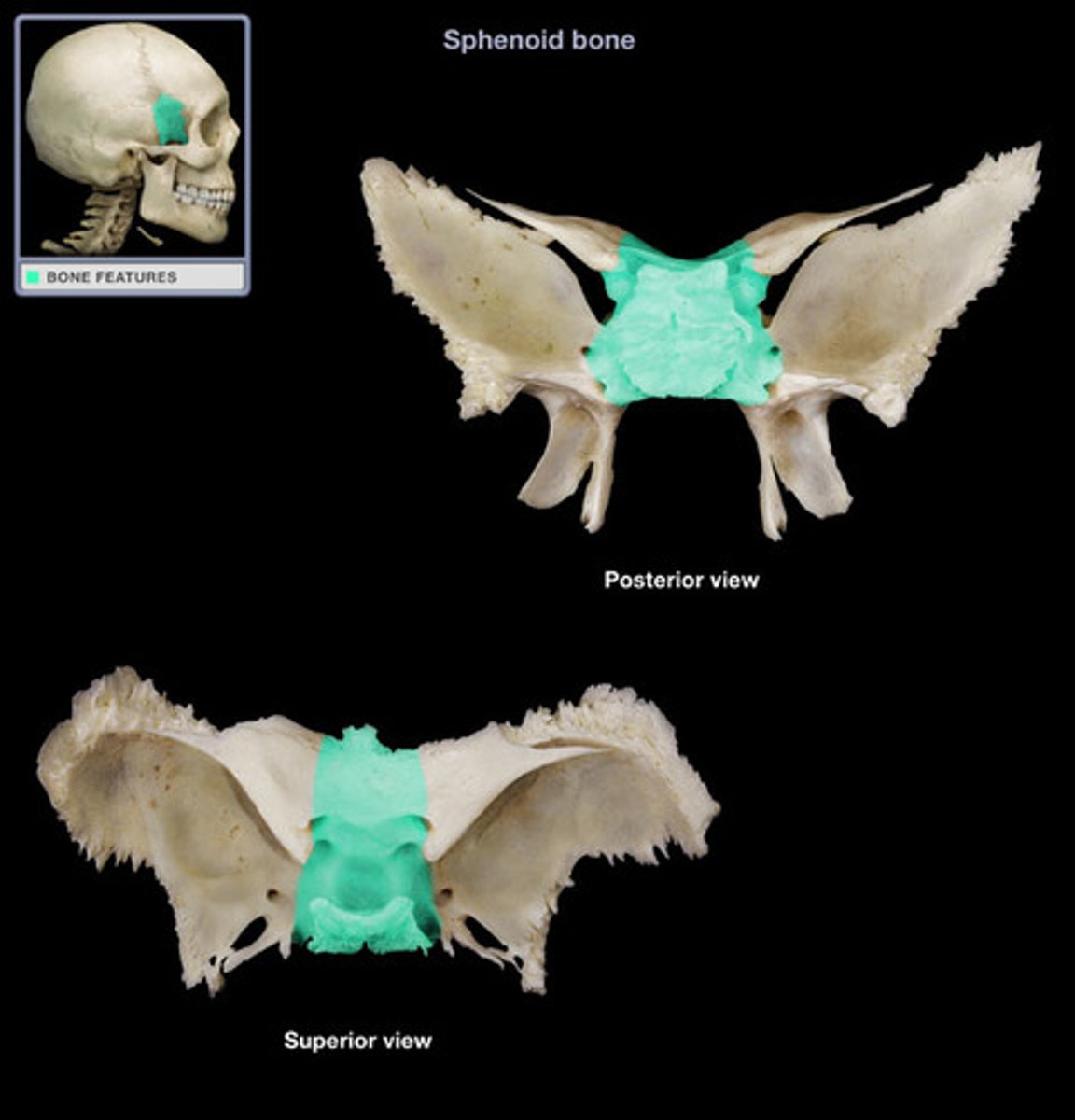
greater wings
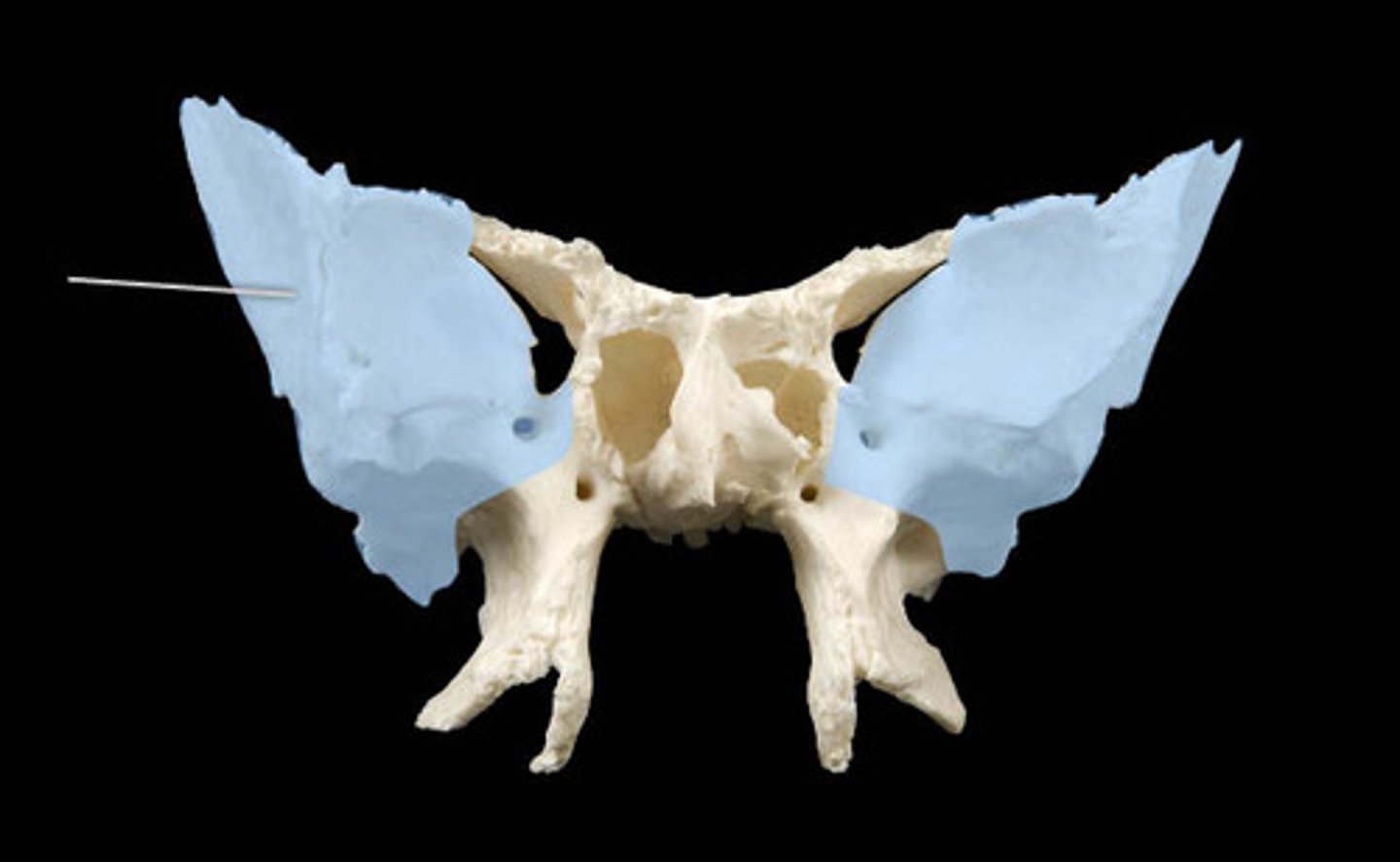
lesser wings
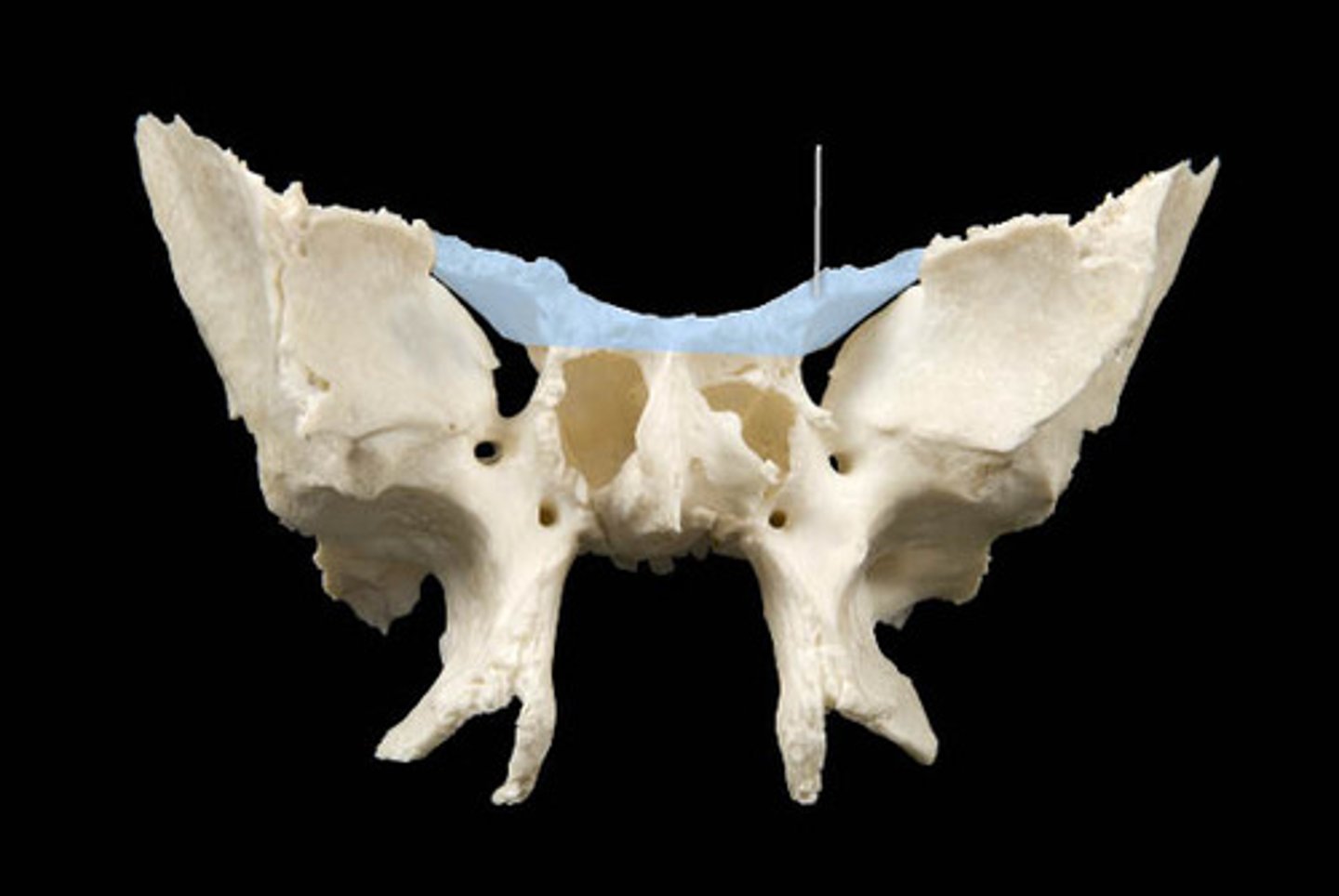
anterior clinoid process
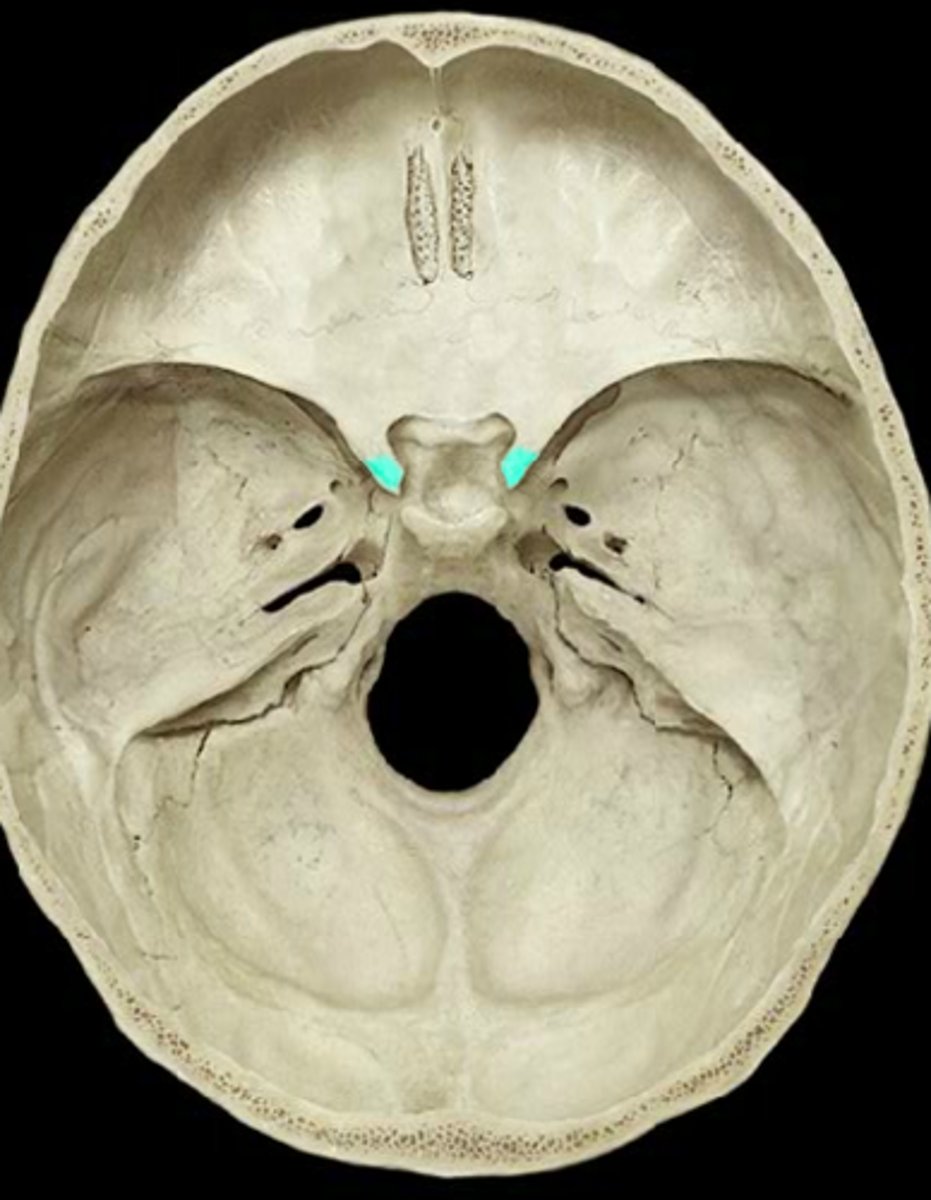
posterior clinoid process
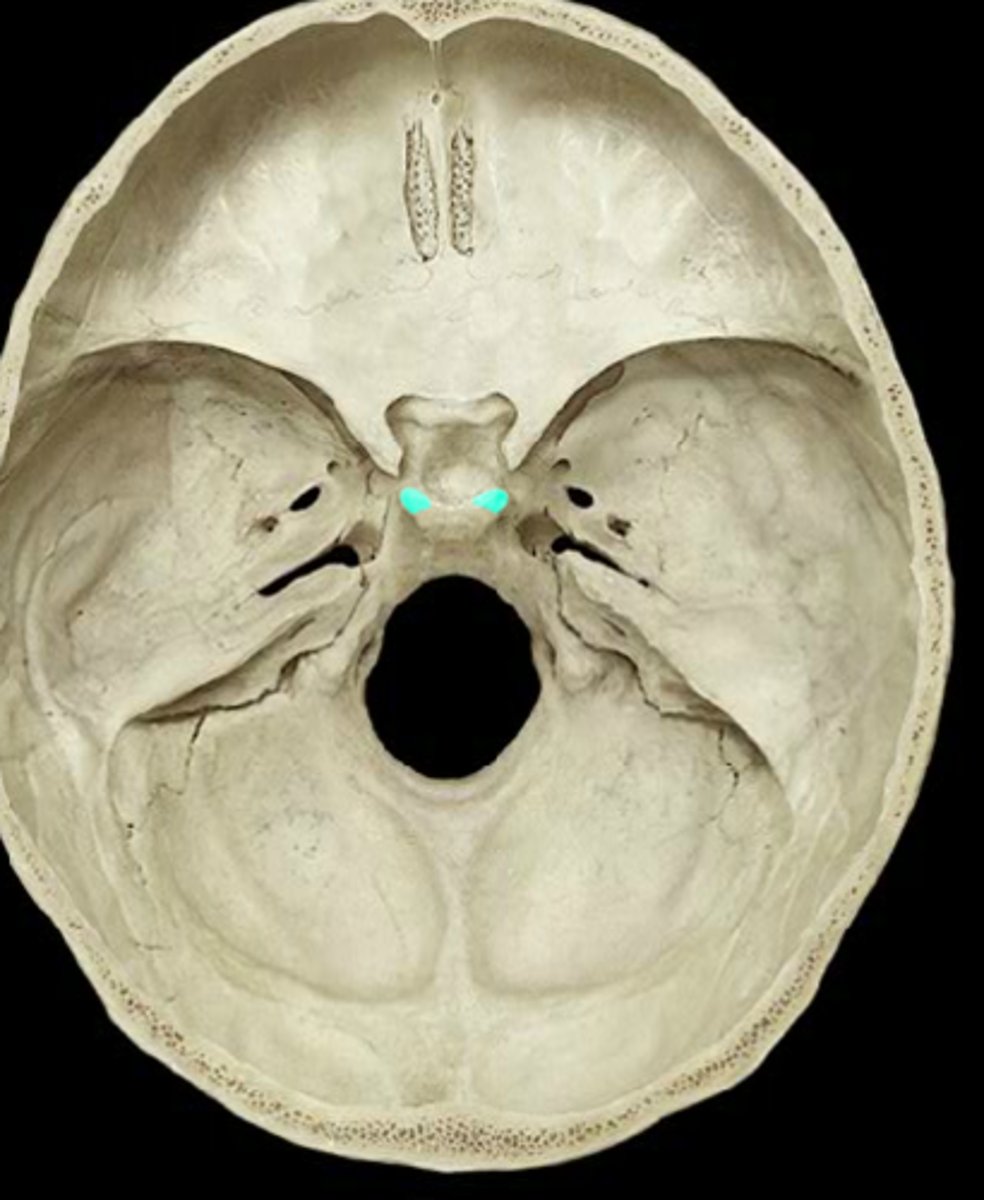
Sella Turcia
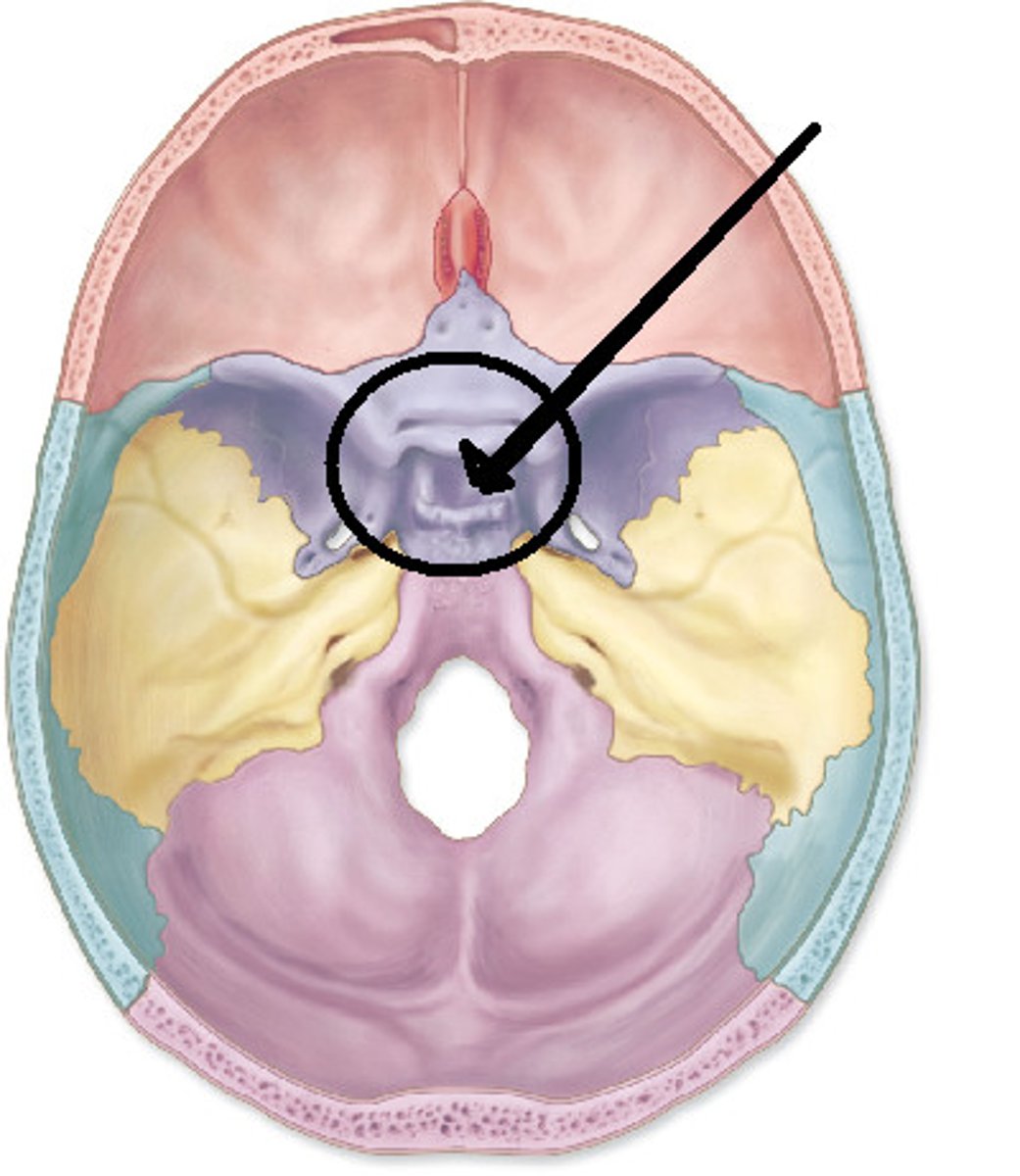
optic foramen/ canal
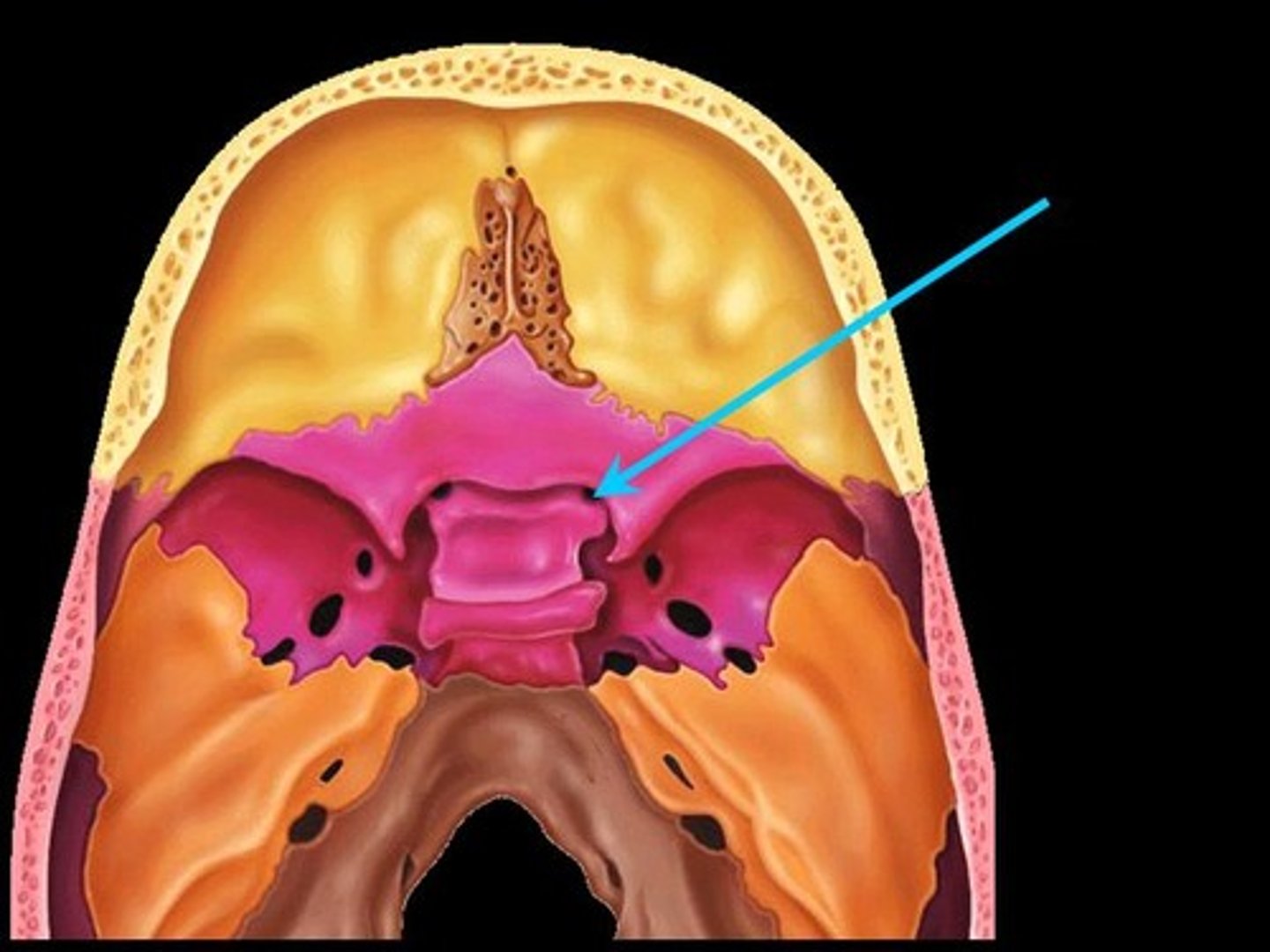
superior and inferior orbital fissures
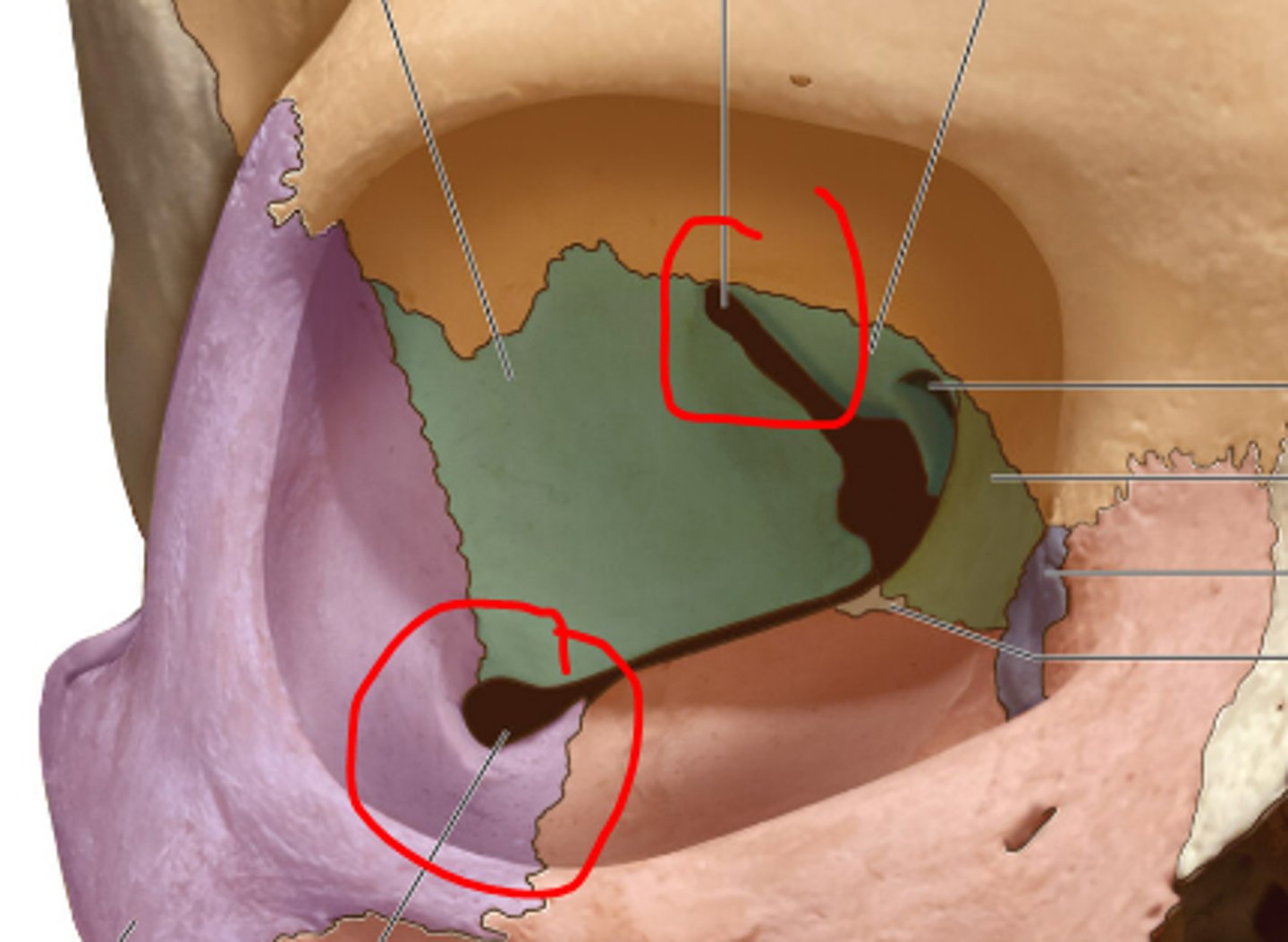
medial and lateral pterygoid plates
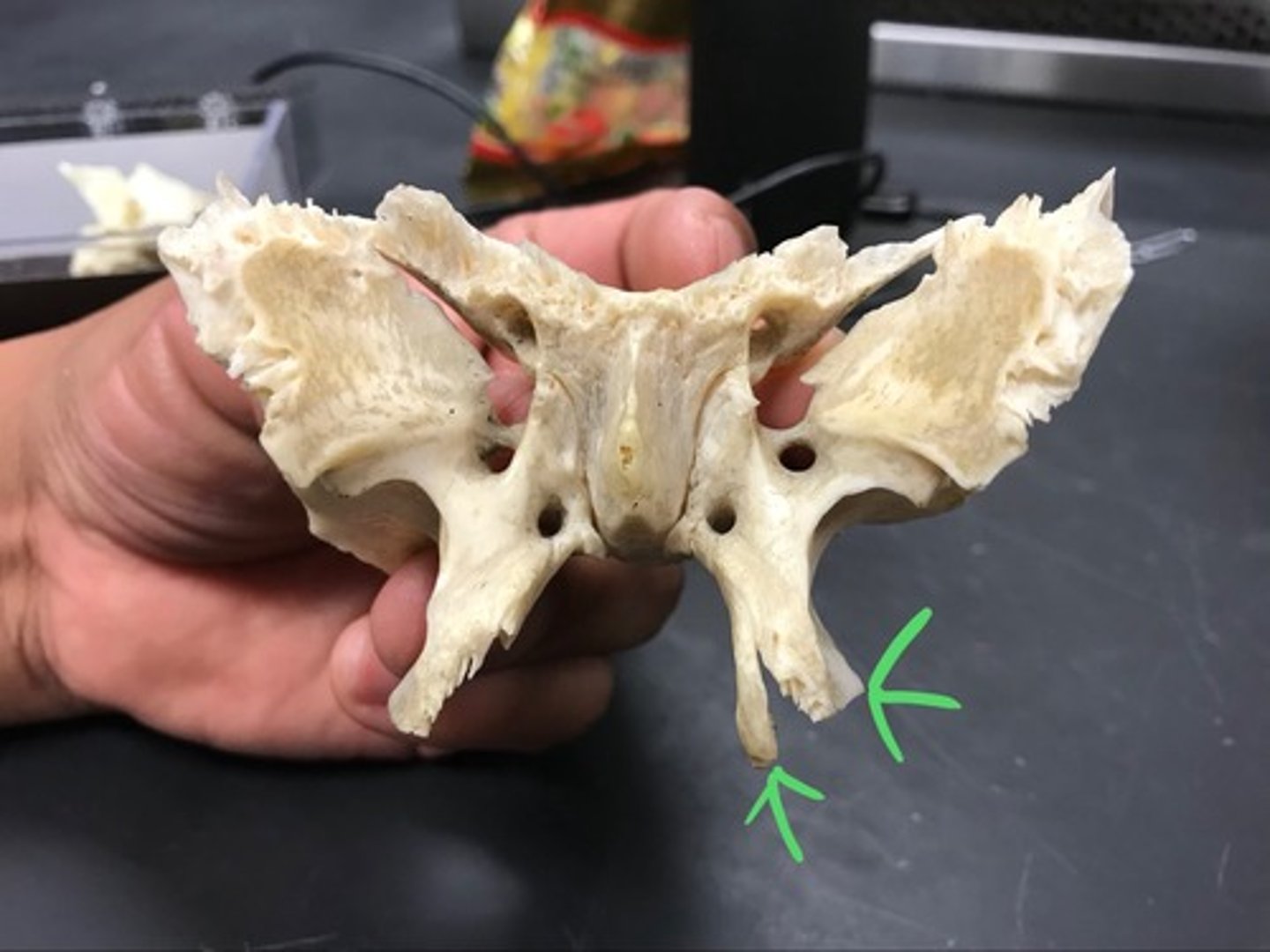
sphenoidal sinus
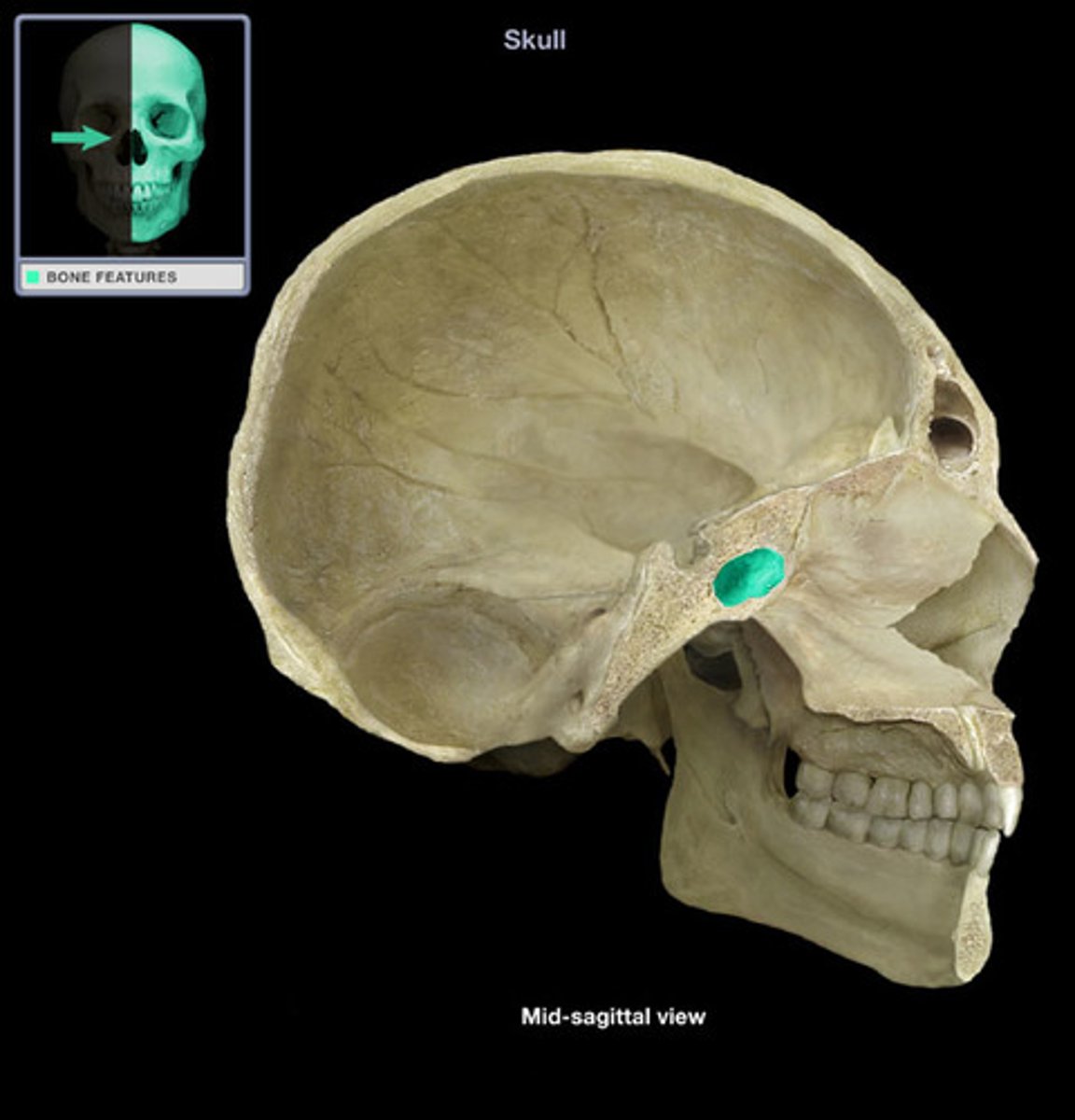
crista galli
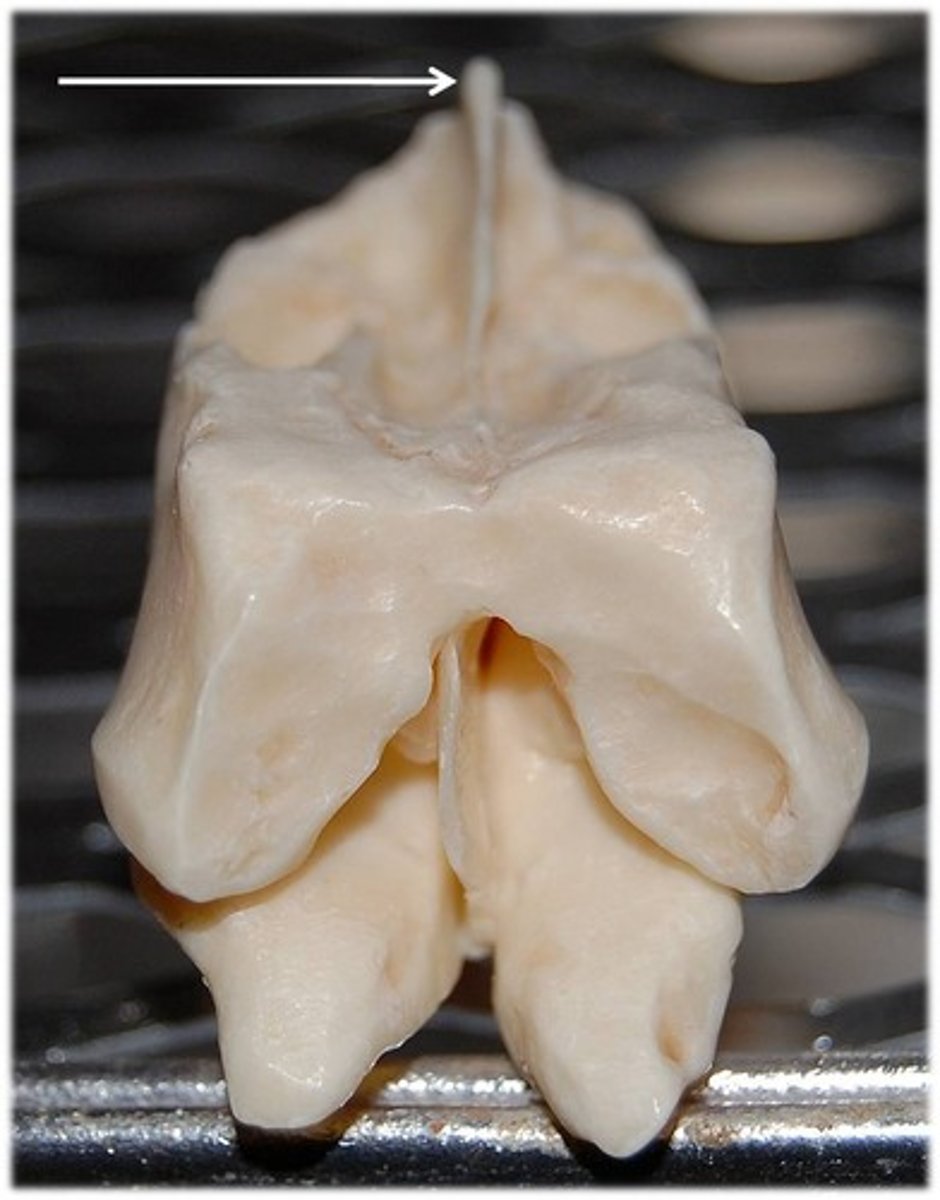
cribriform plate
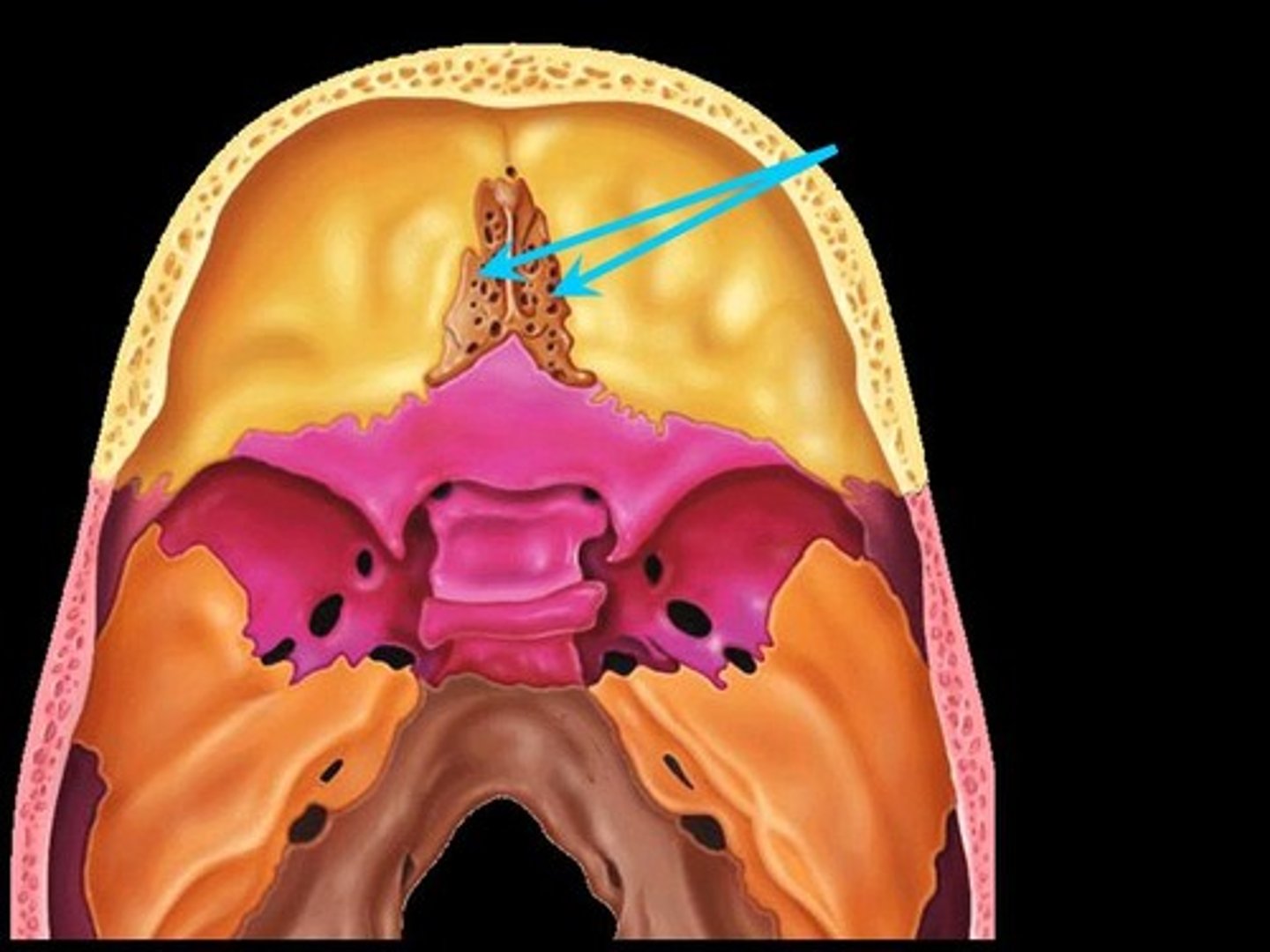
perpendicular plate
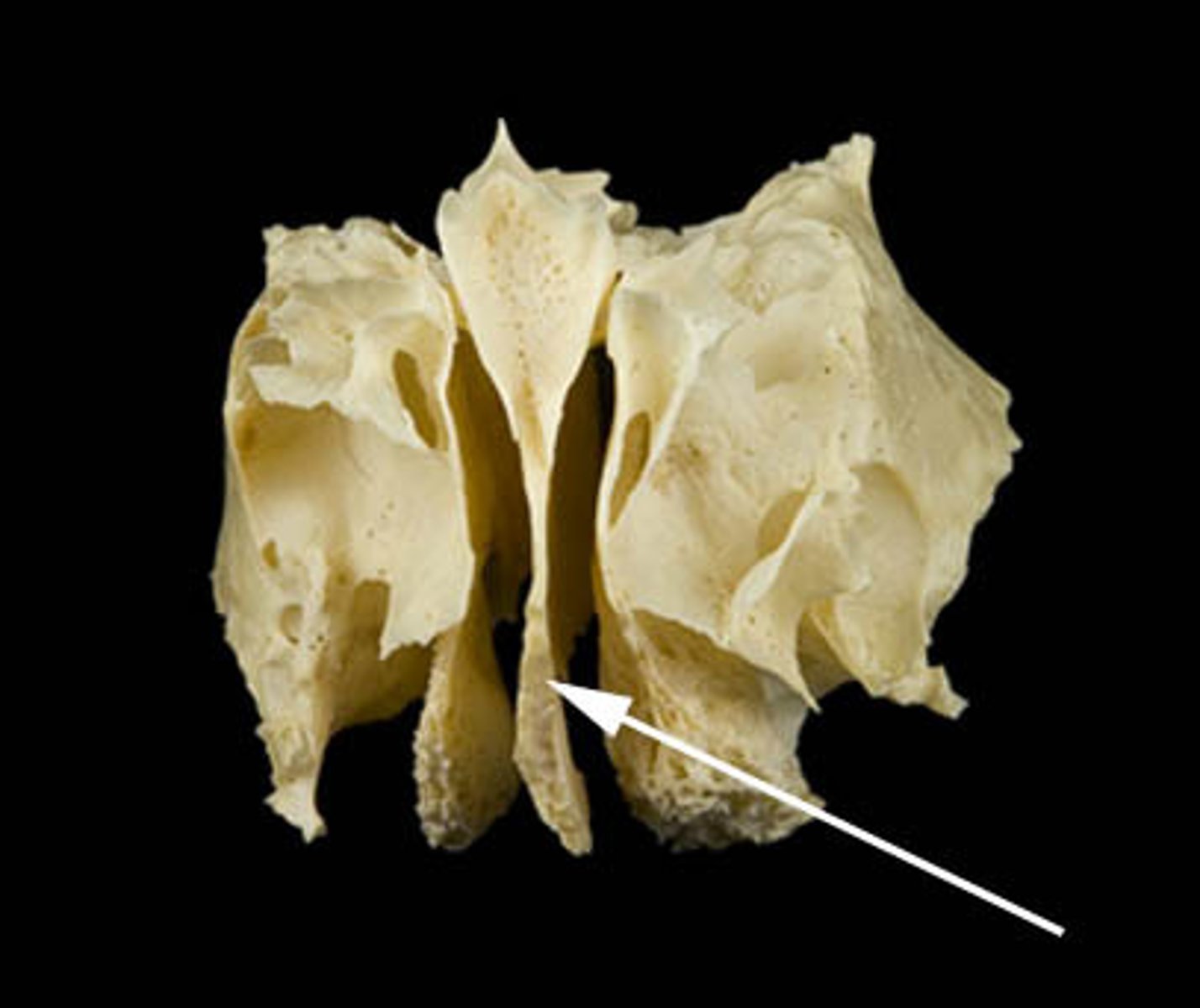
perpendicular plate
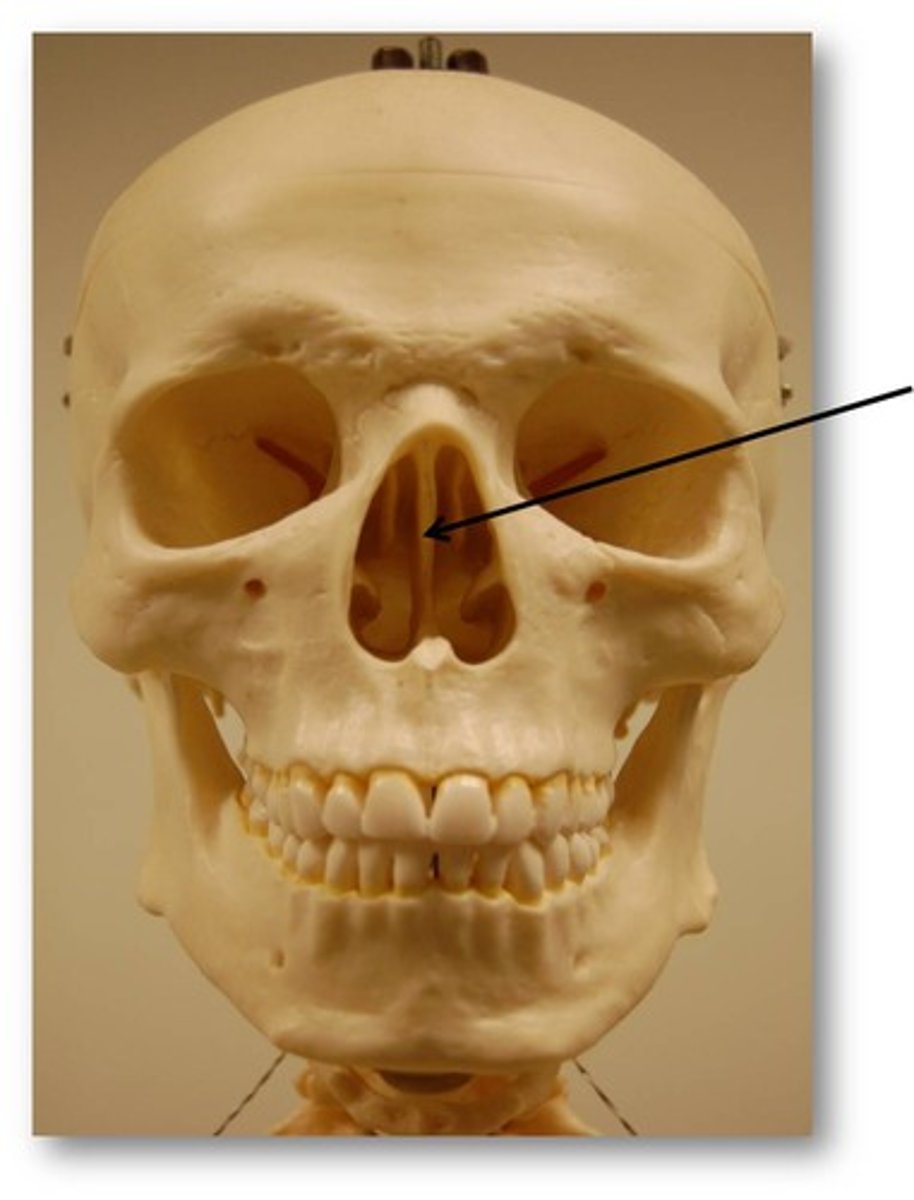
middle and upper nasal concha
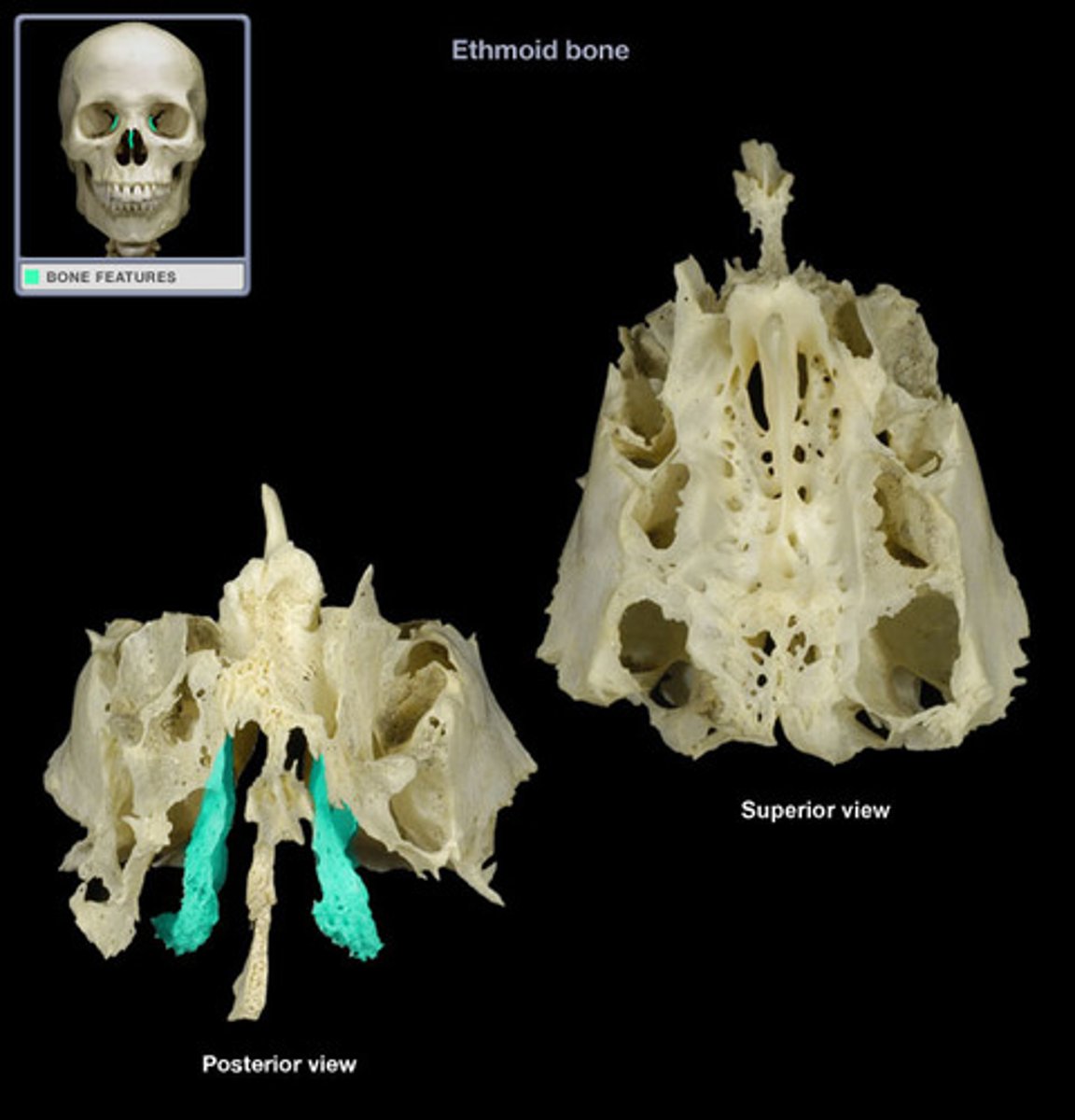
Foramen rotundum
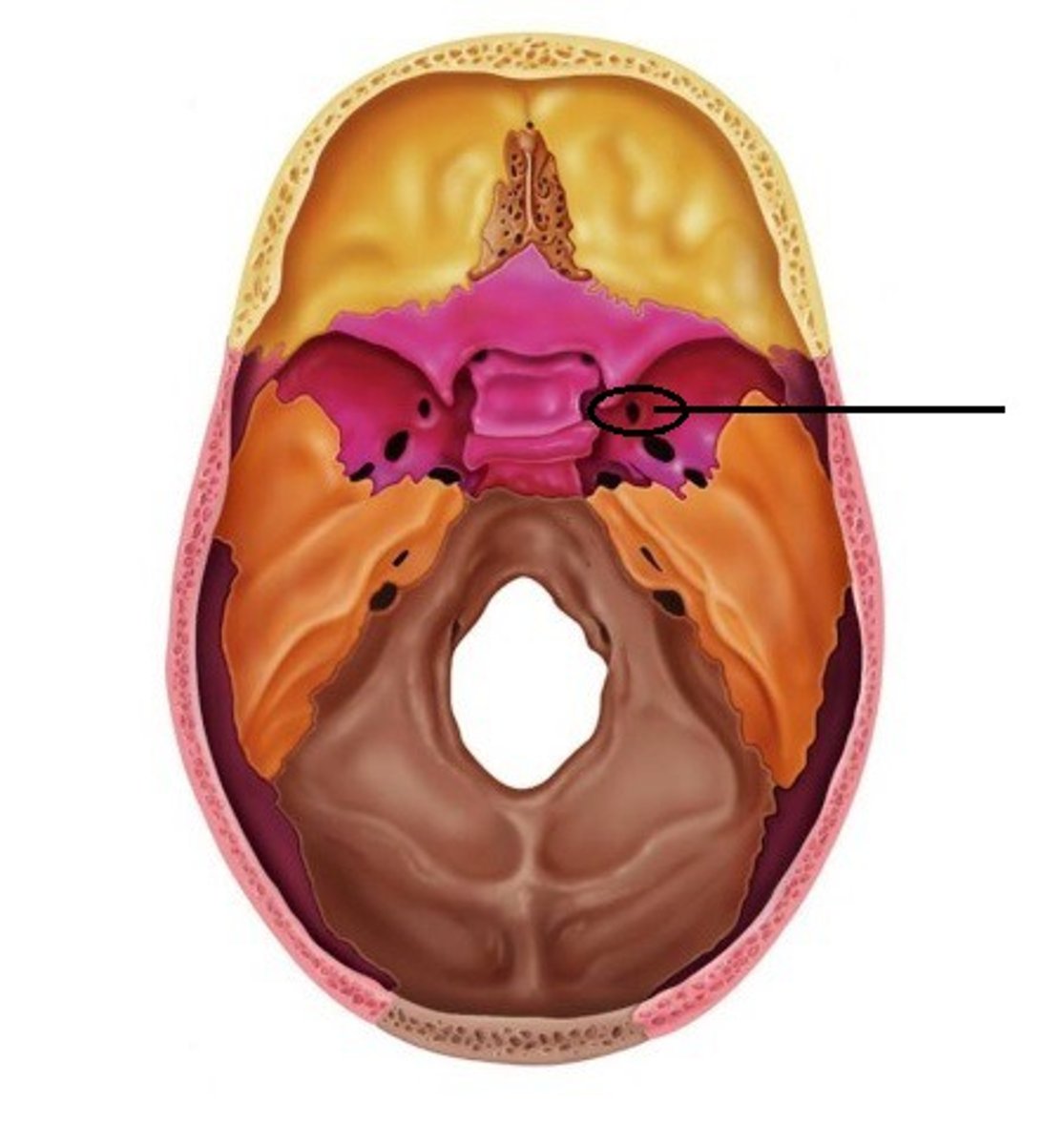
foramen ovale
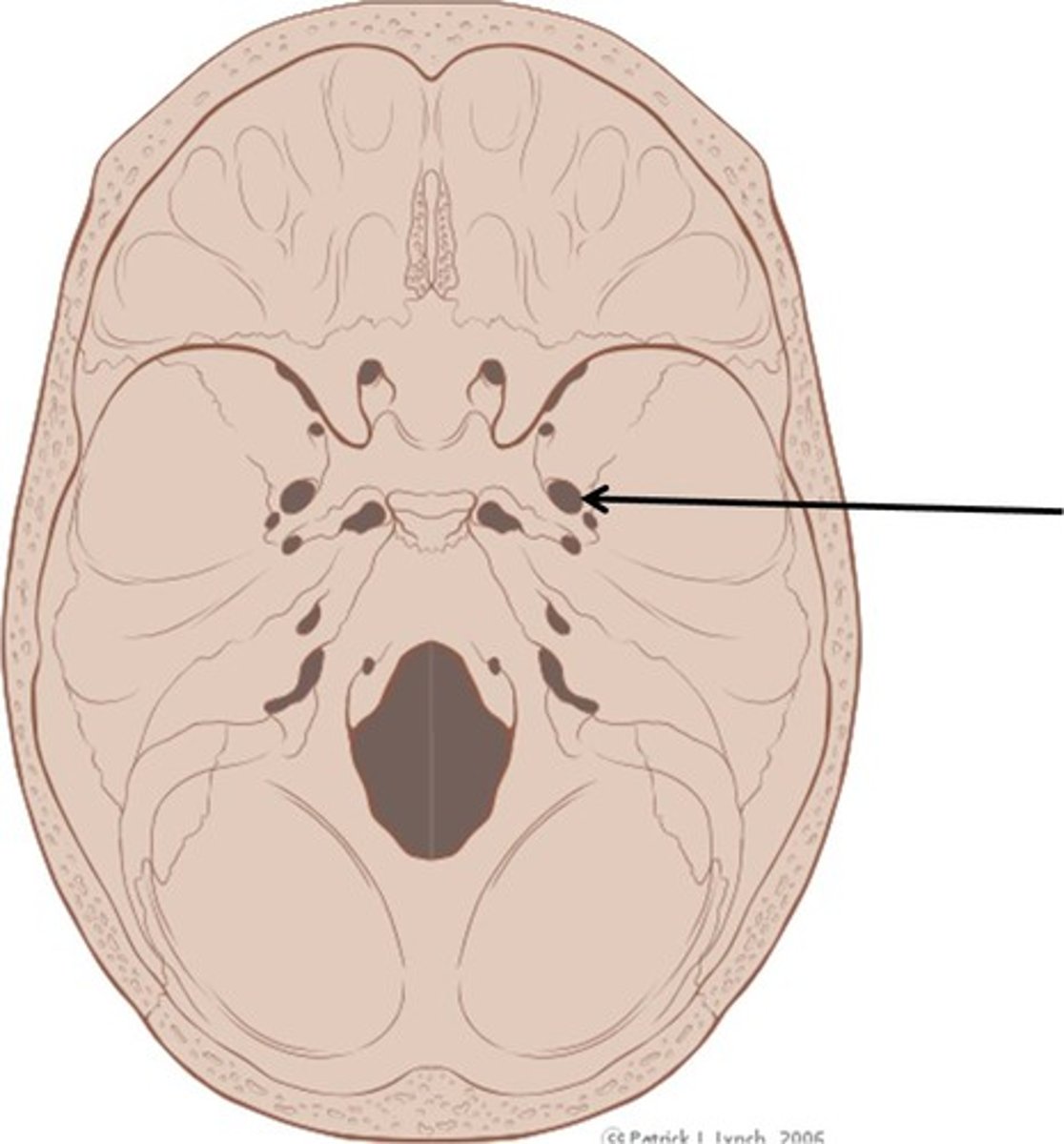
foramen spinosum
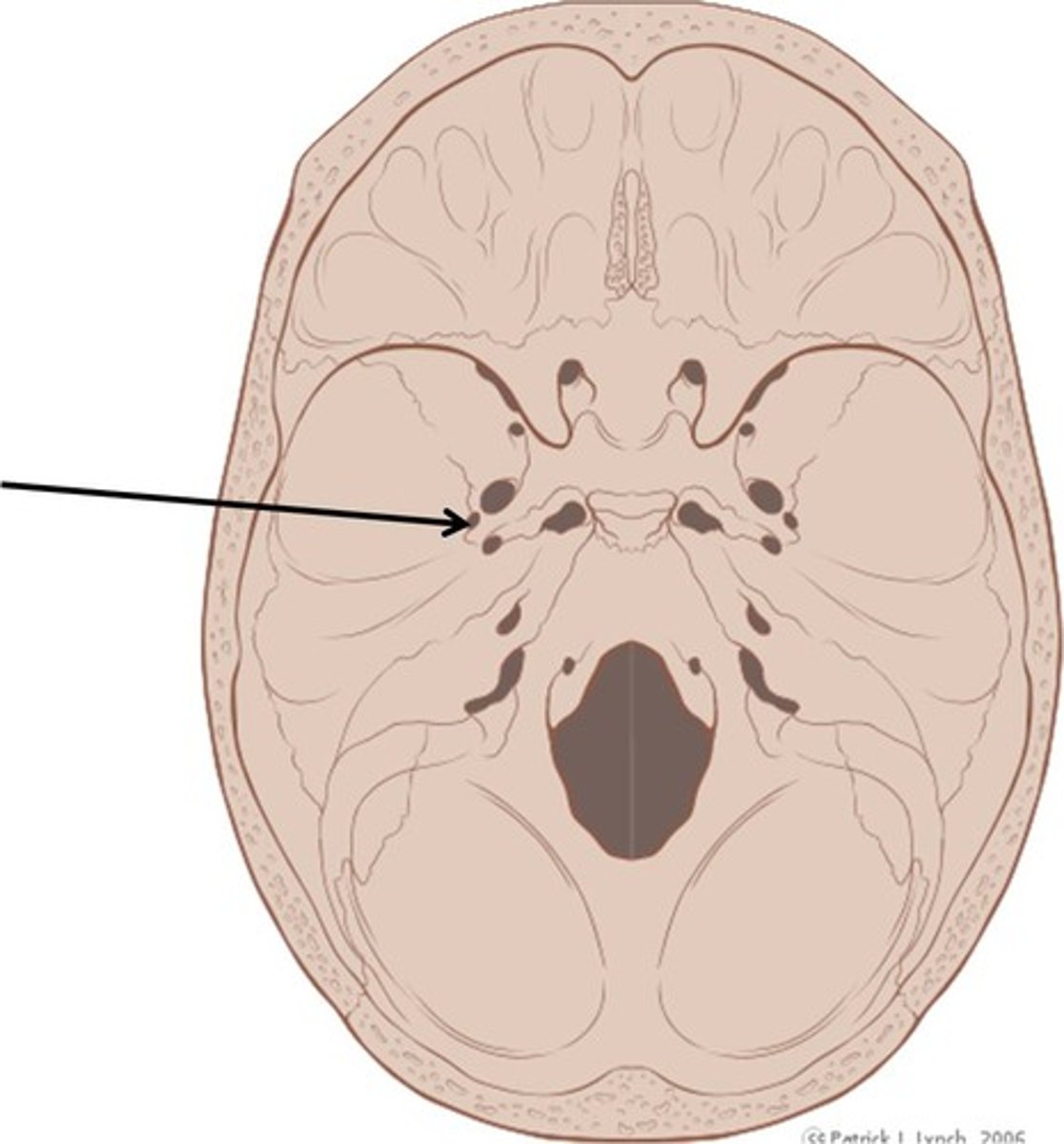
foramen lacerum
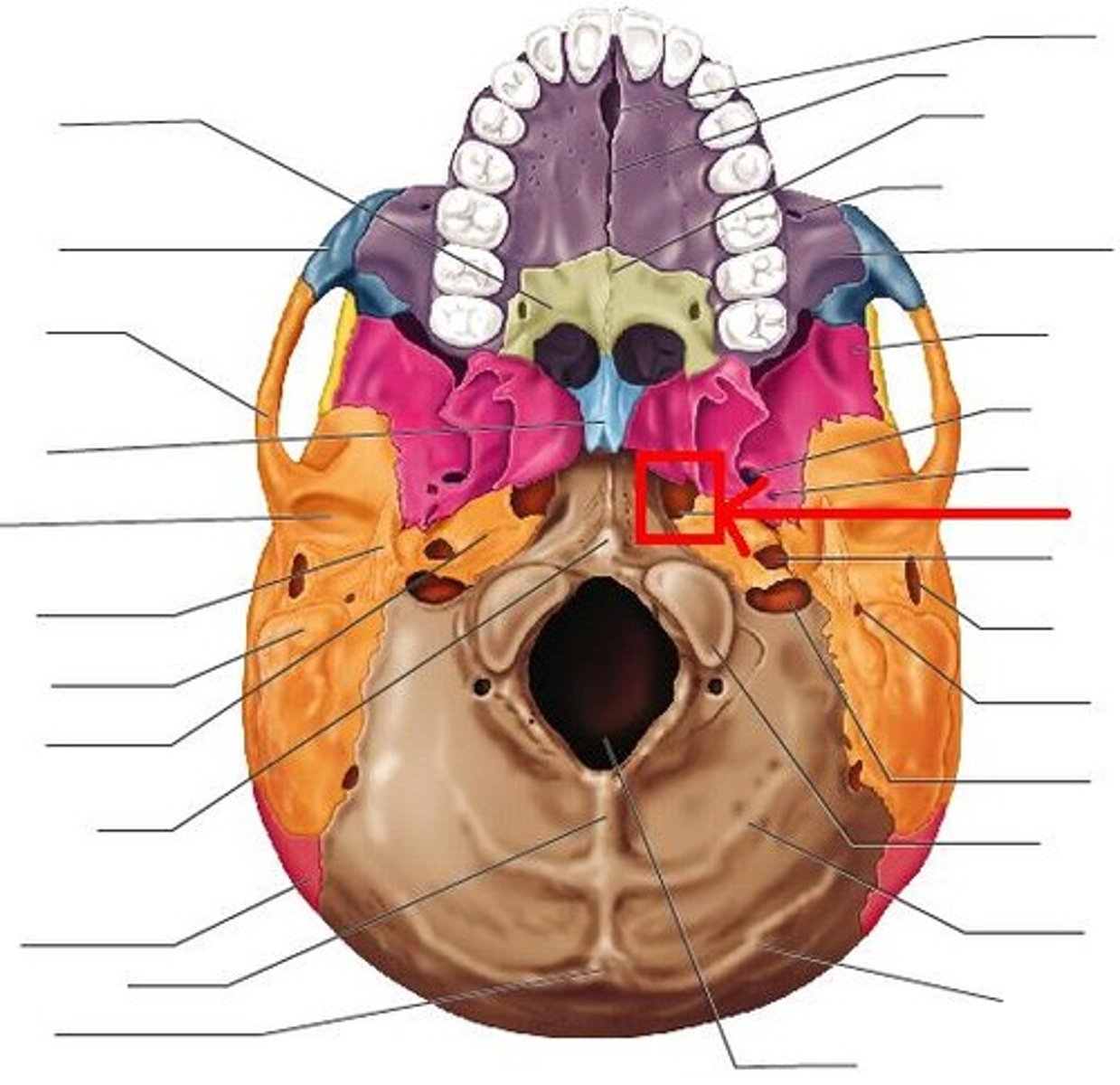
what does foramen lacerum do
drains tears
carotid canal
you can only see it from the outside of the skull
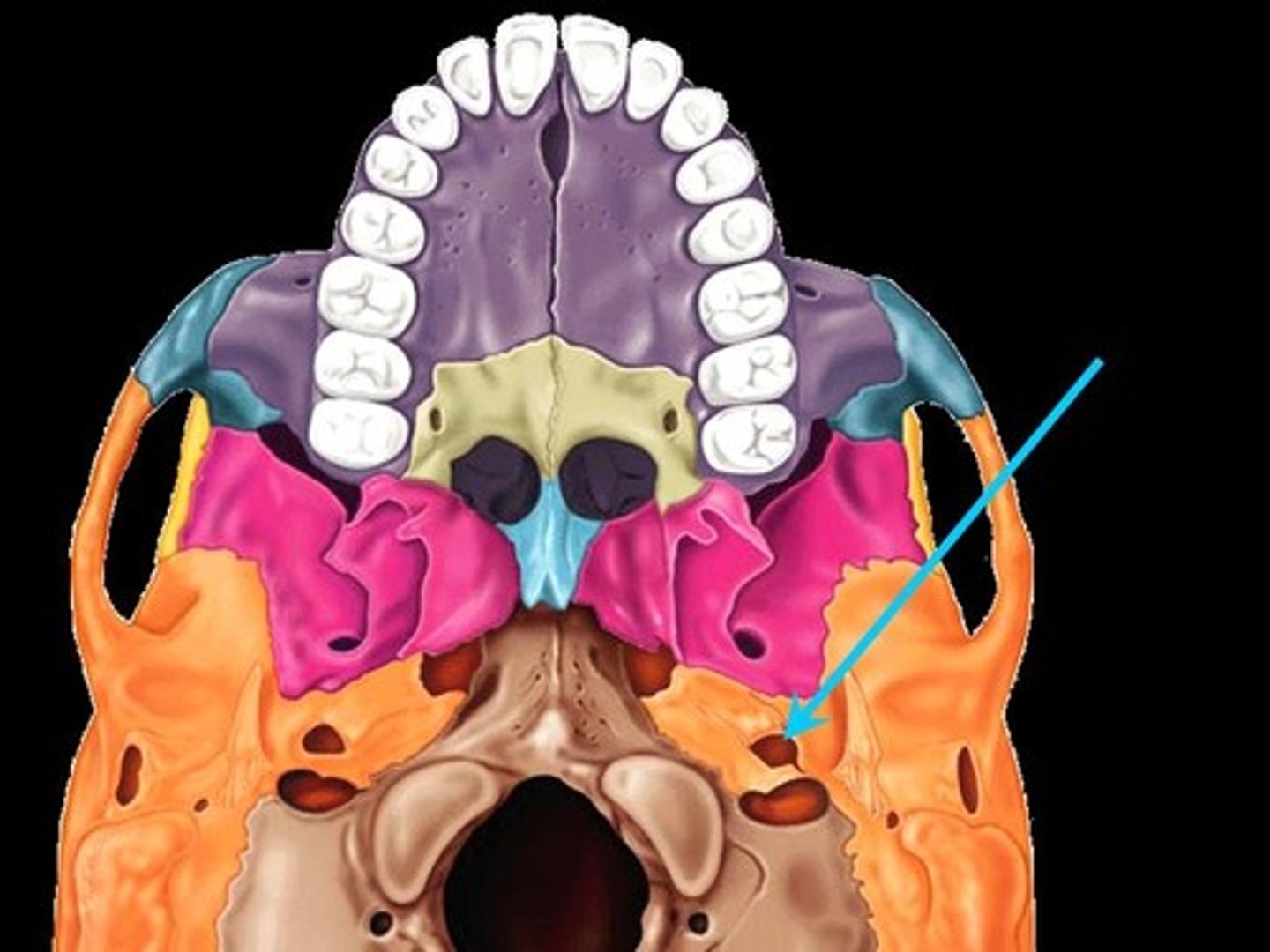
jugular foramen
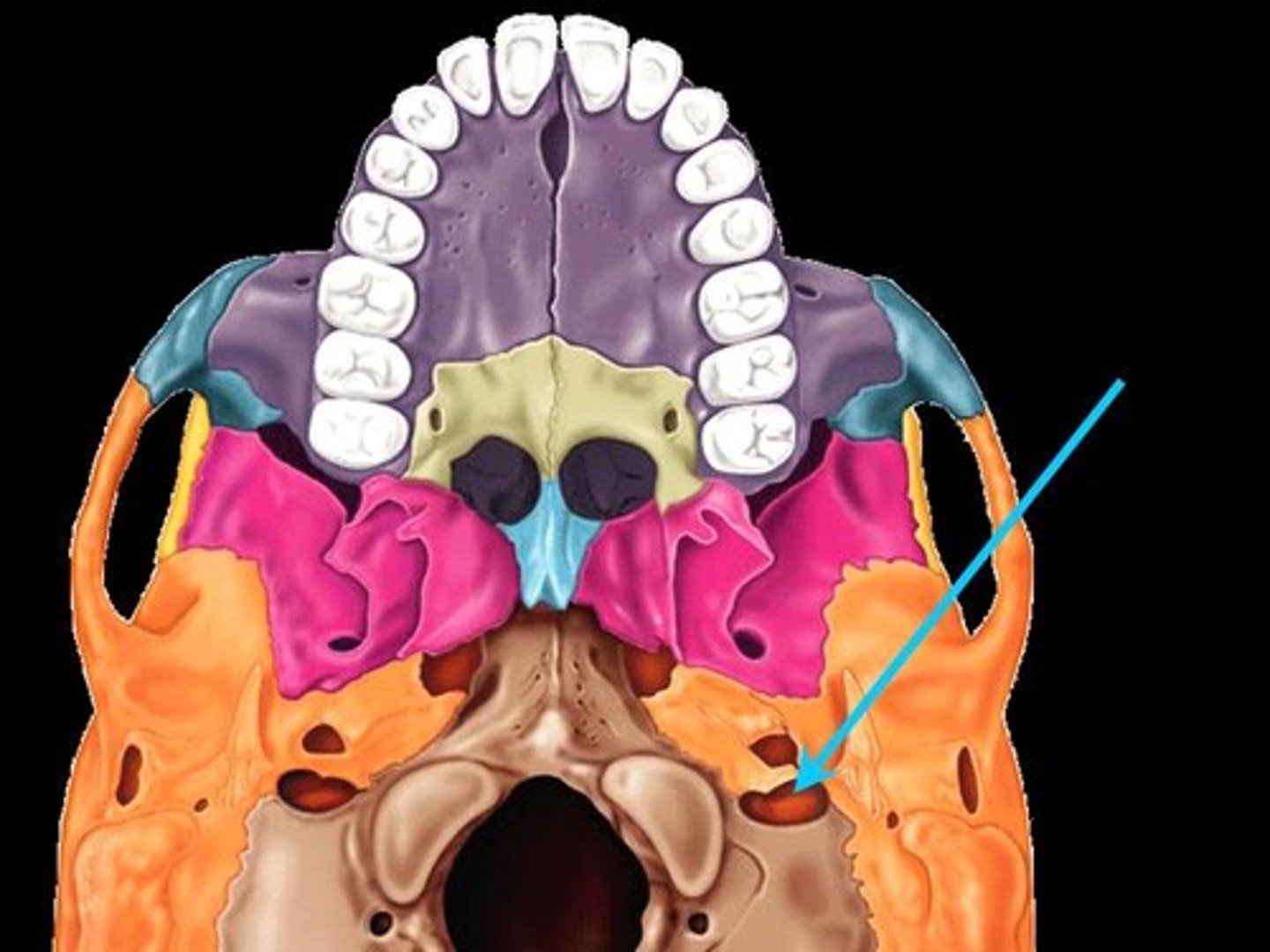
incisive foramen
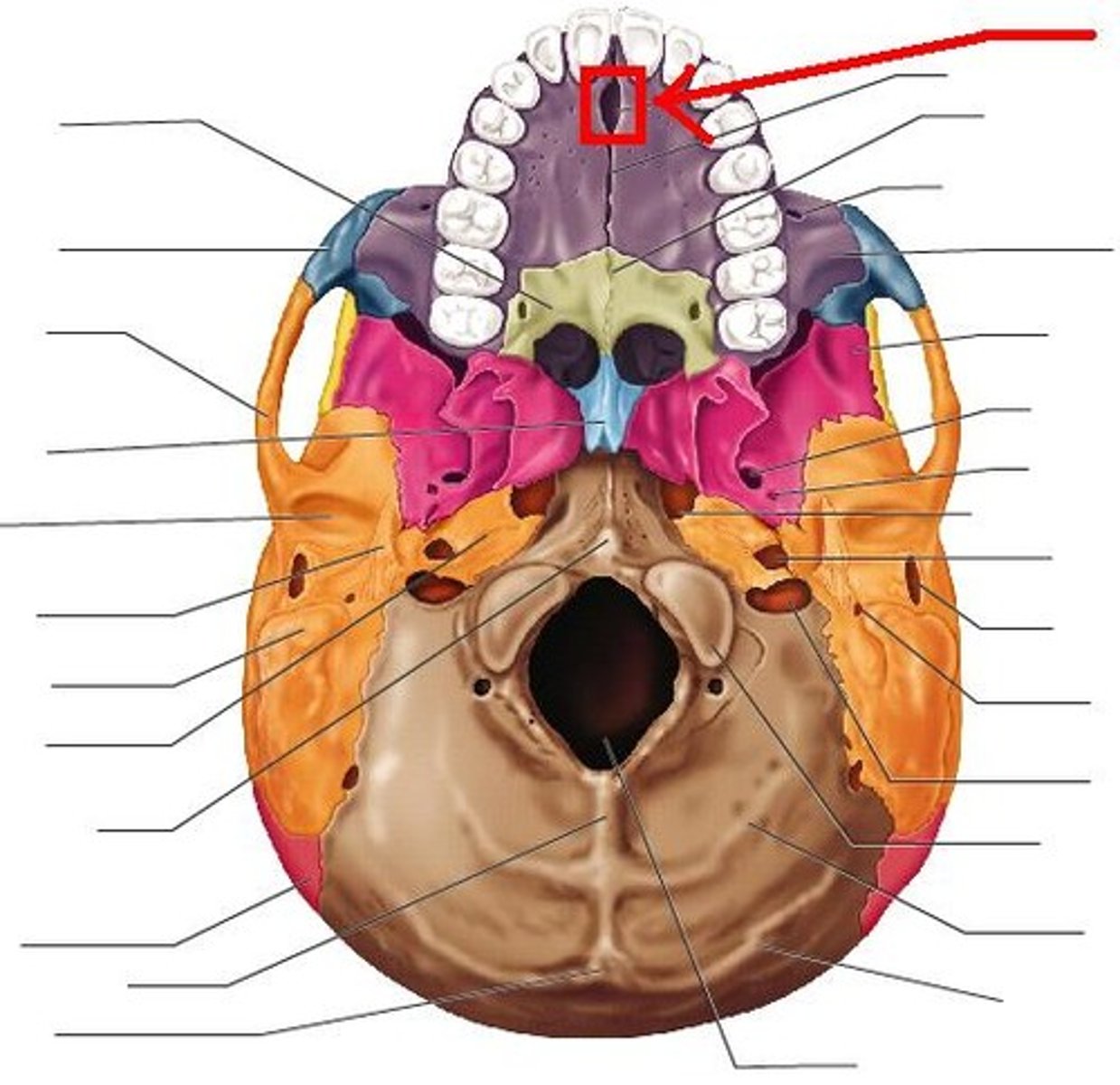
infraorbital foramen
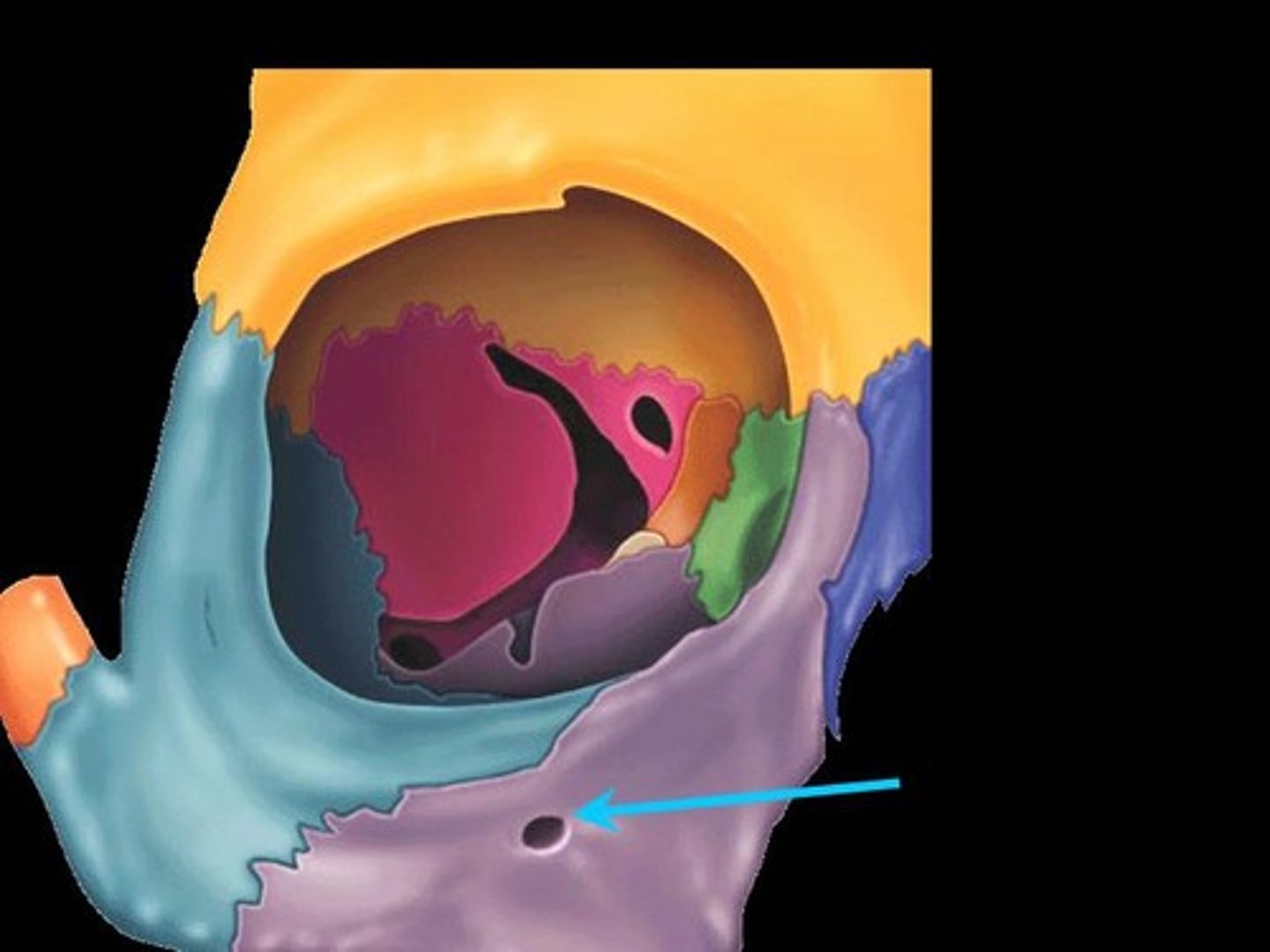
inferior orbital fissure
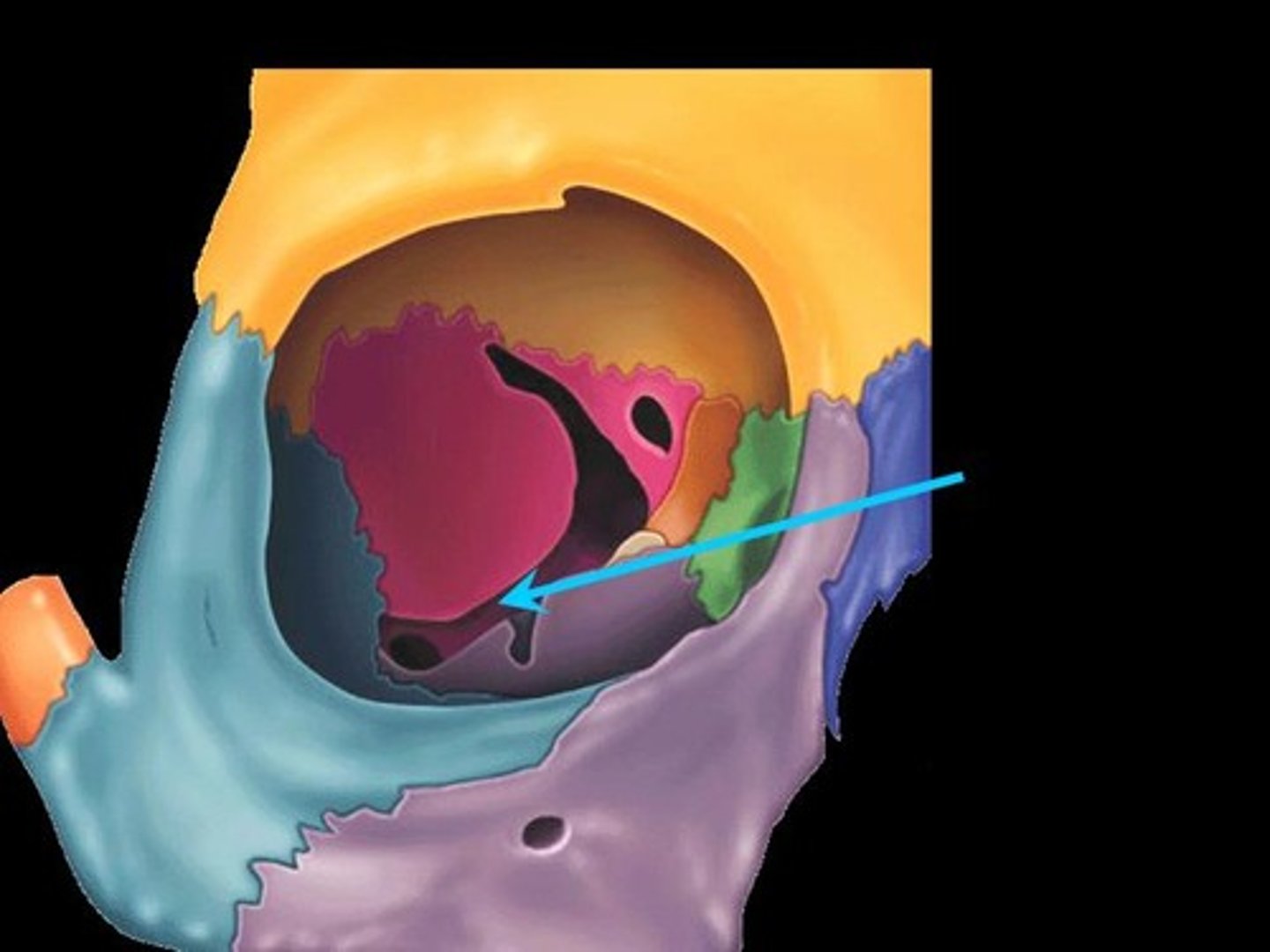
anterior nasal spine
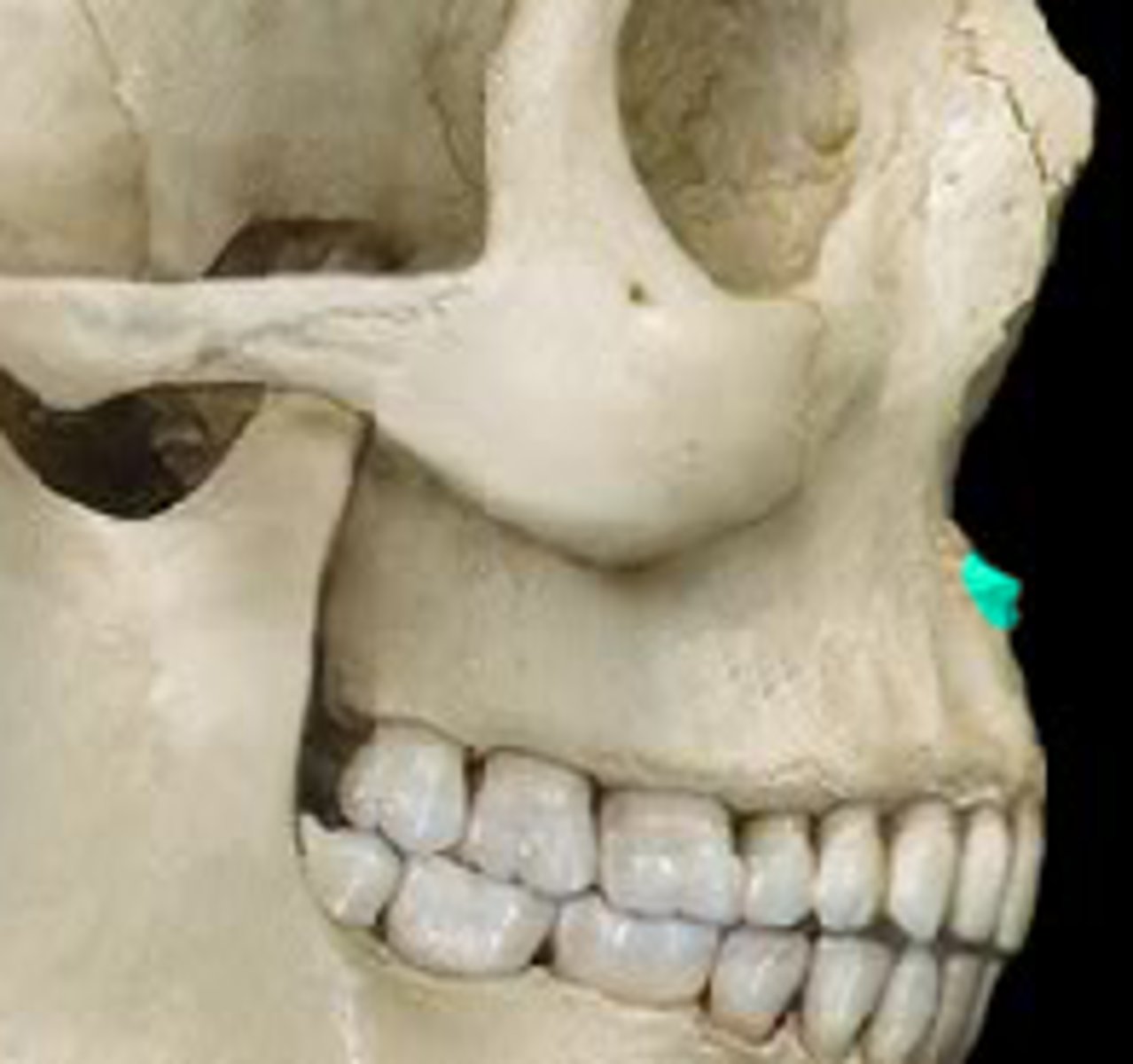
palatine bones
create hard palate, separate nasal and oral canal
maxillae
upper jaw area
alveolar process
holds teeth in place
frontal process
articulates with frontal bone
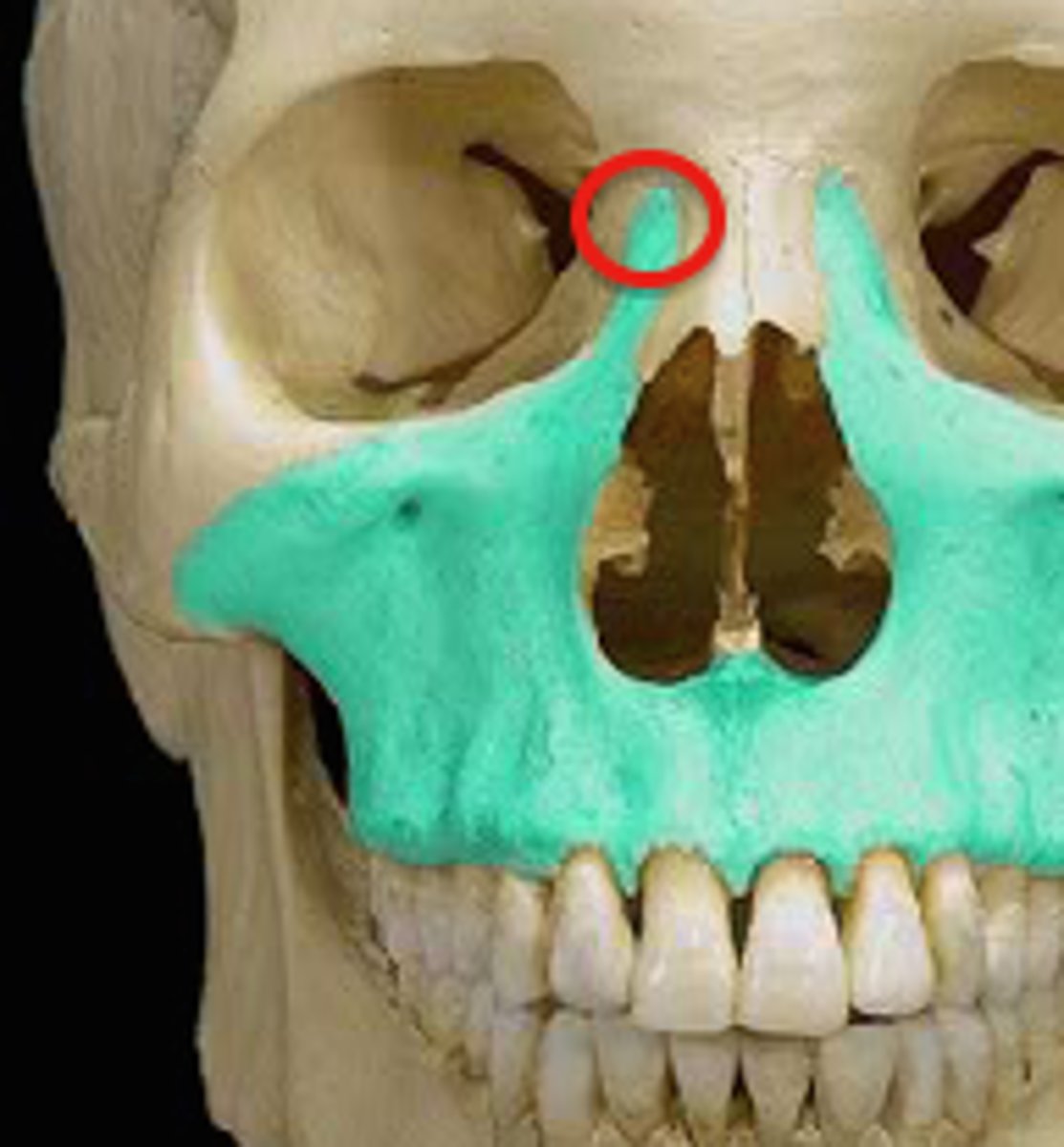
palatine bones
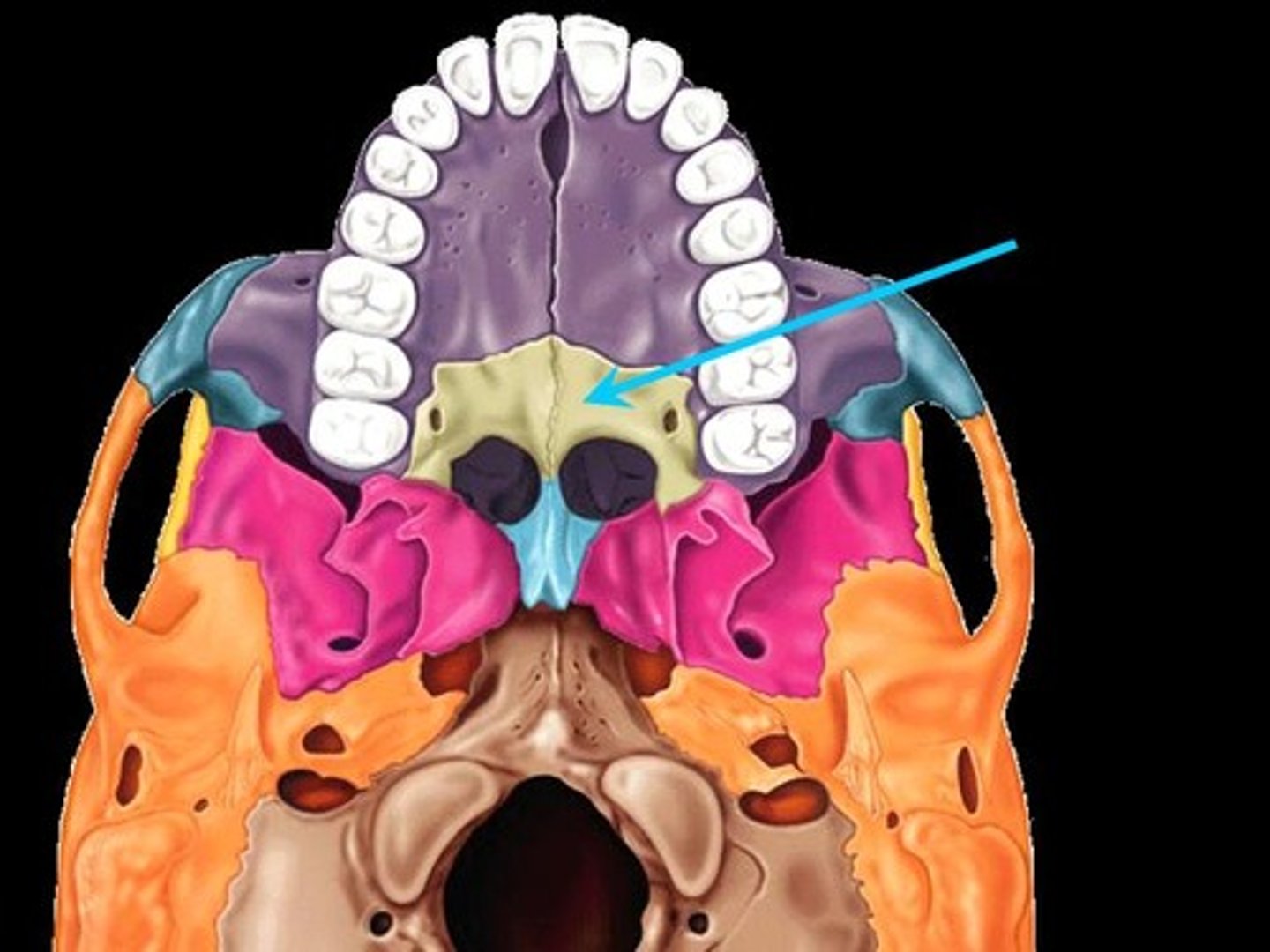
lacrimal groove
holds tear ducts
